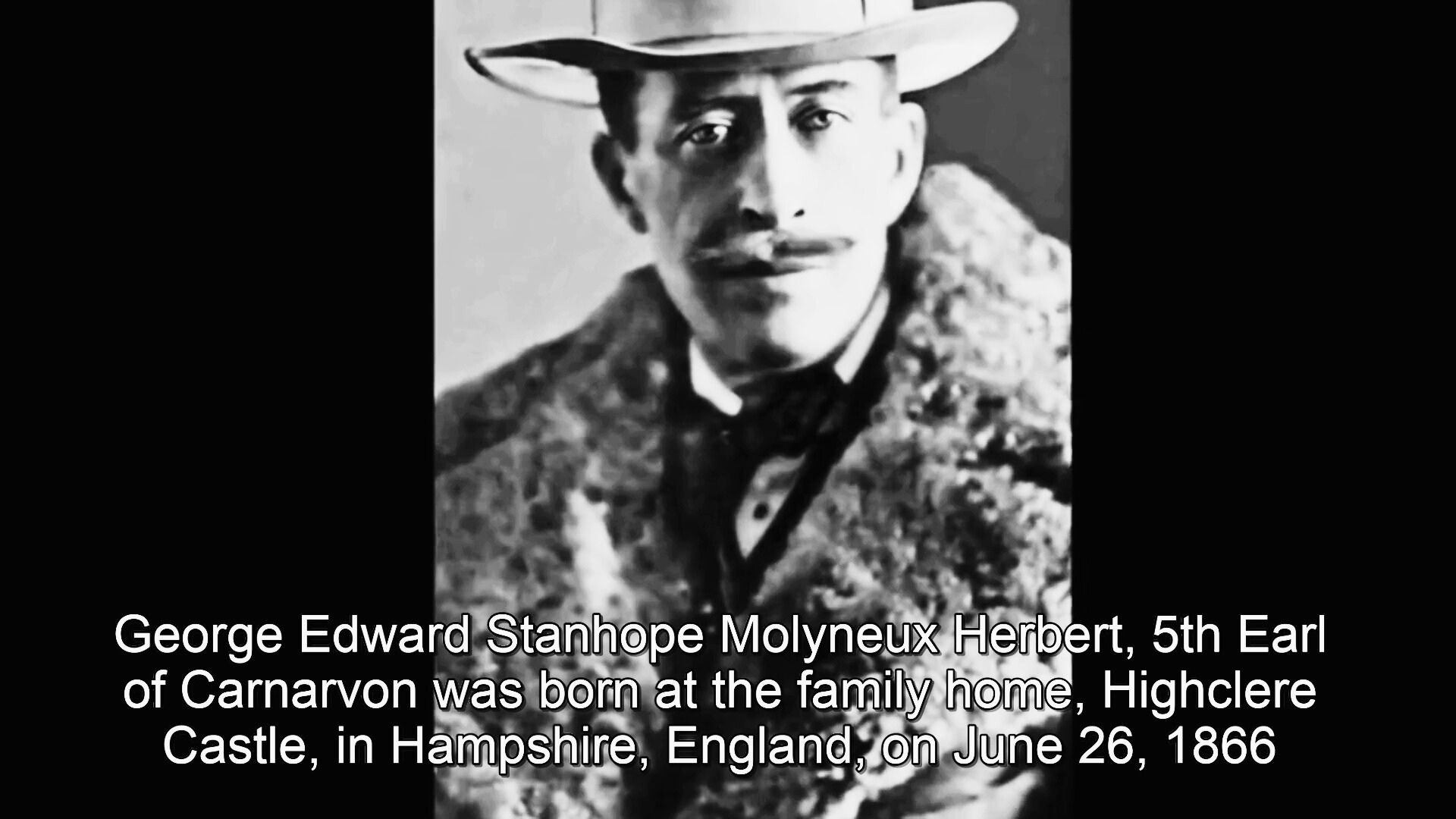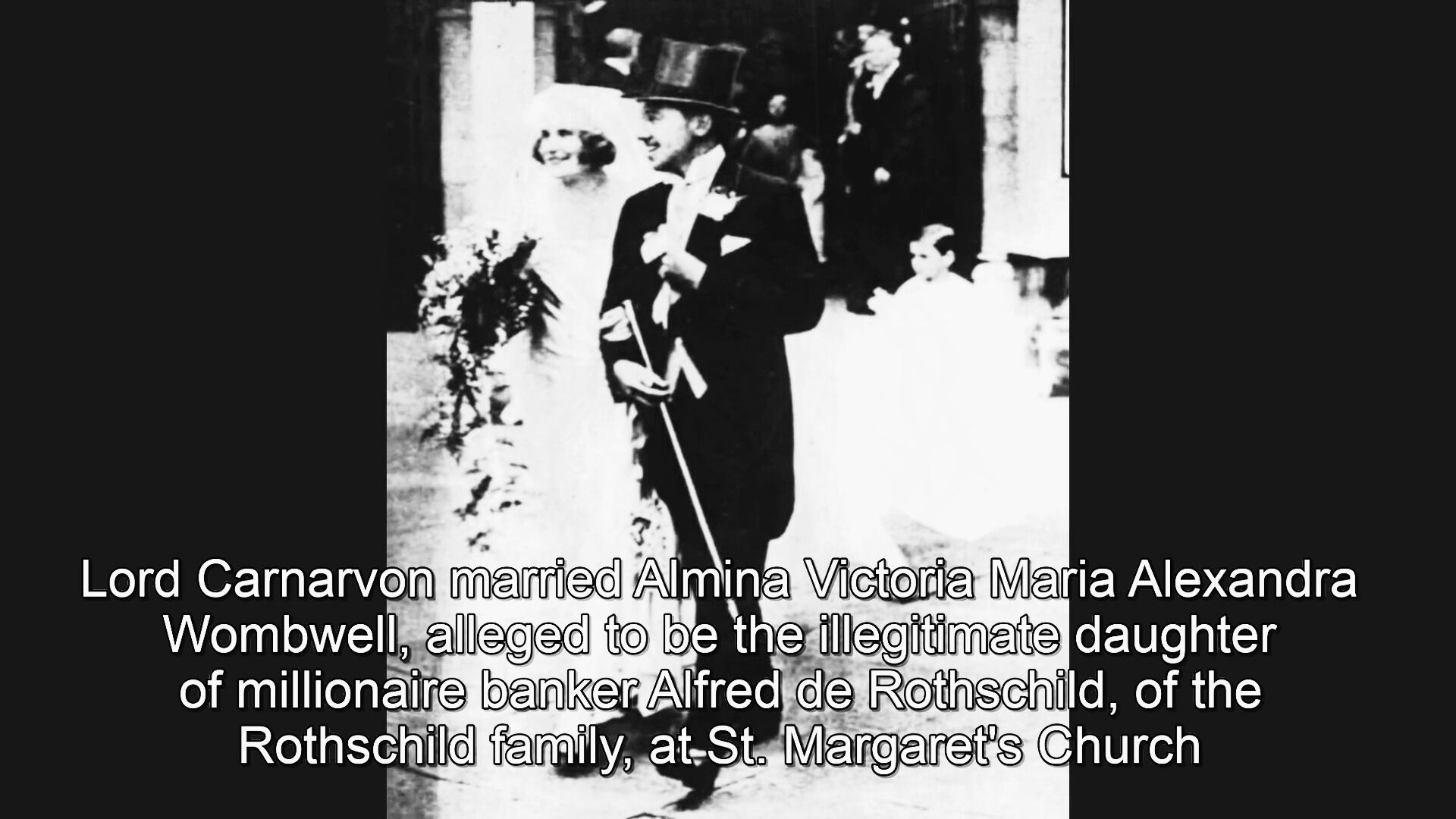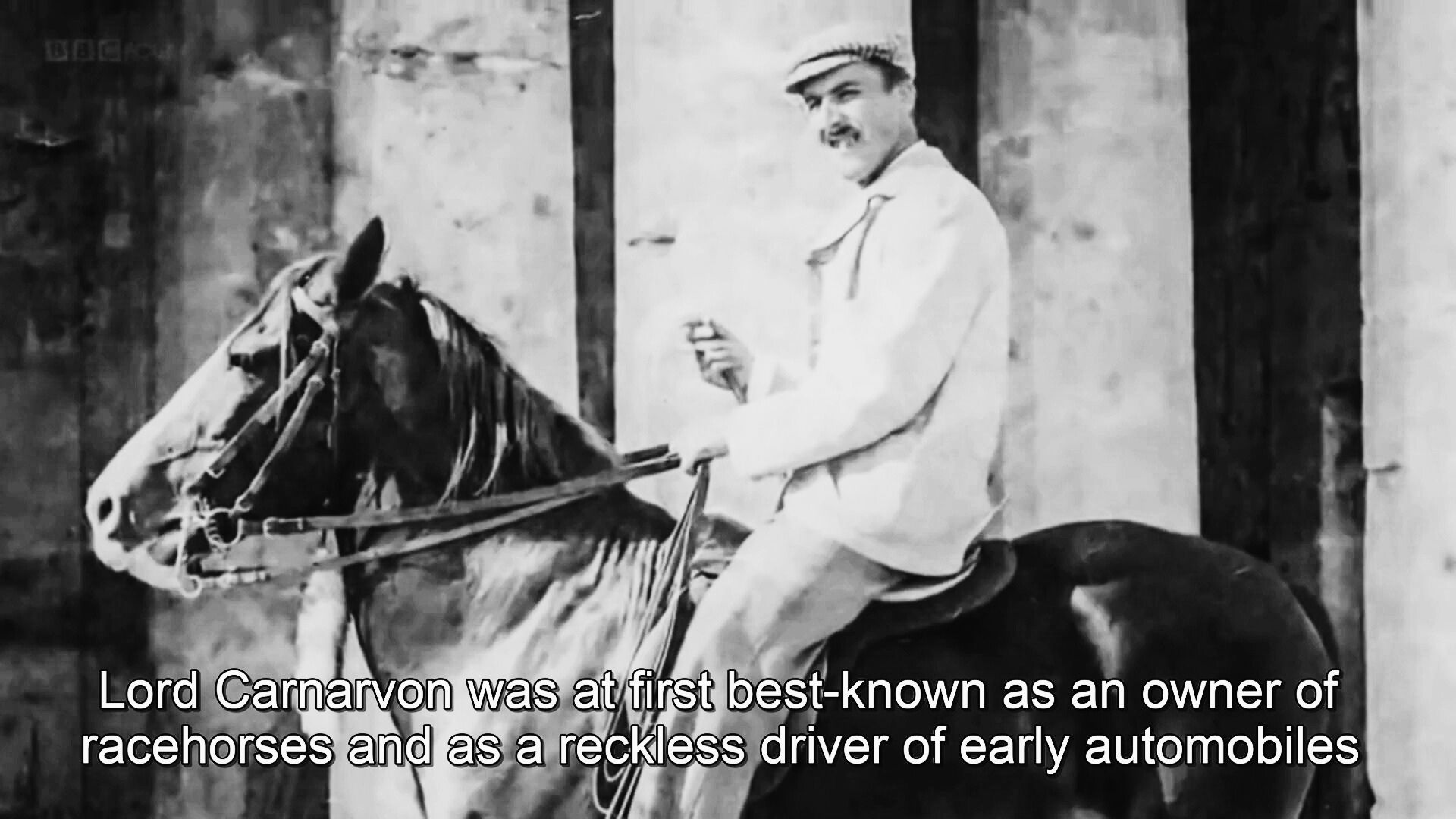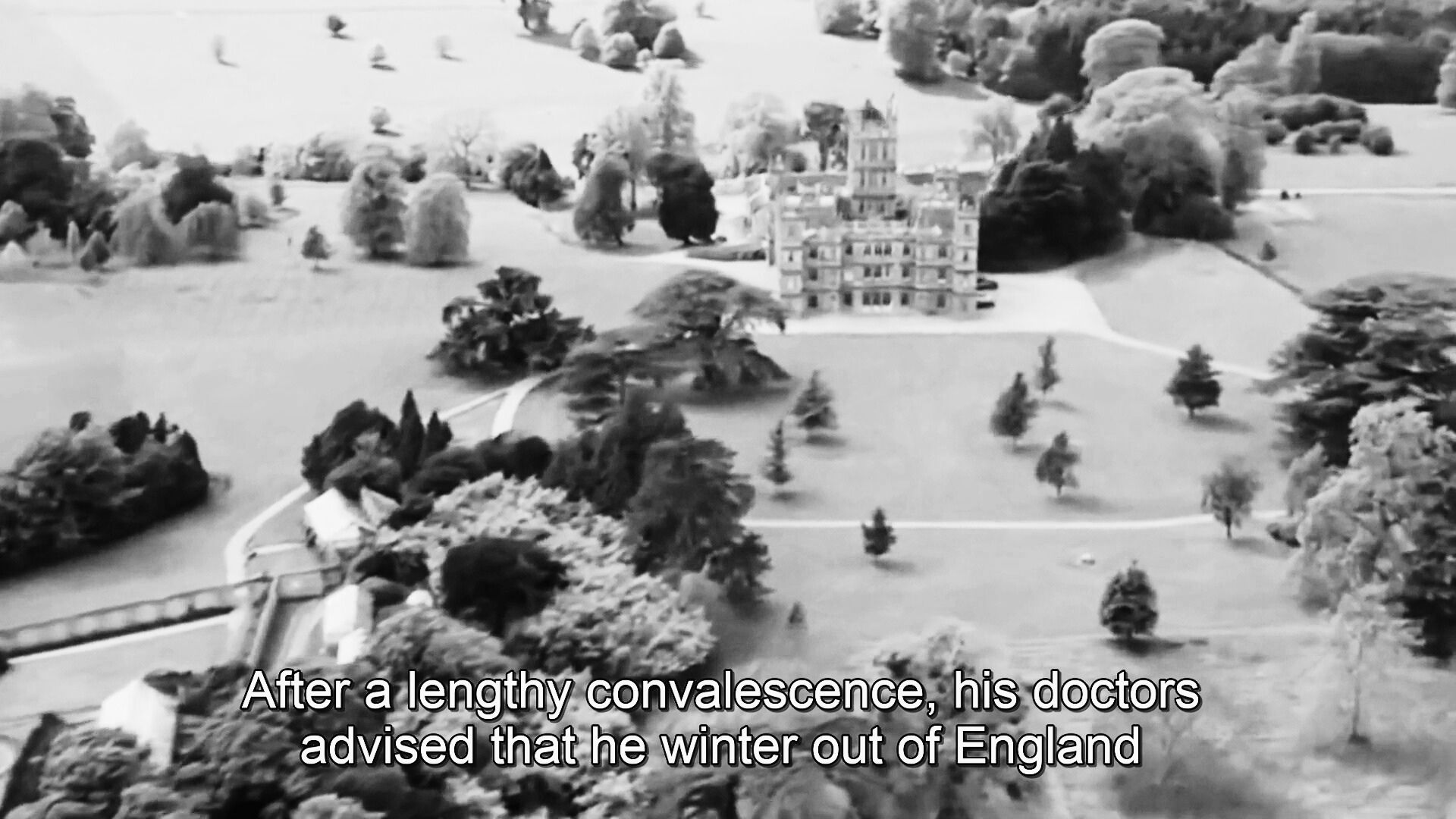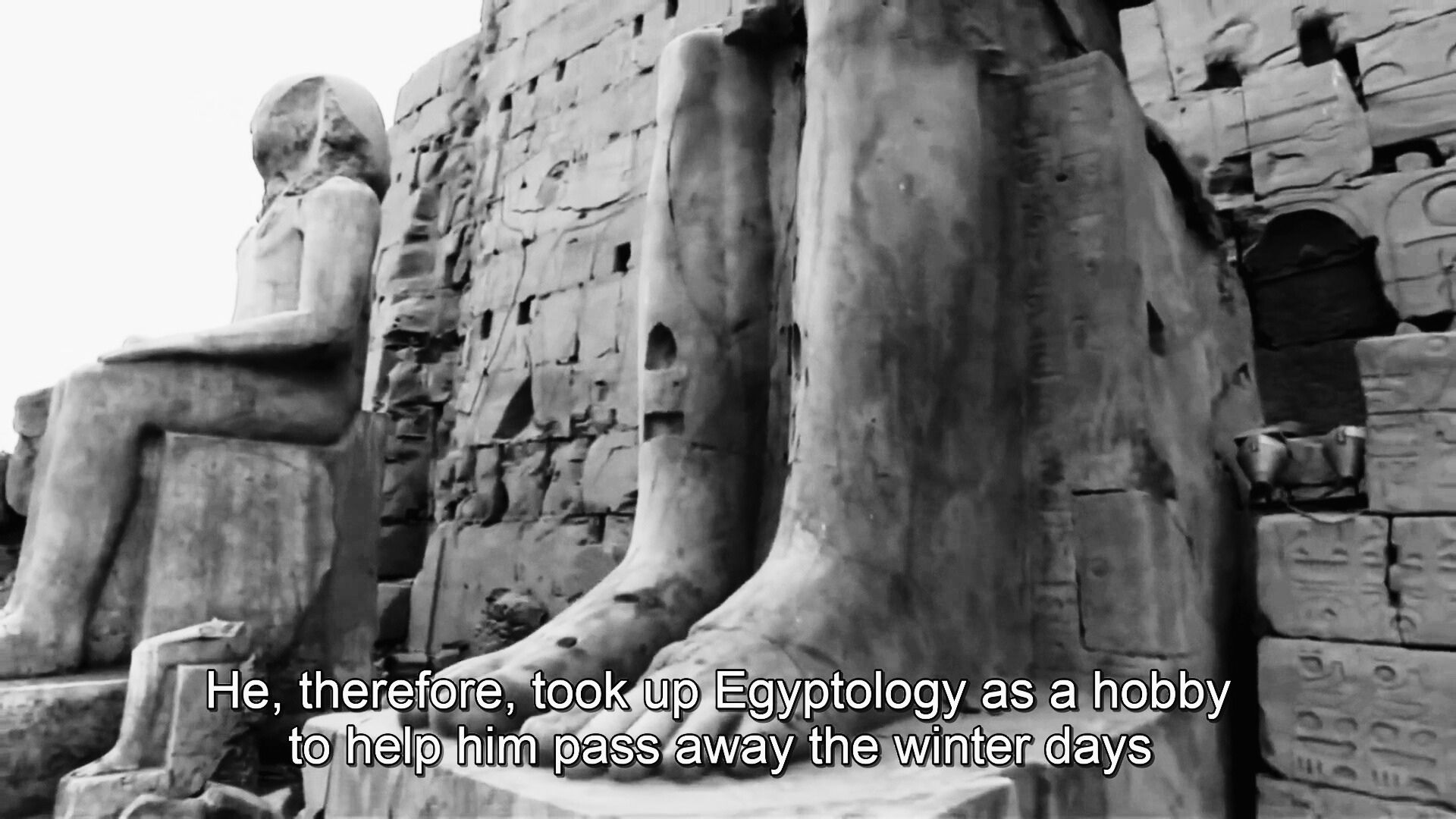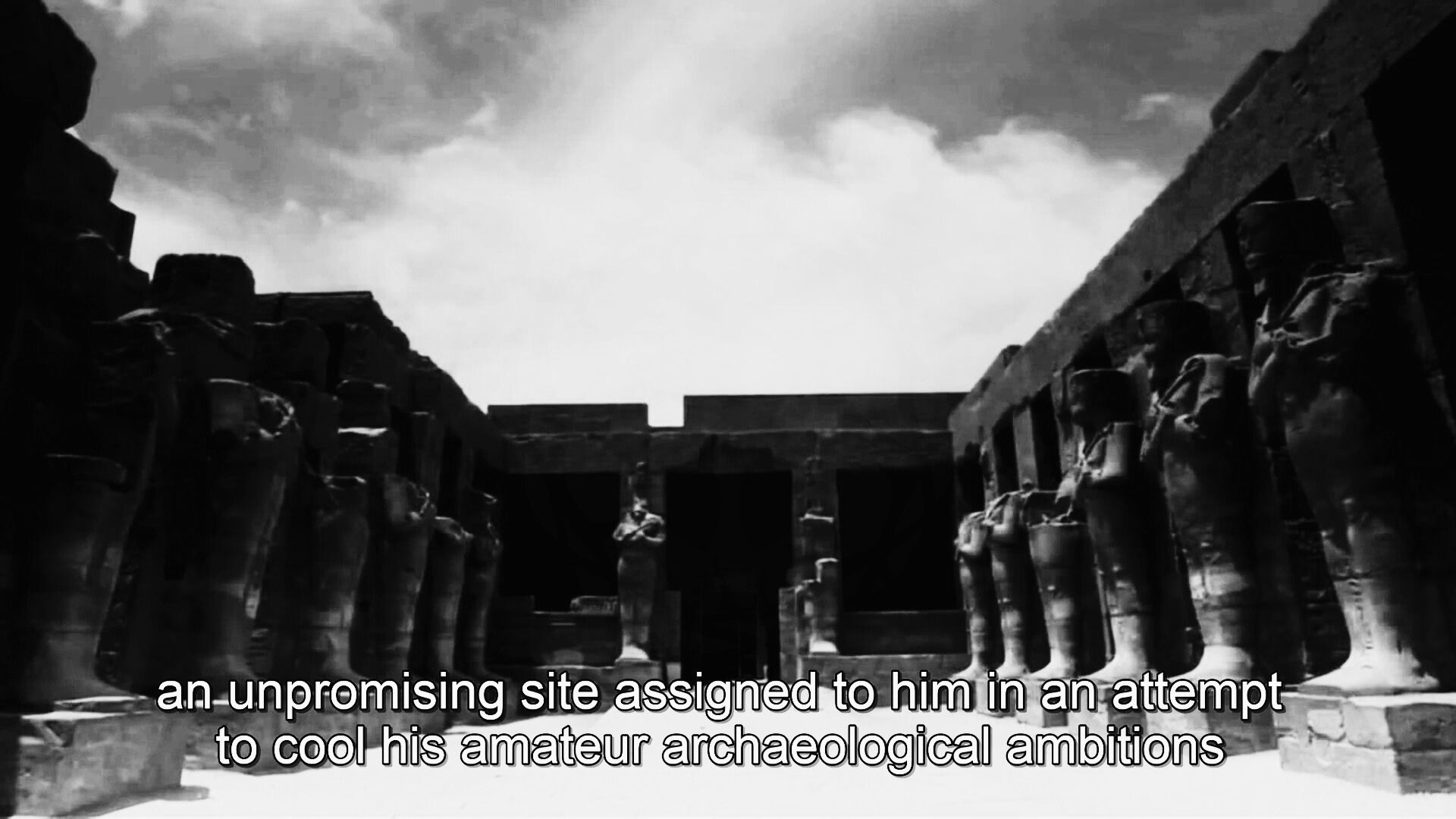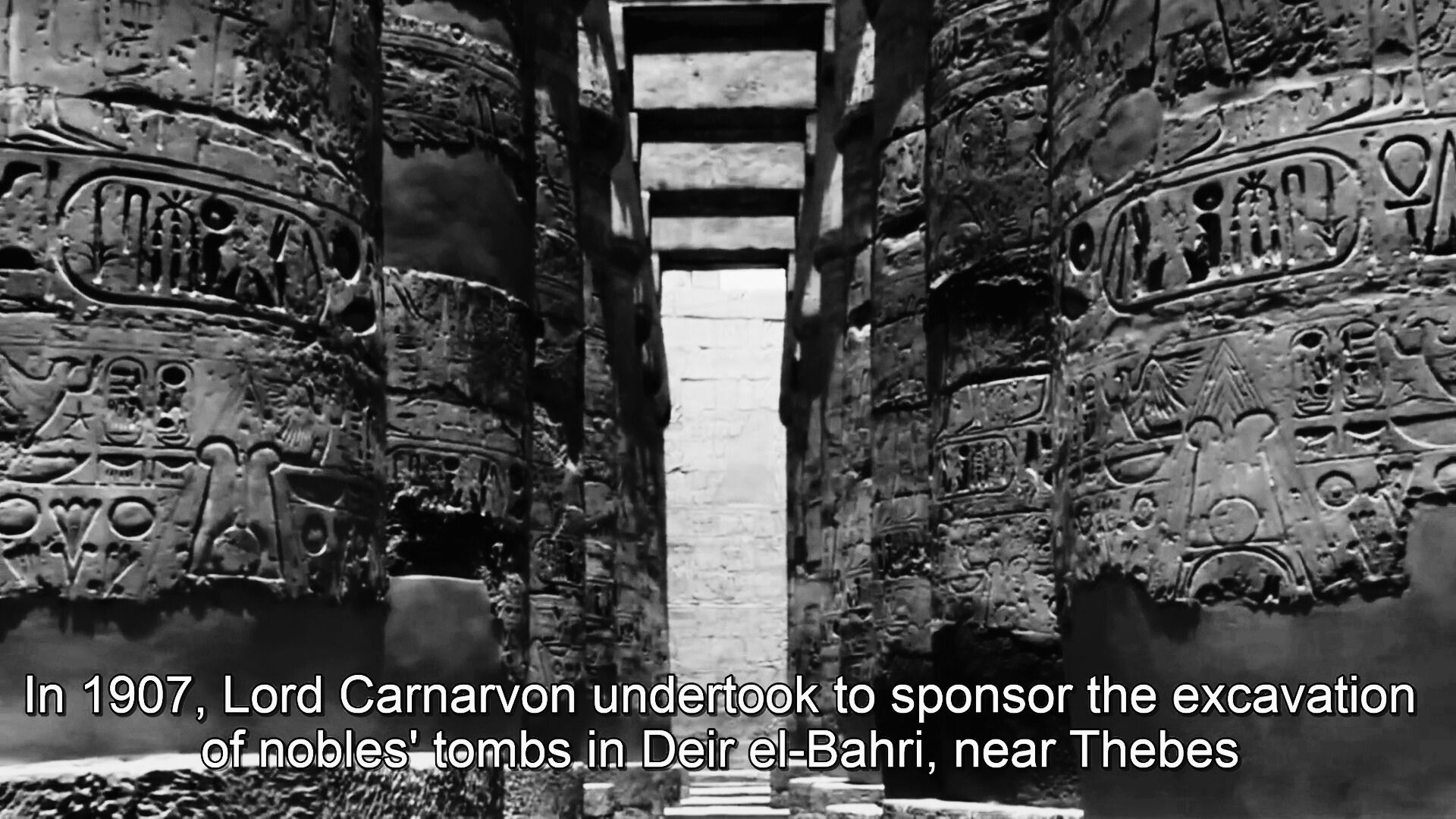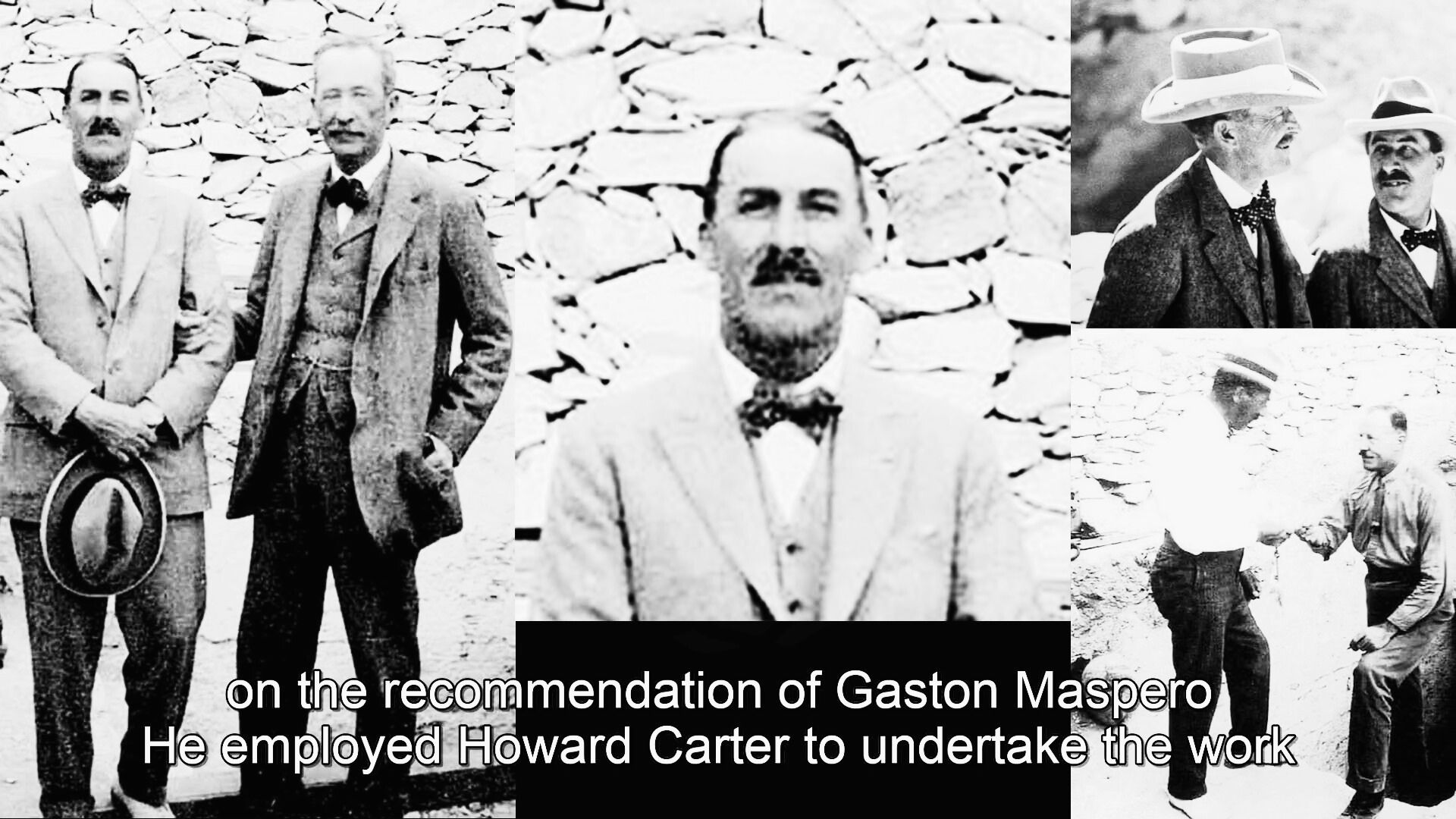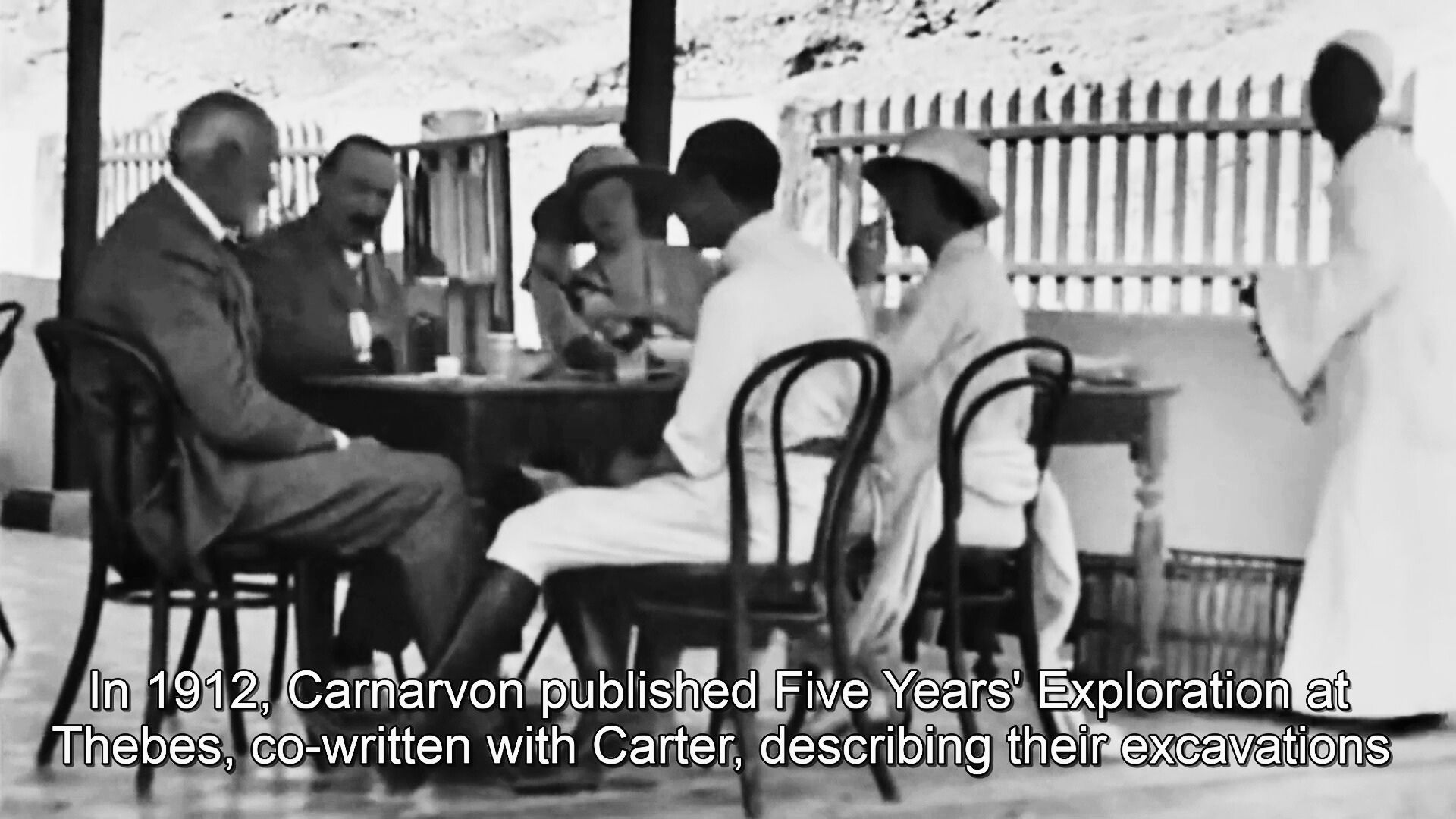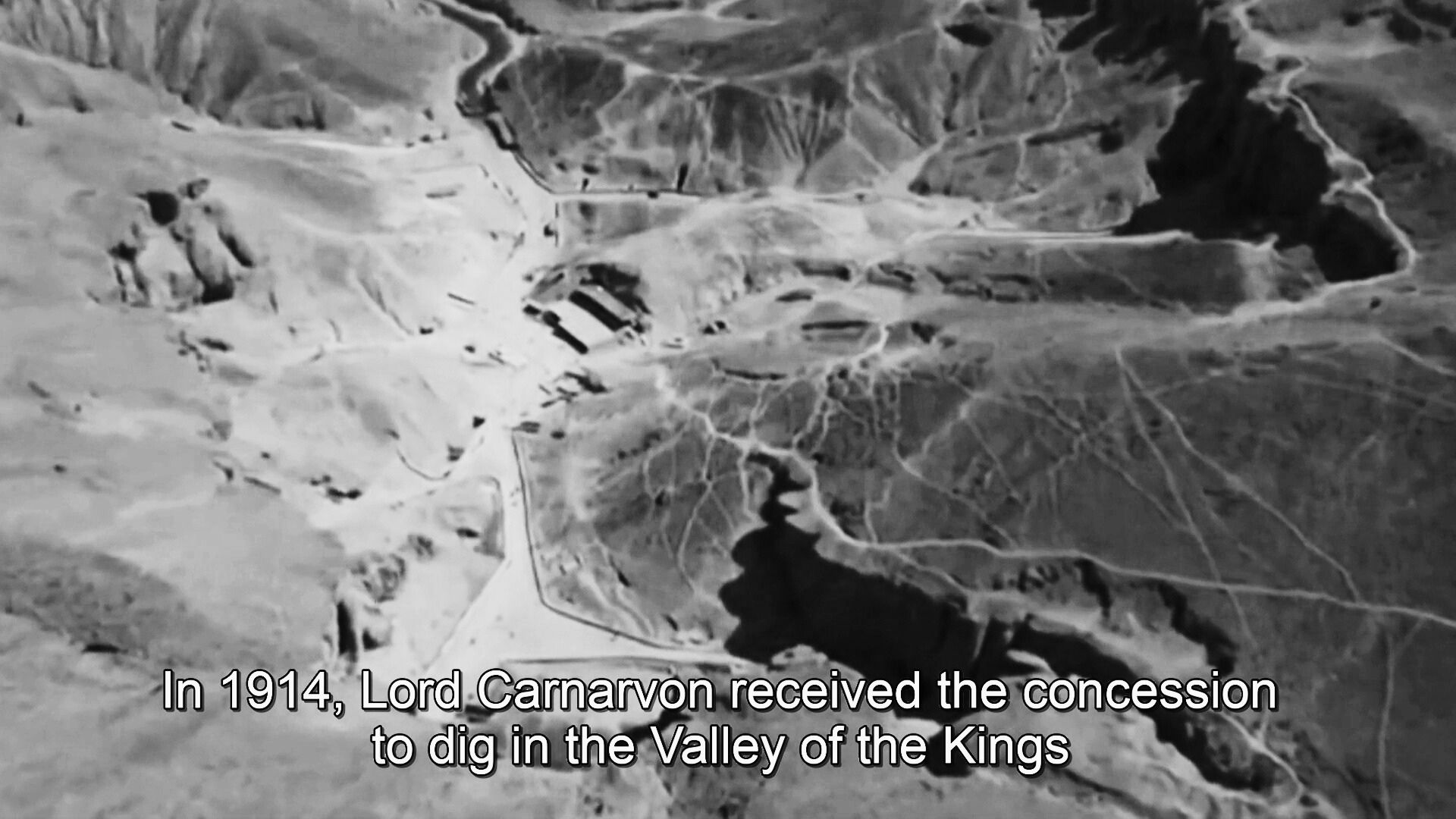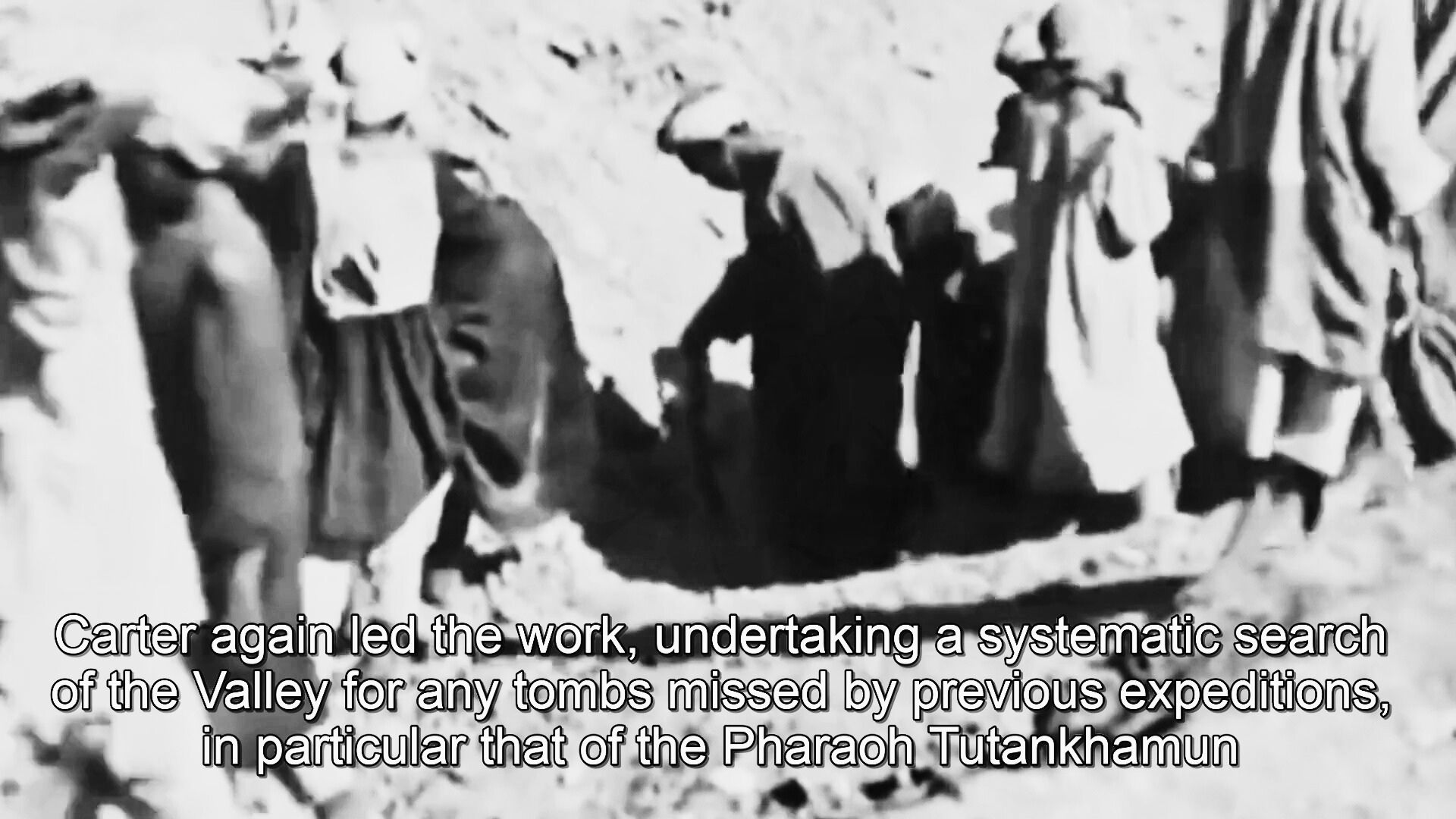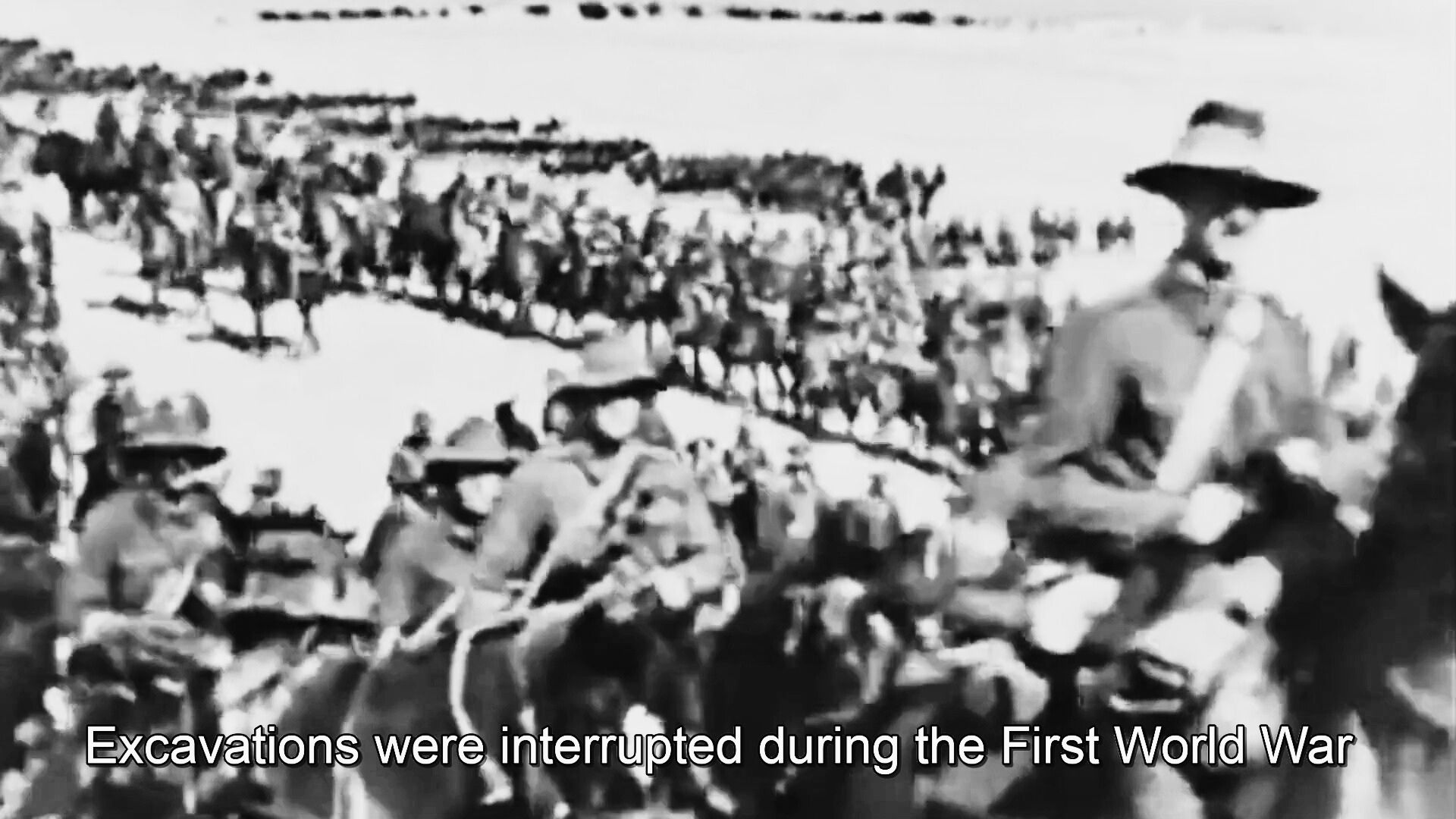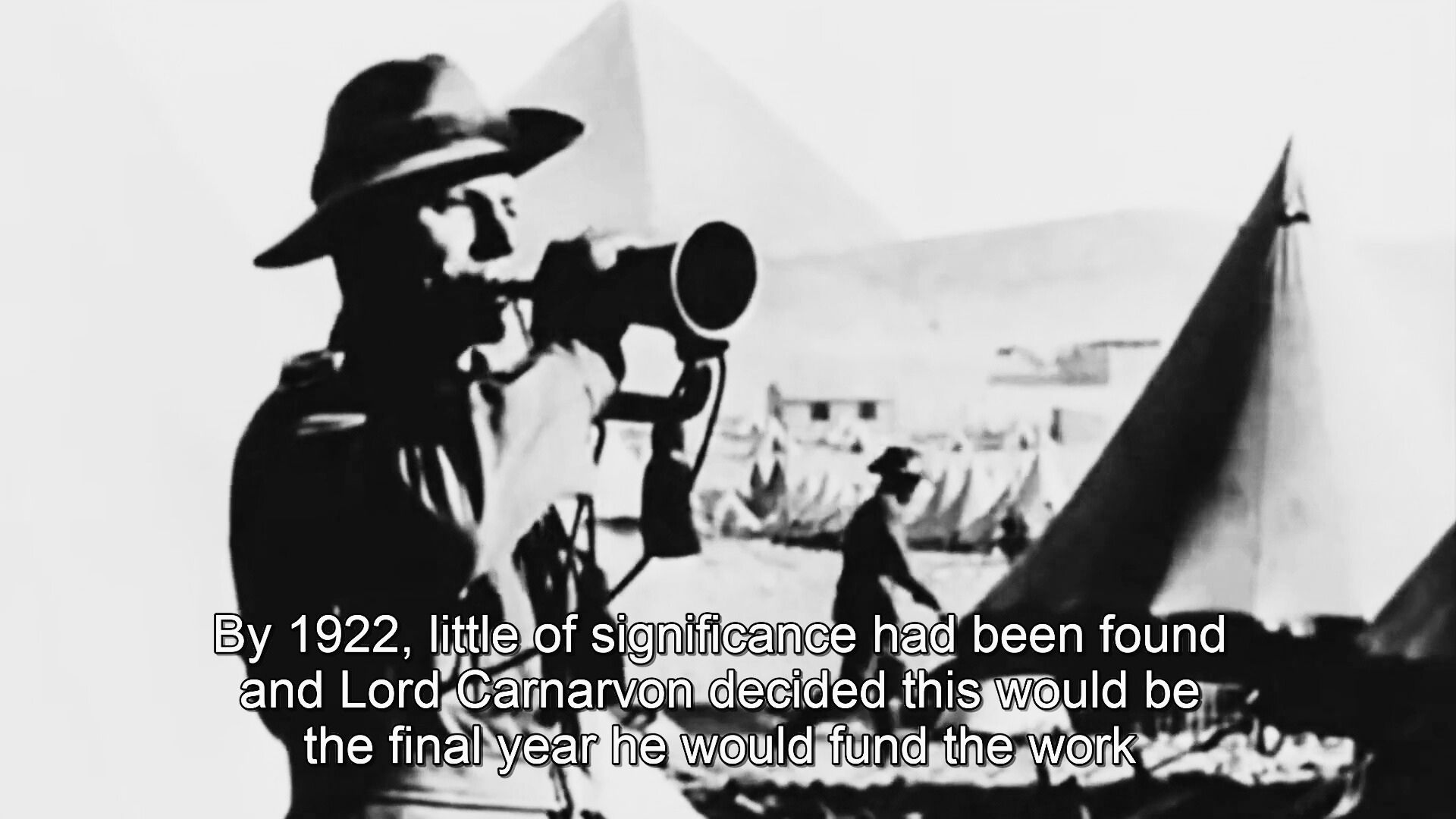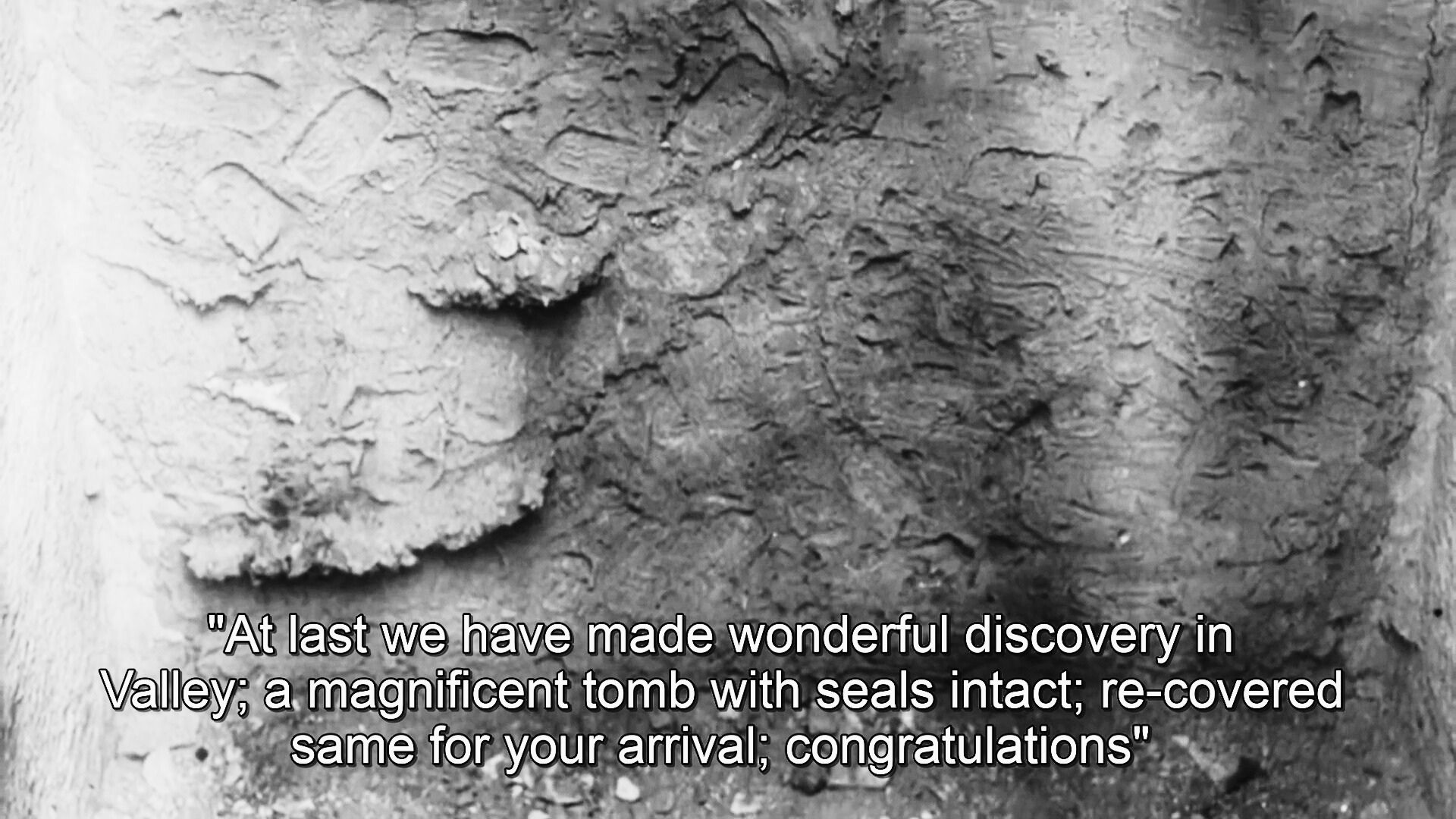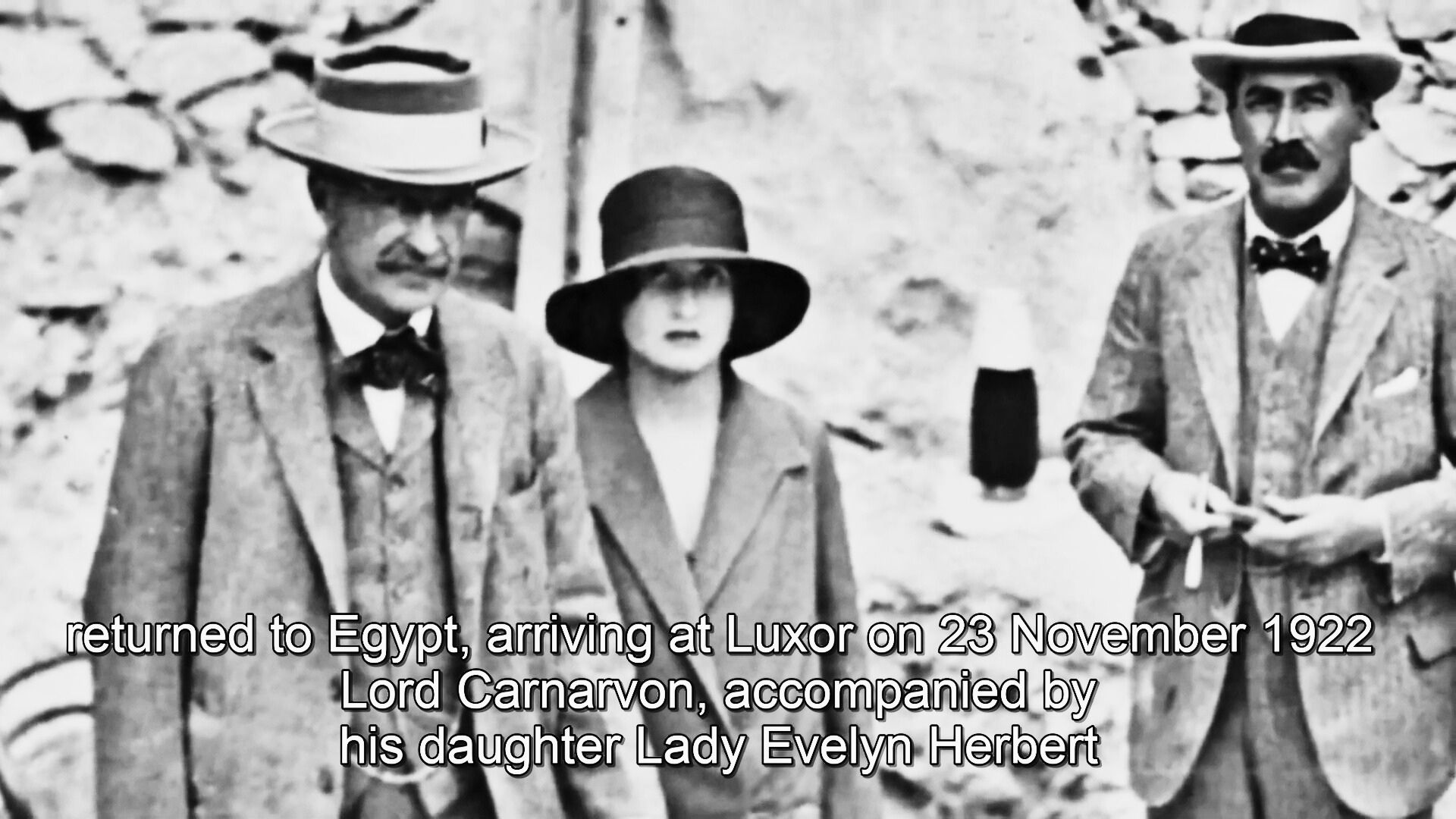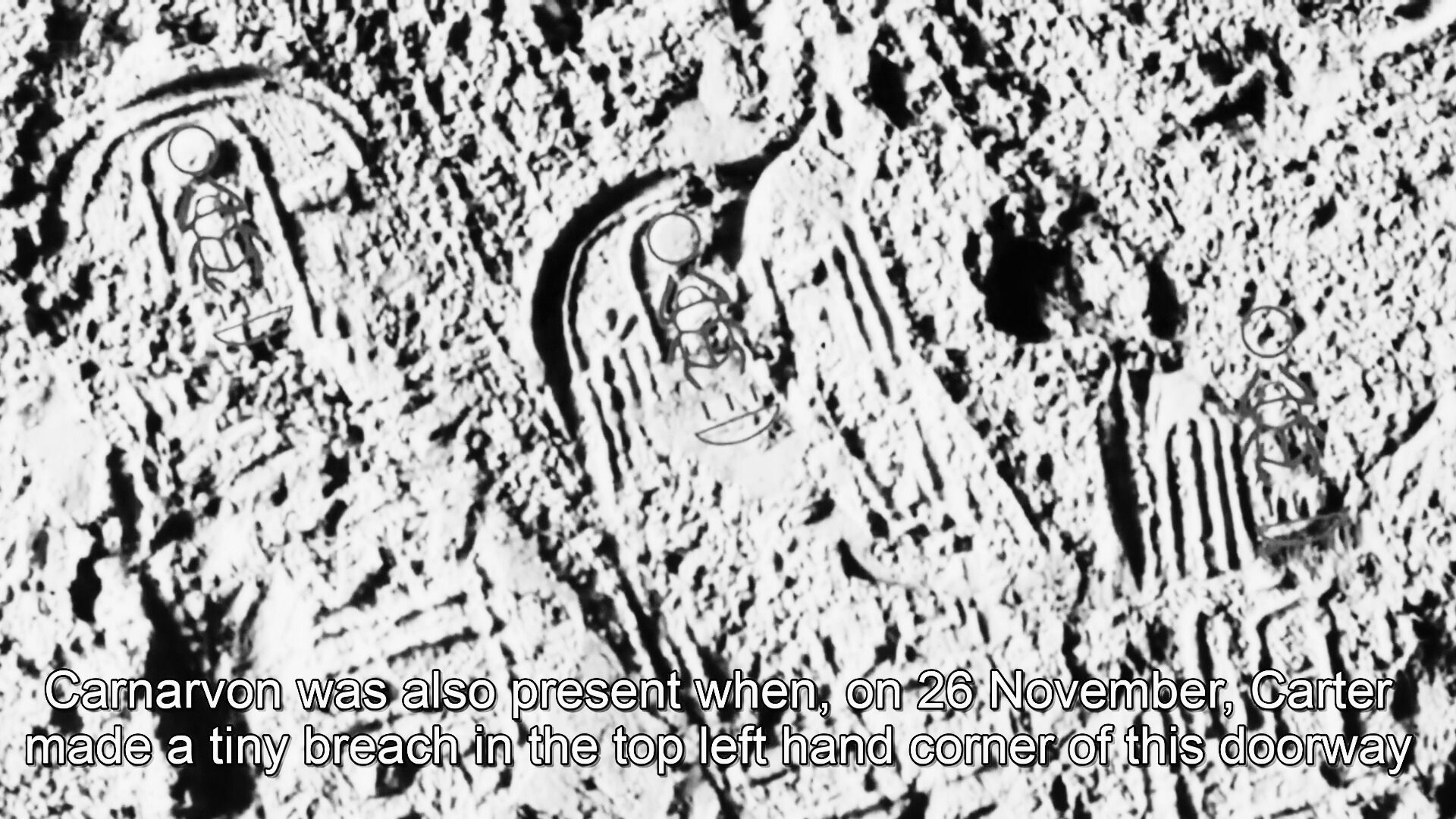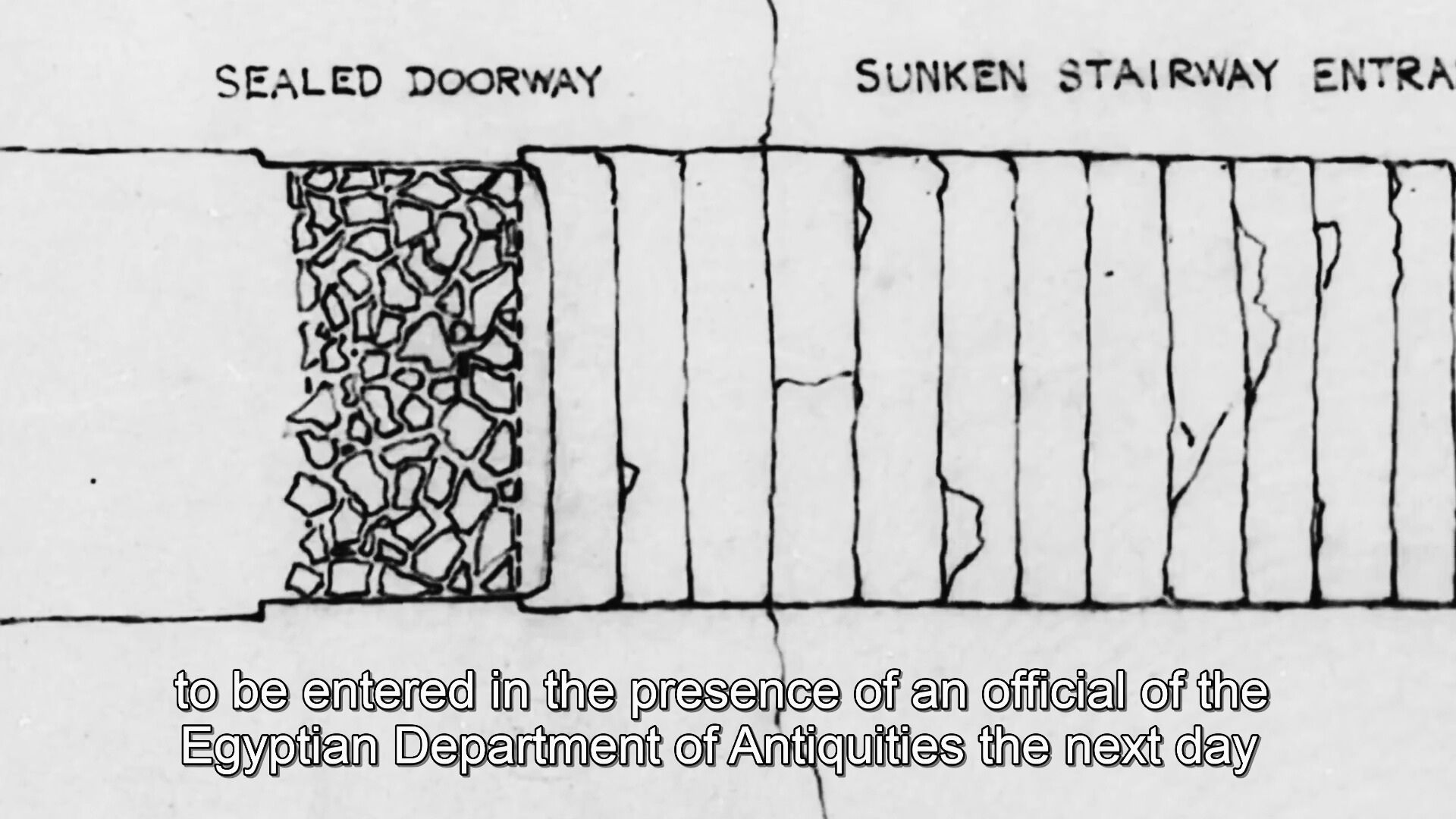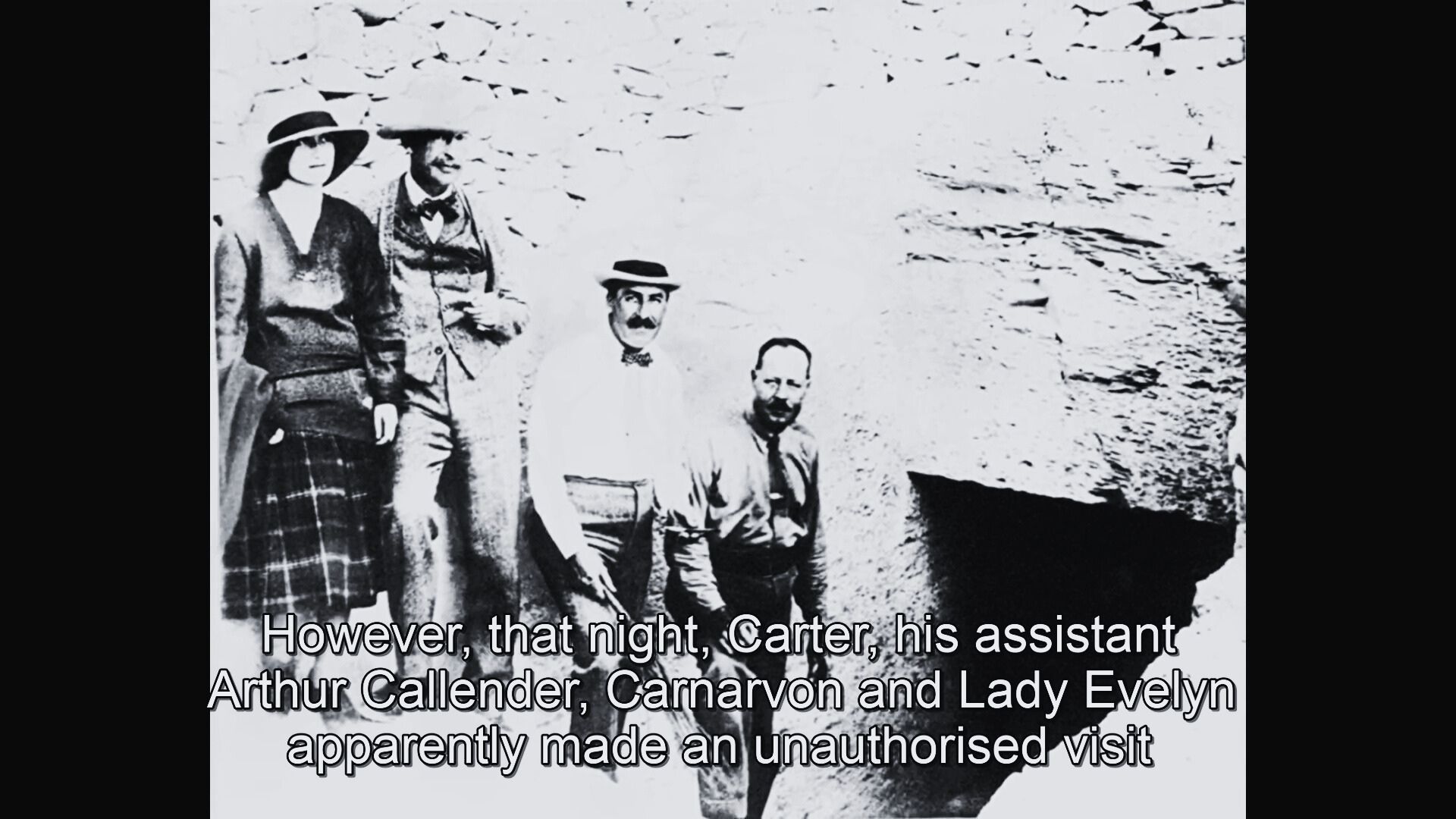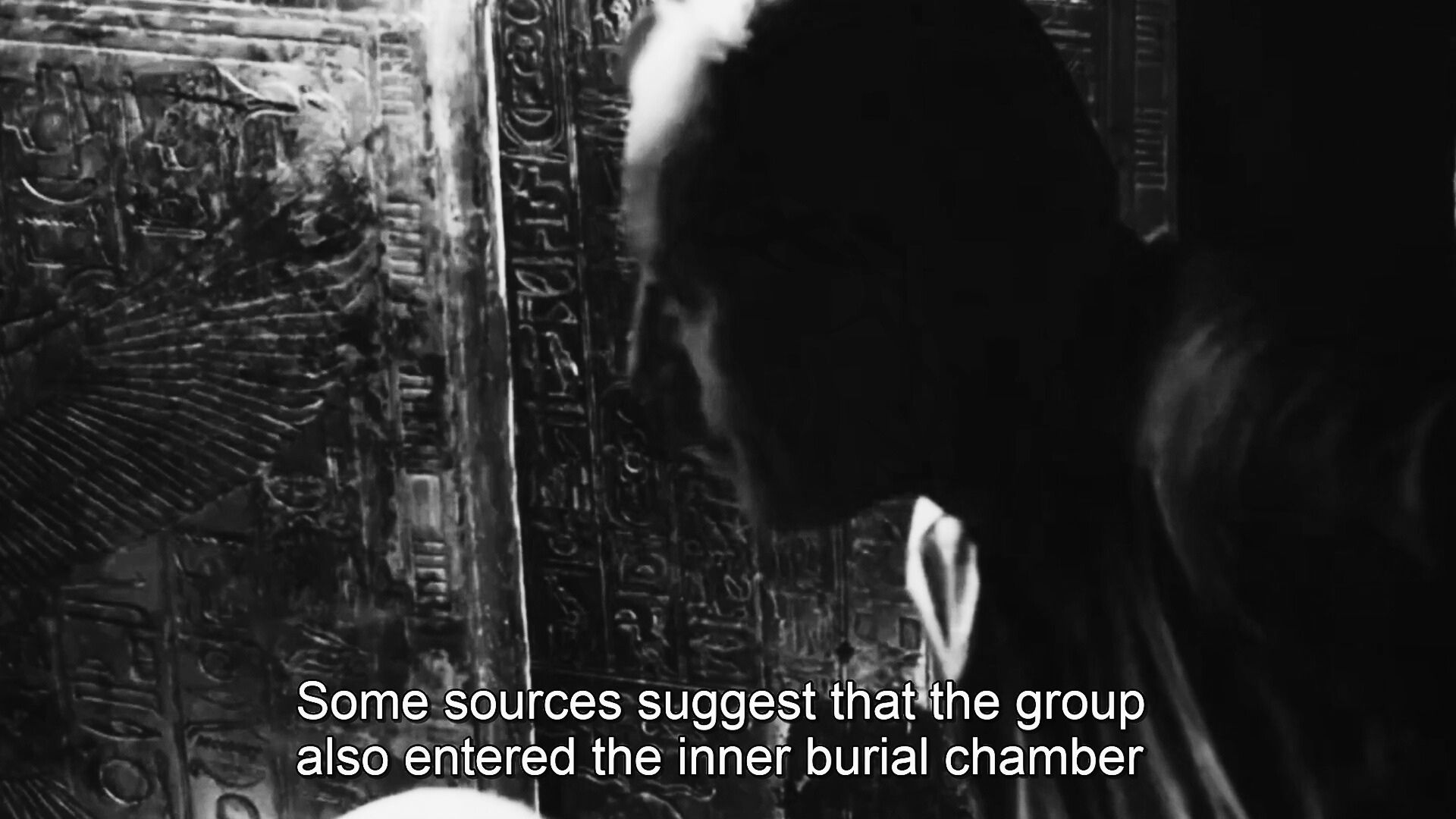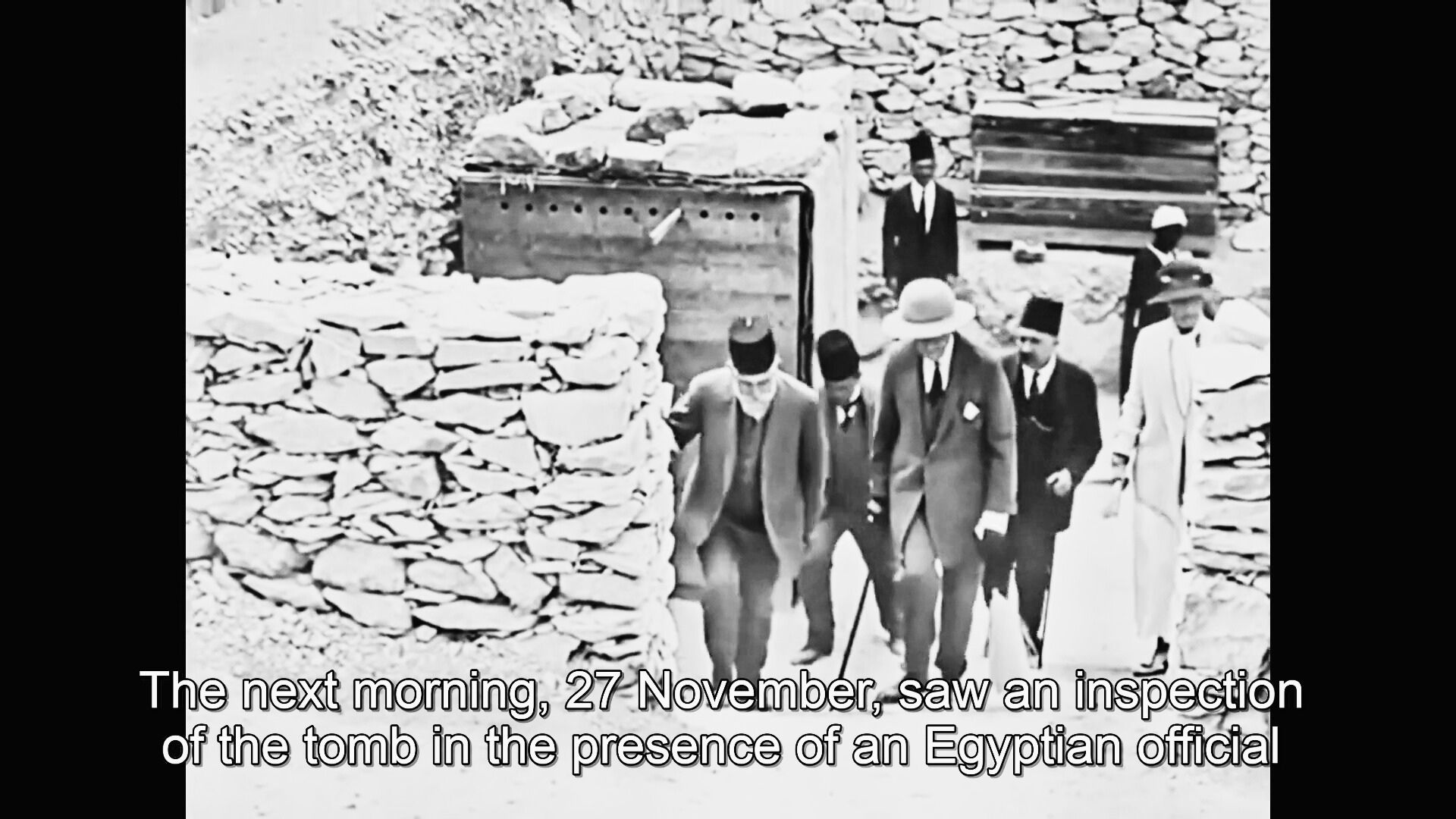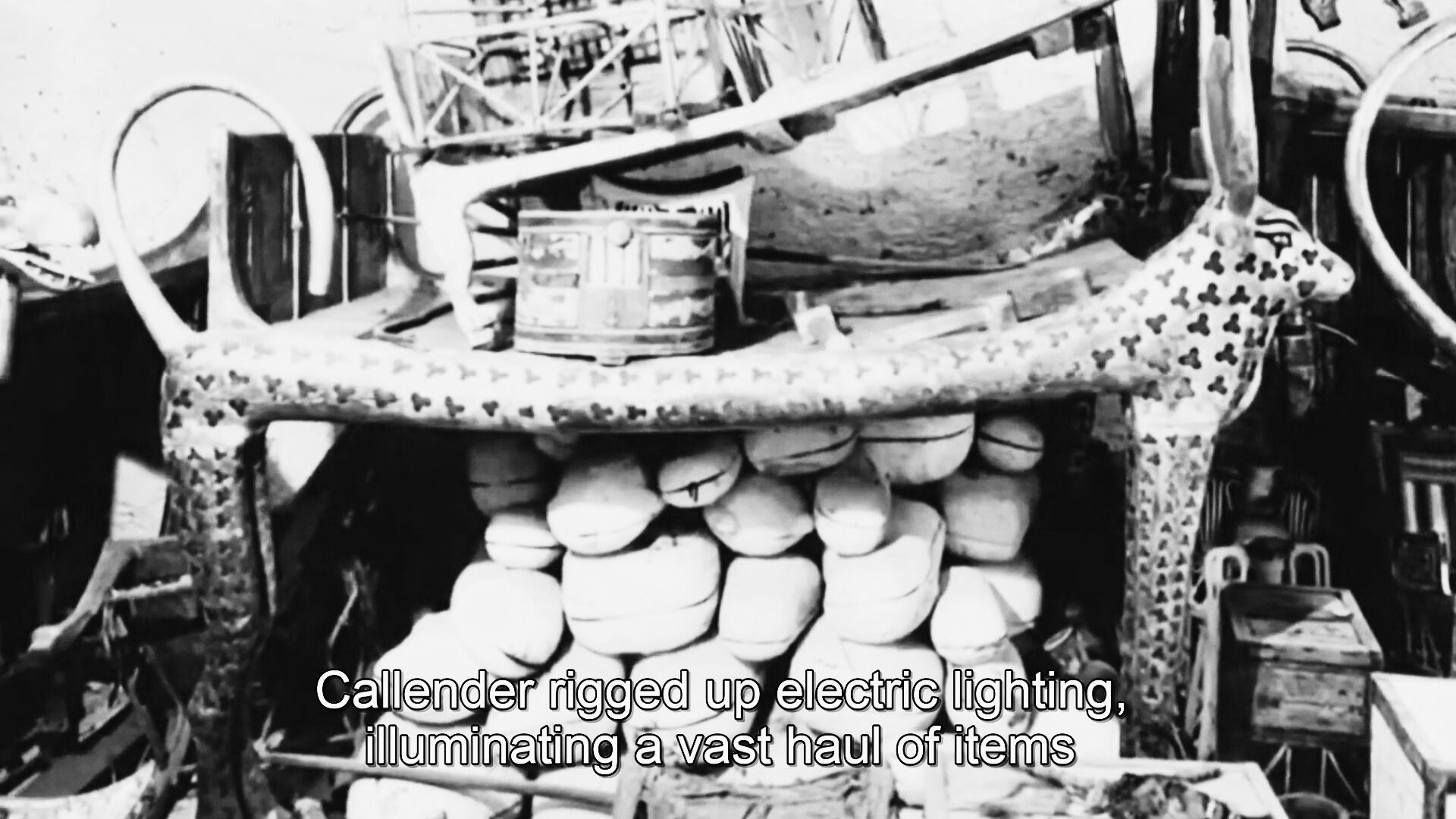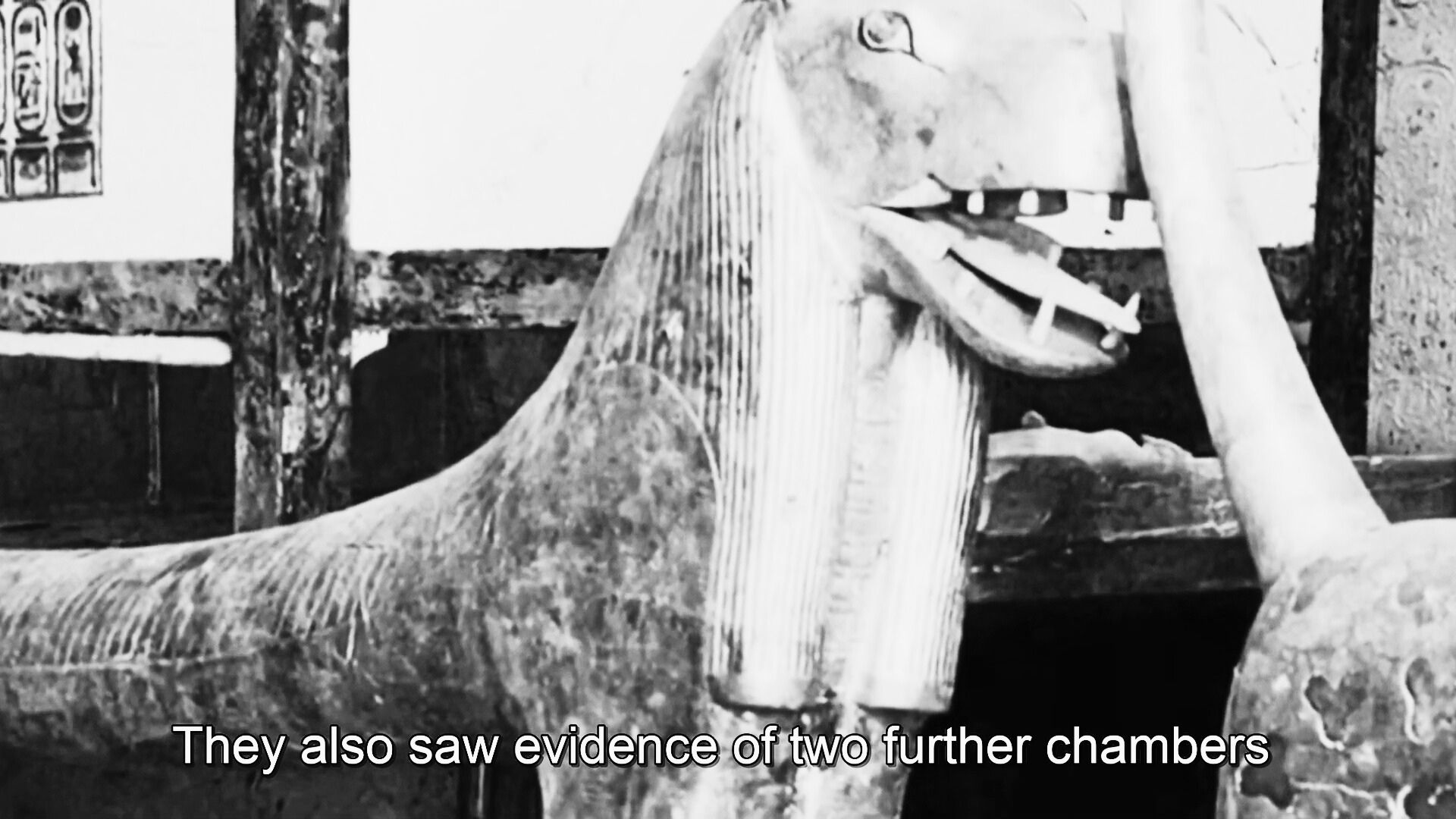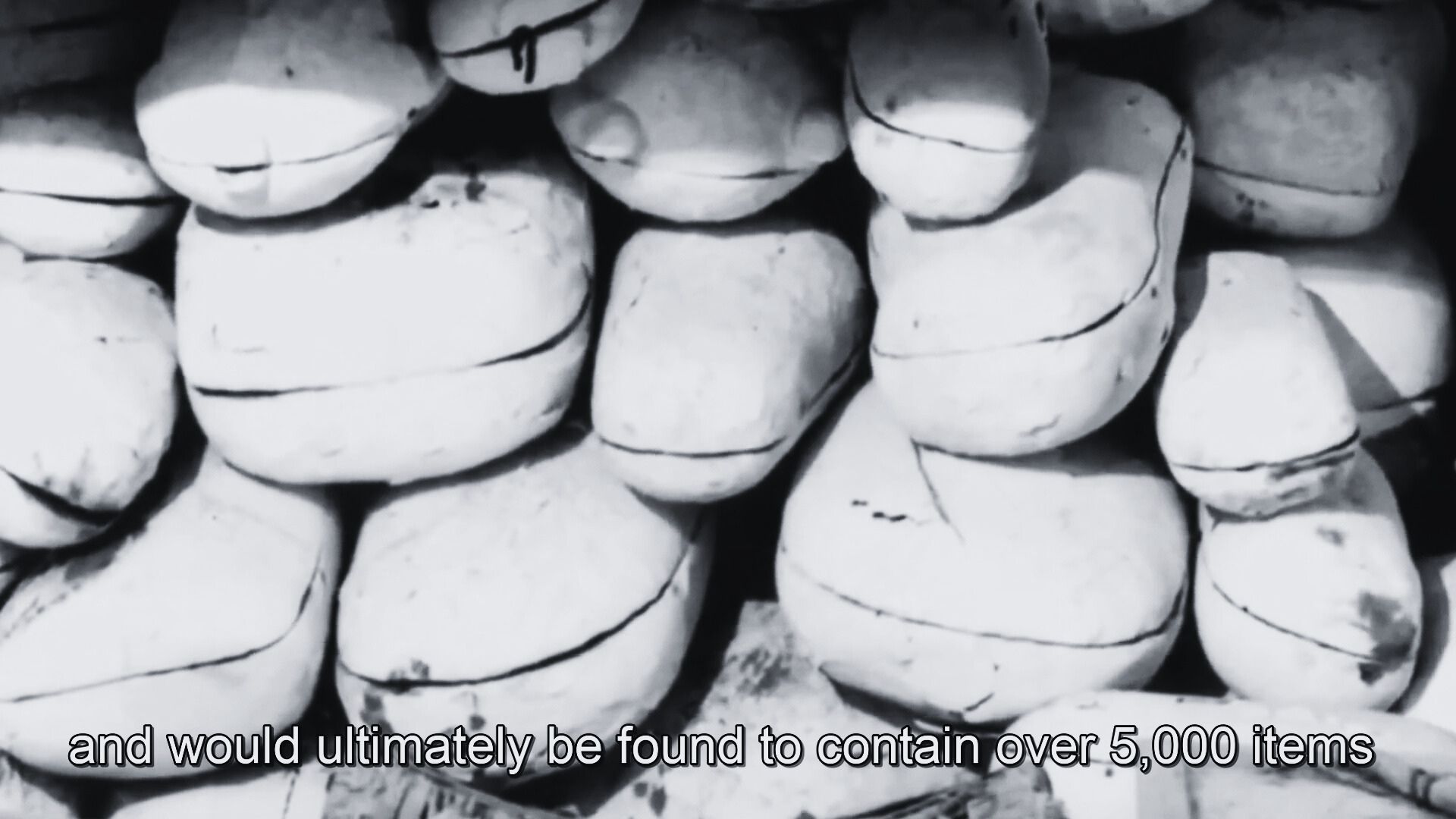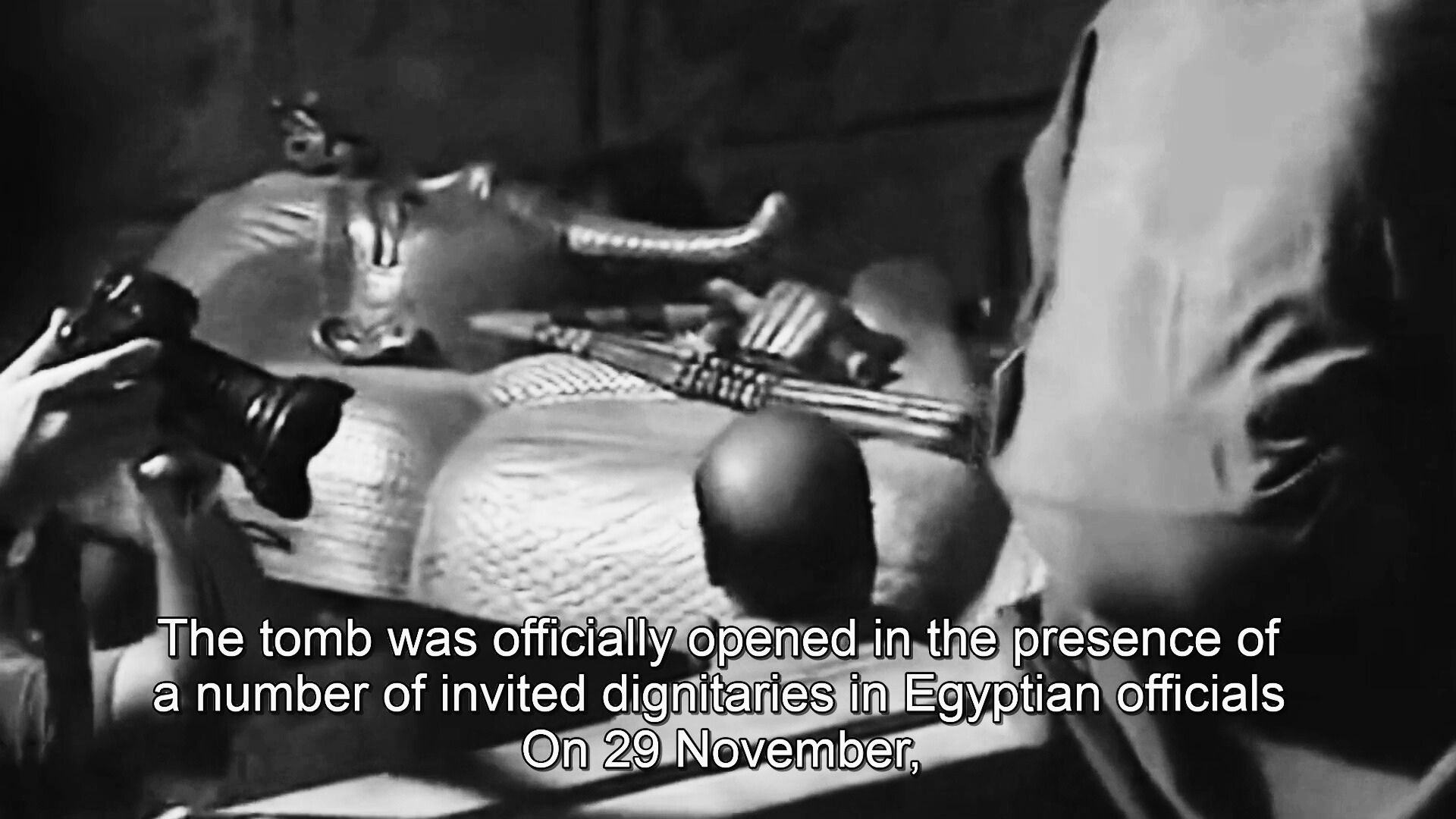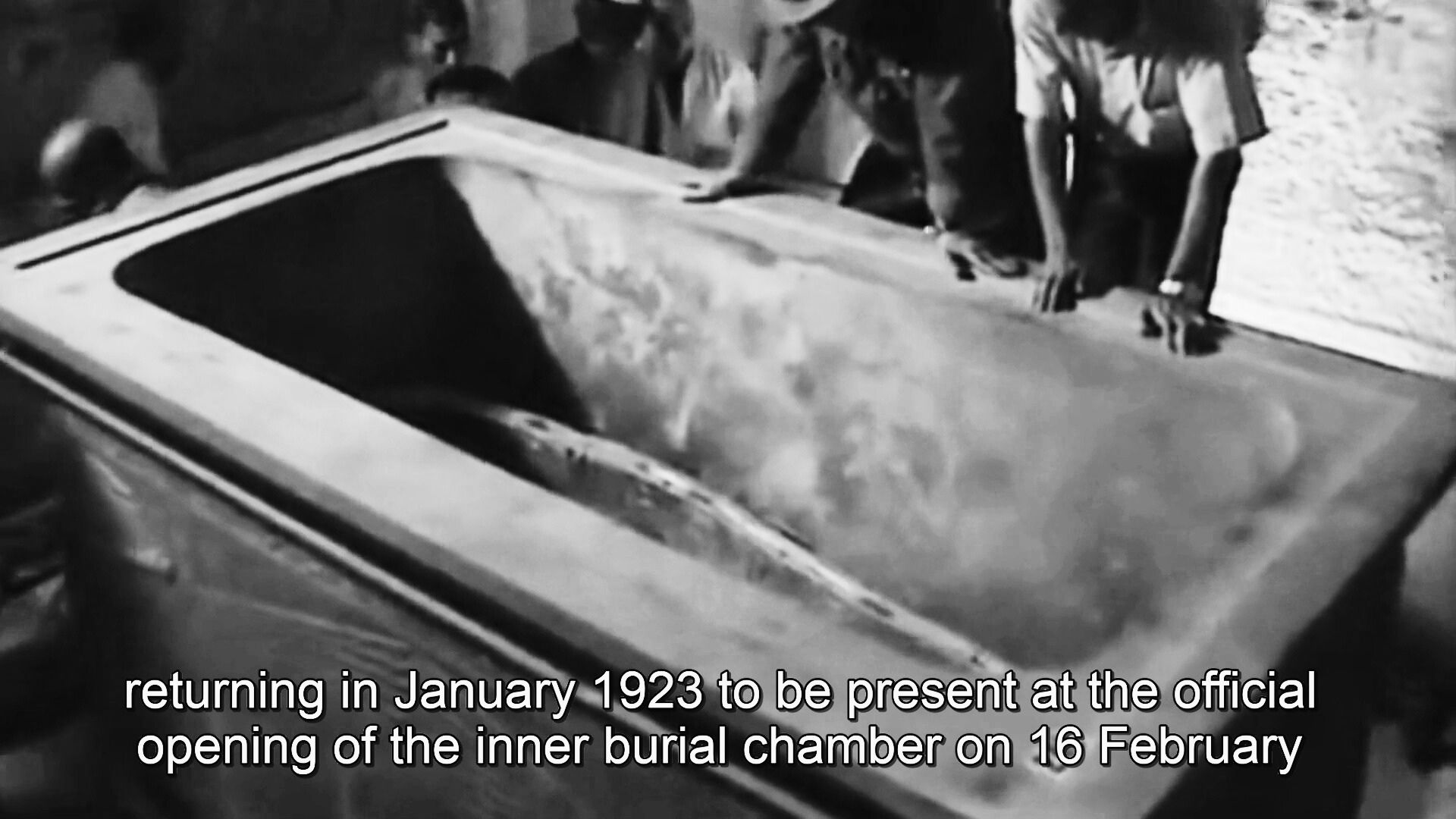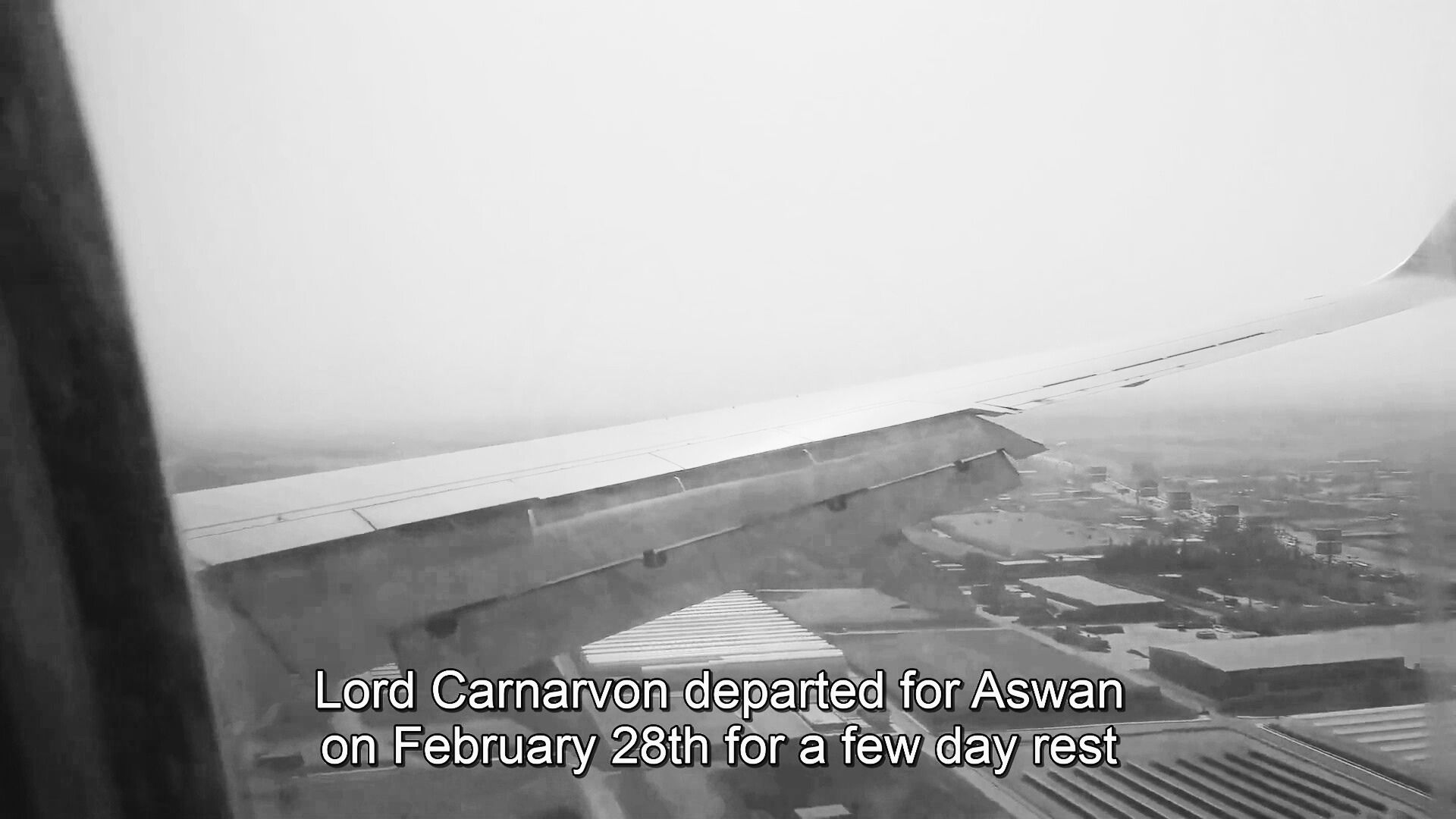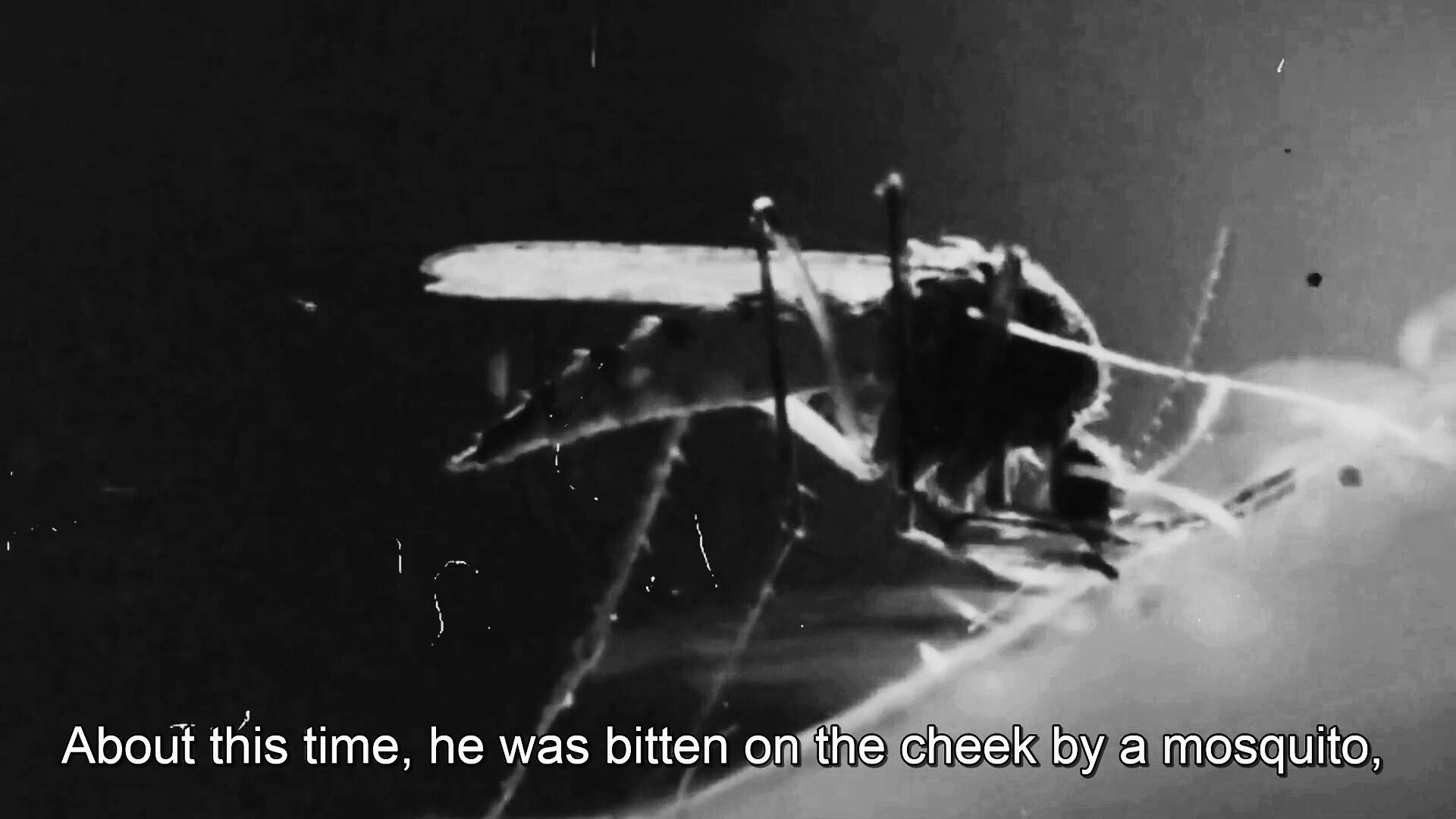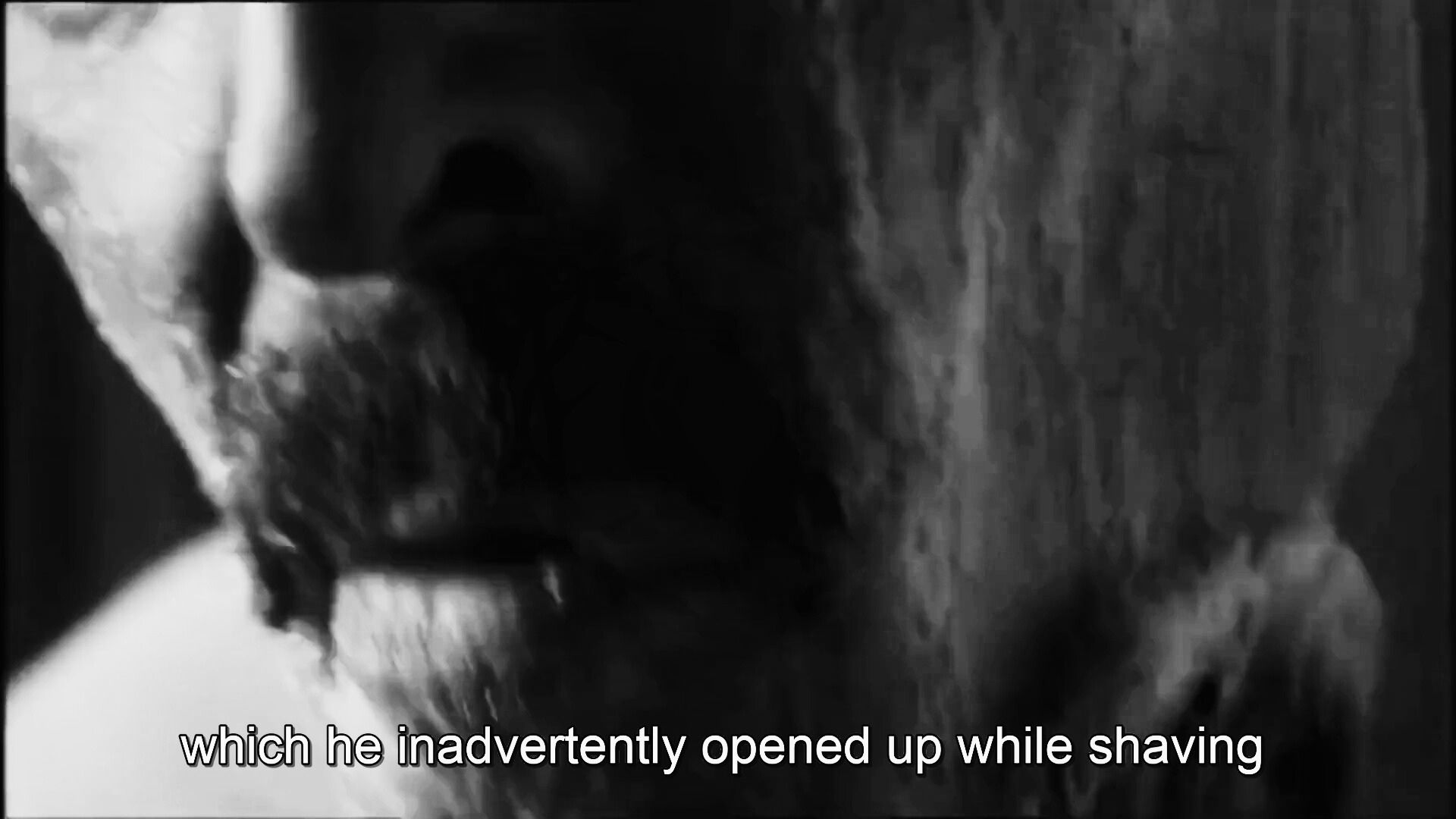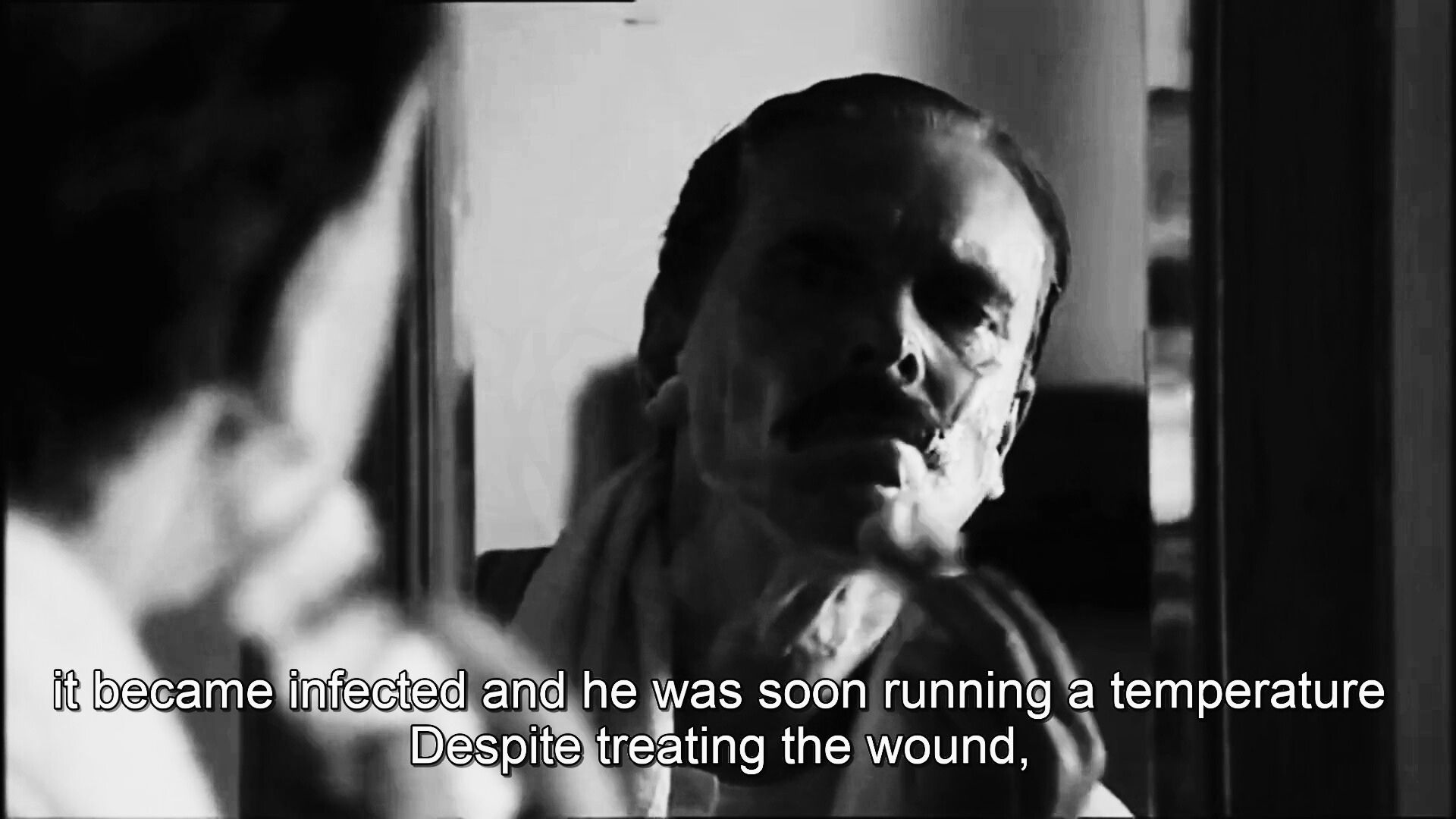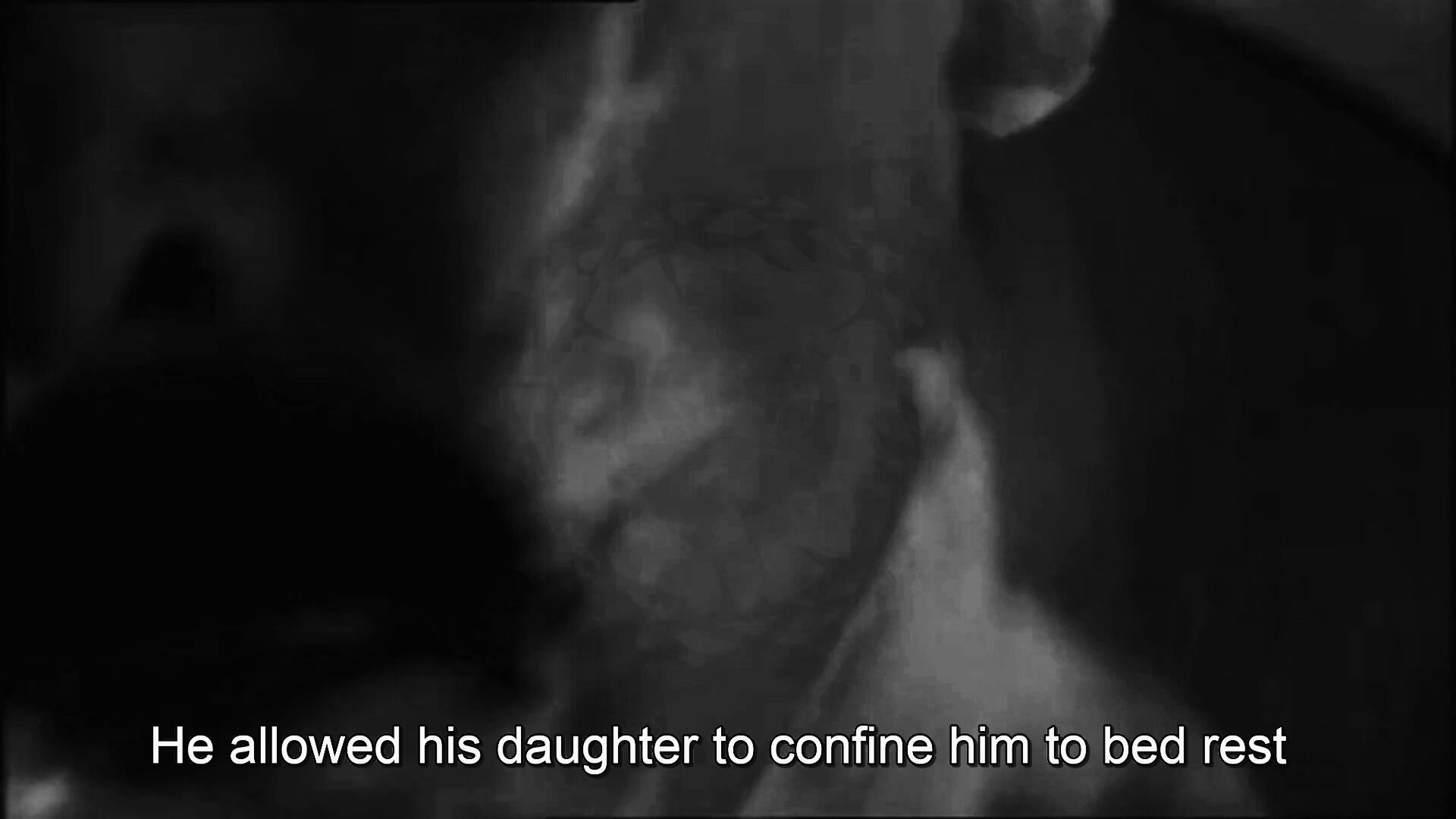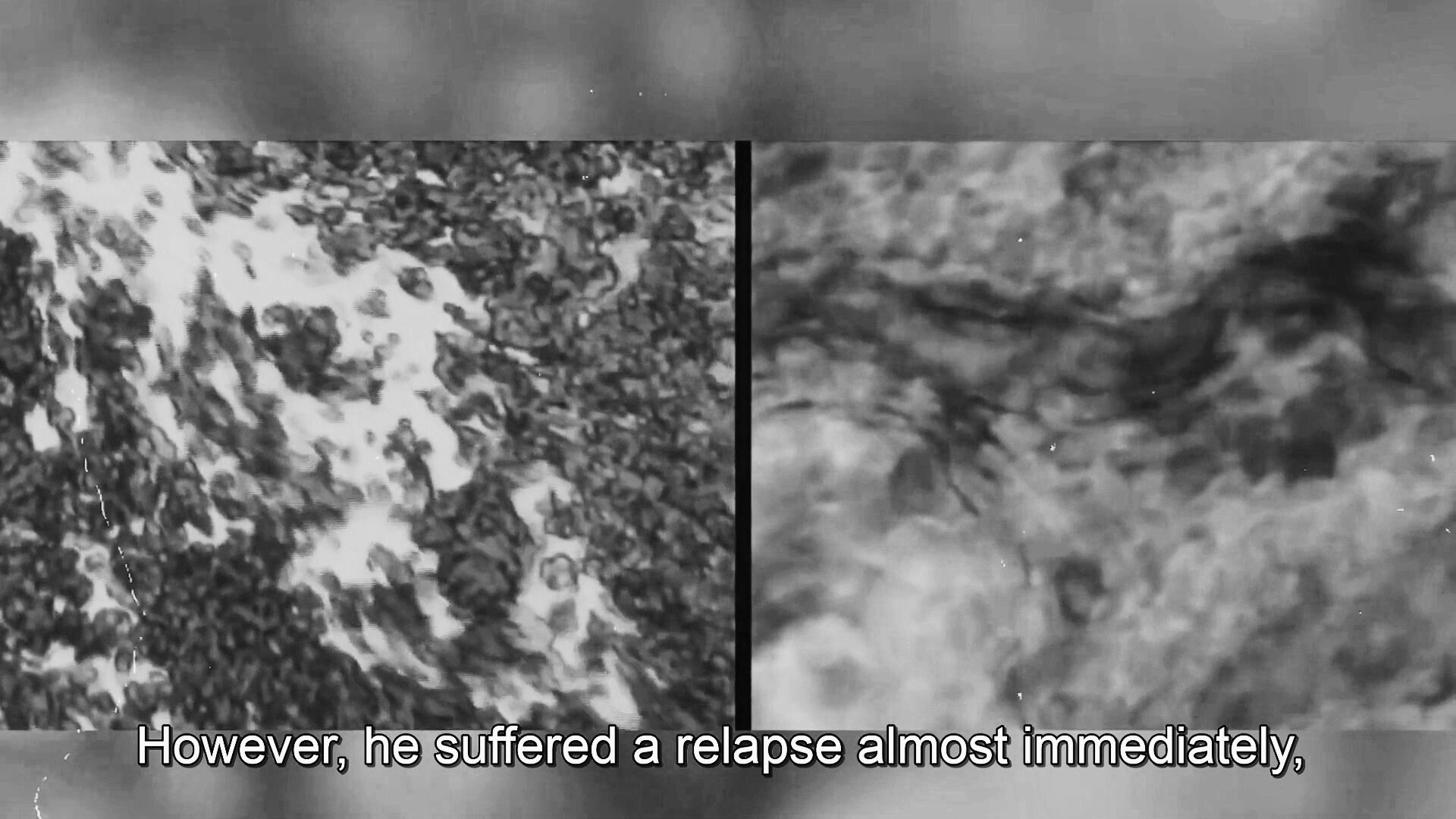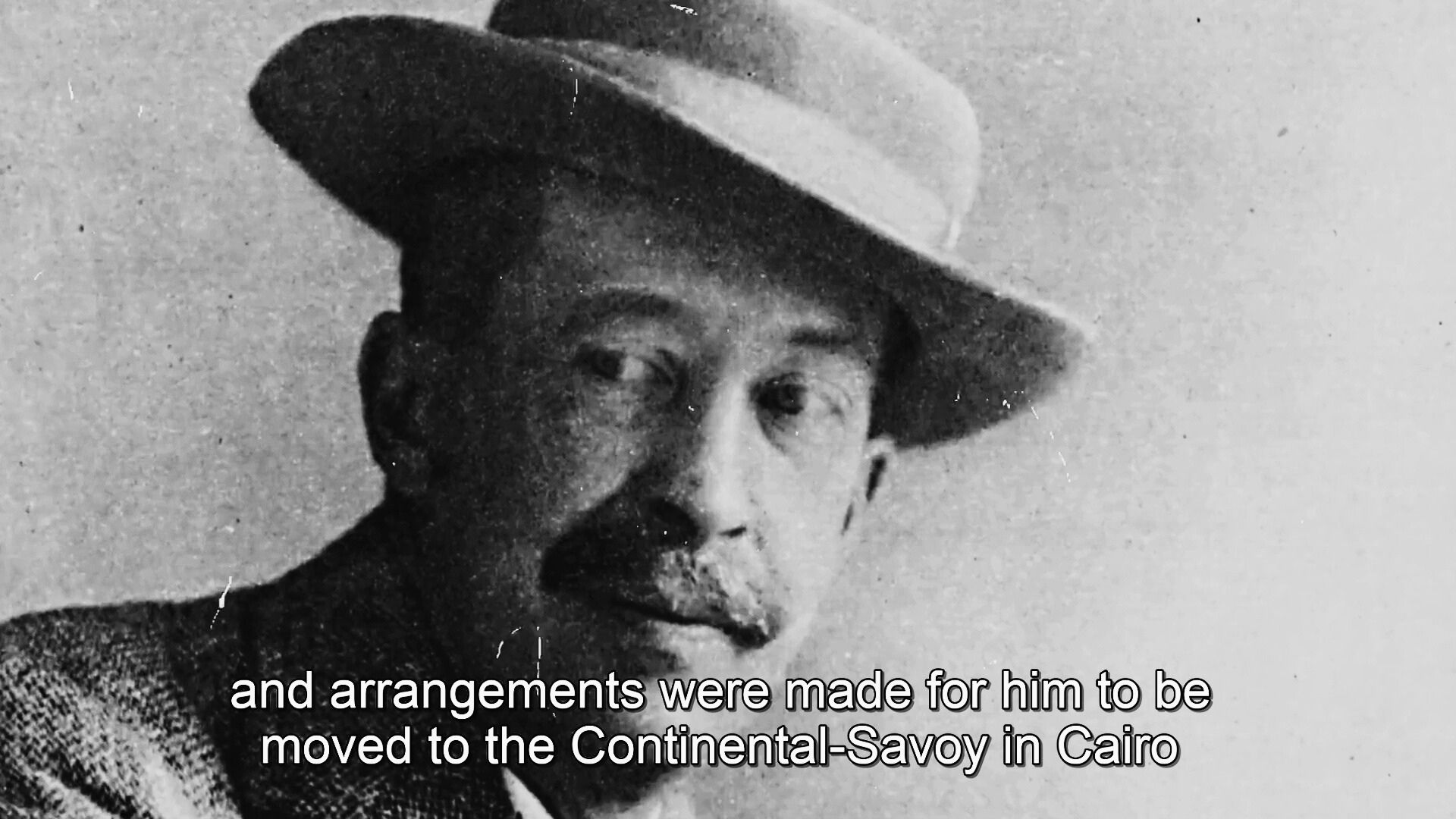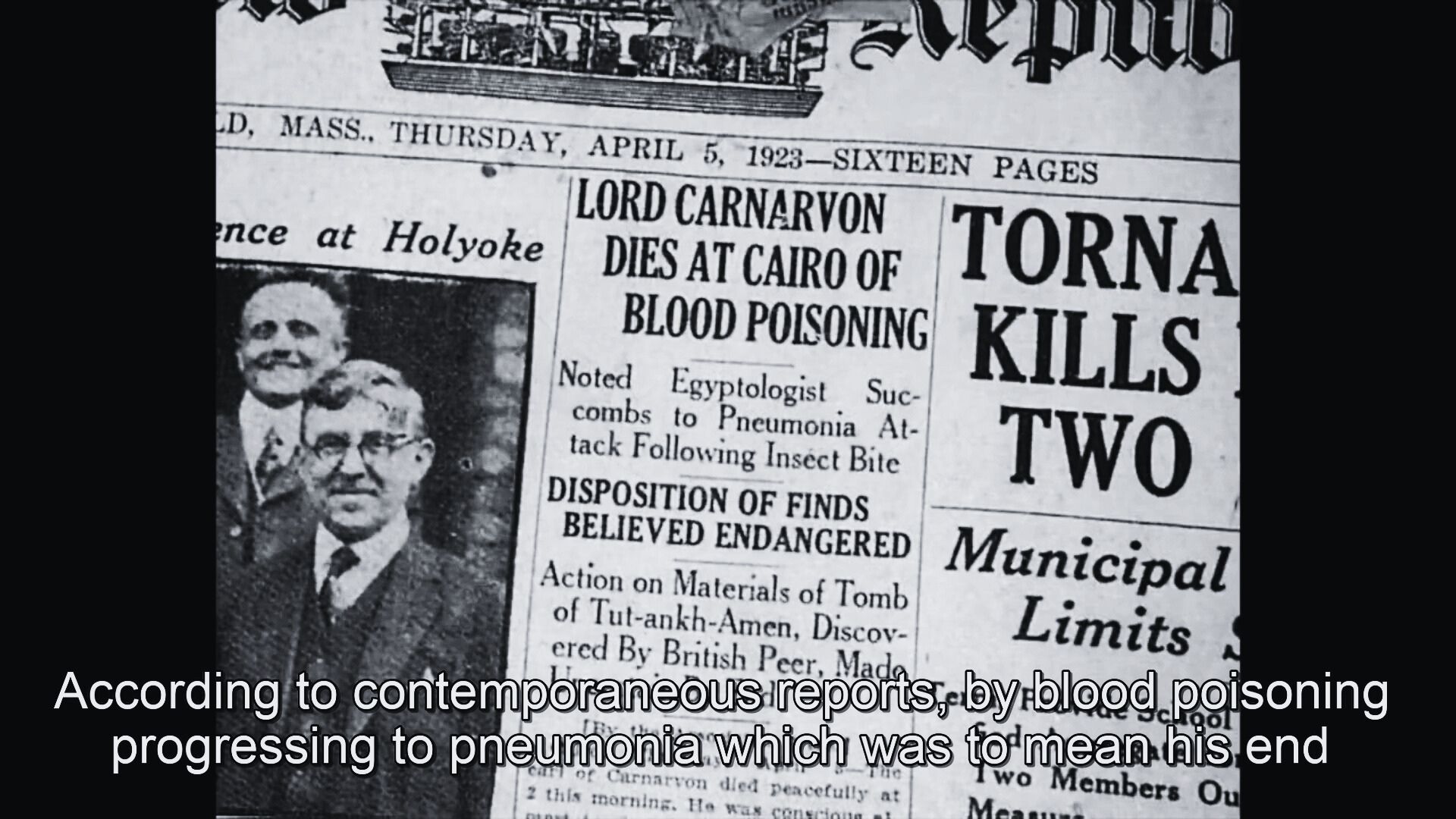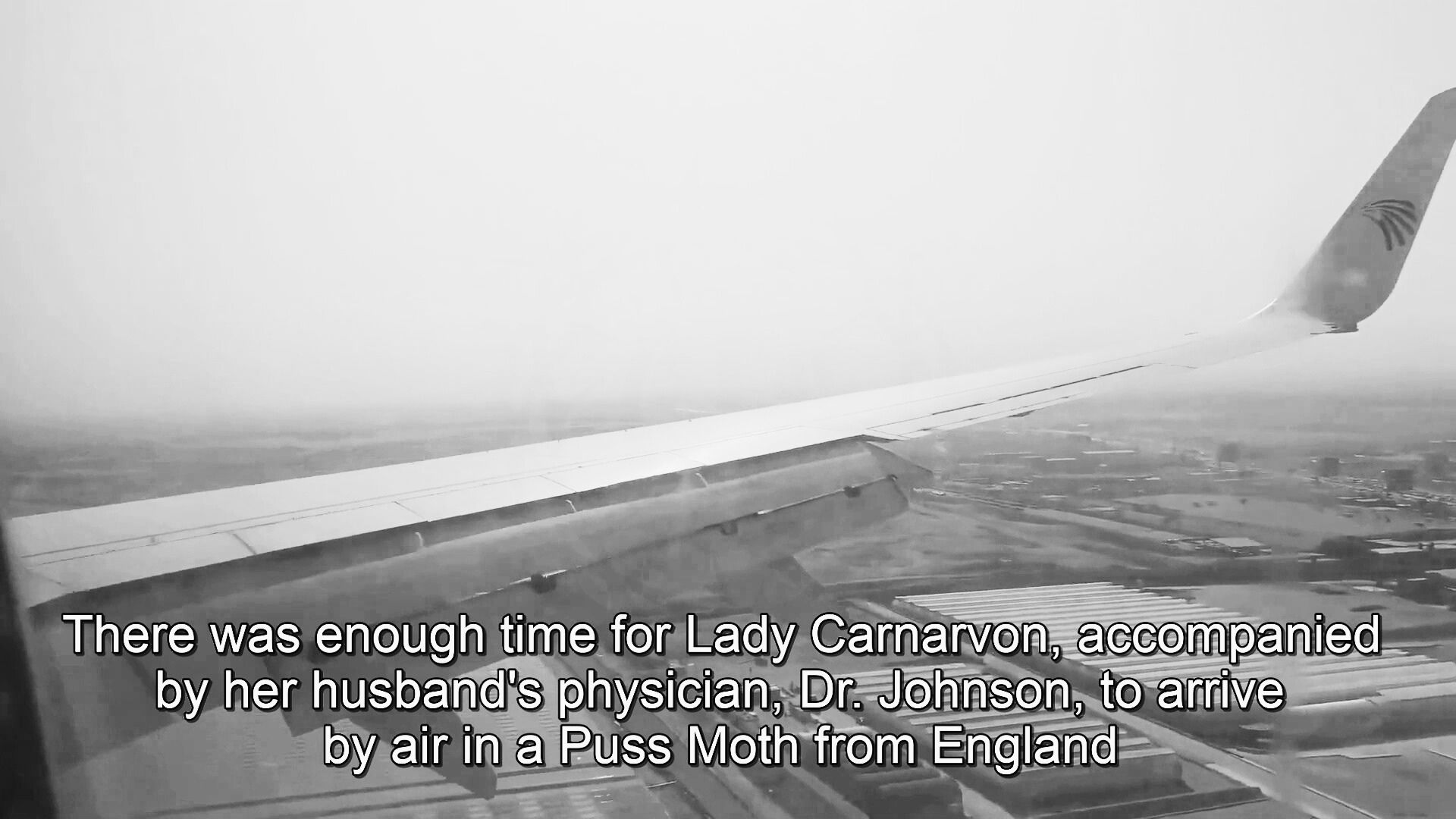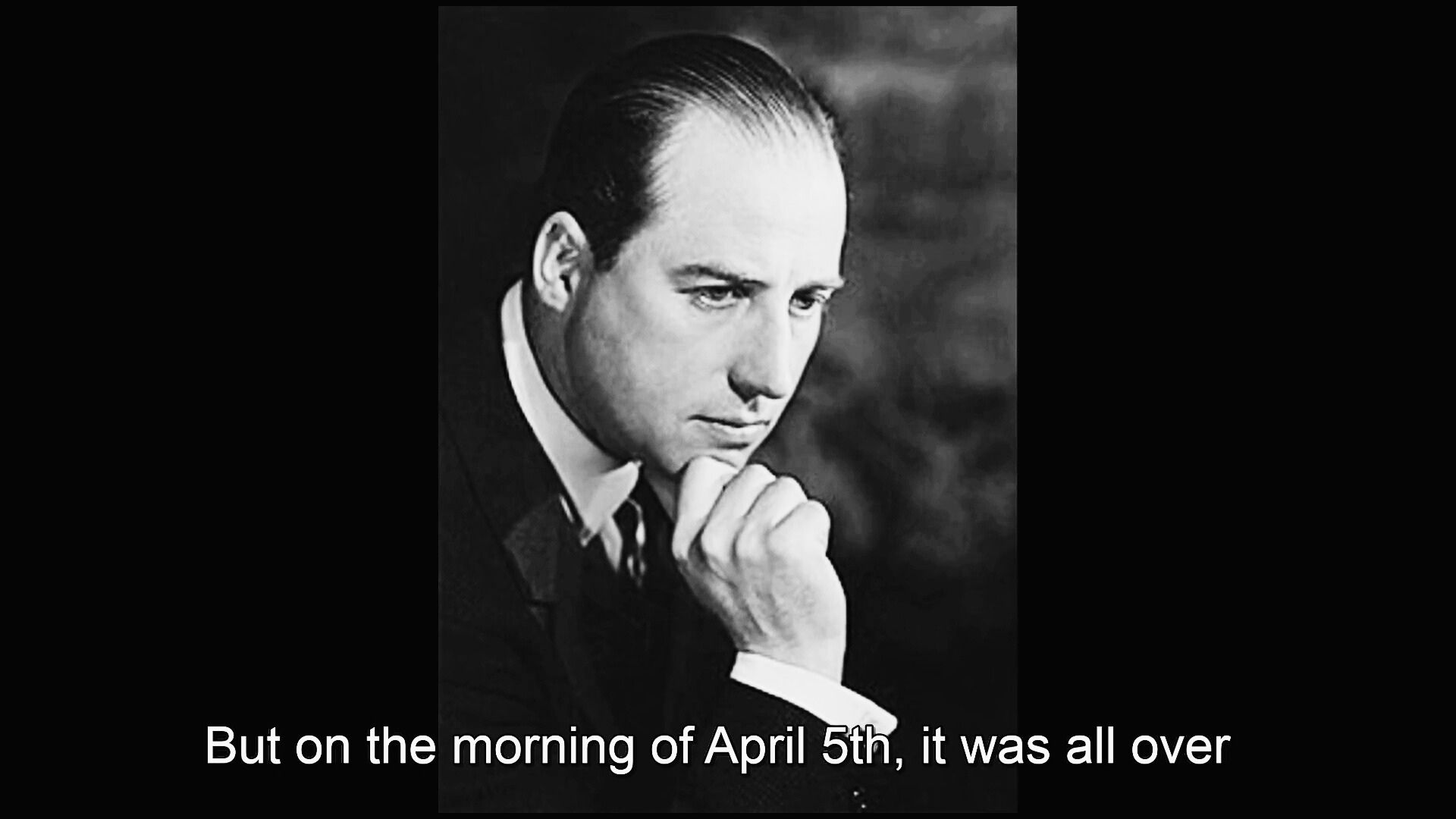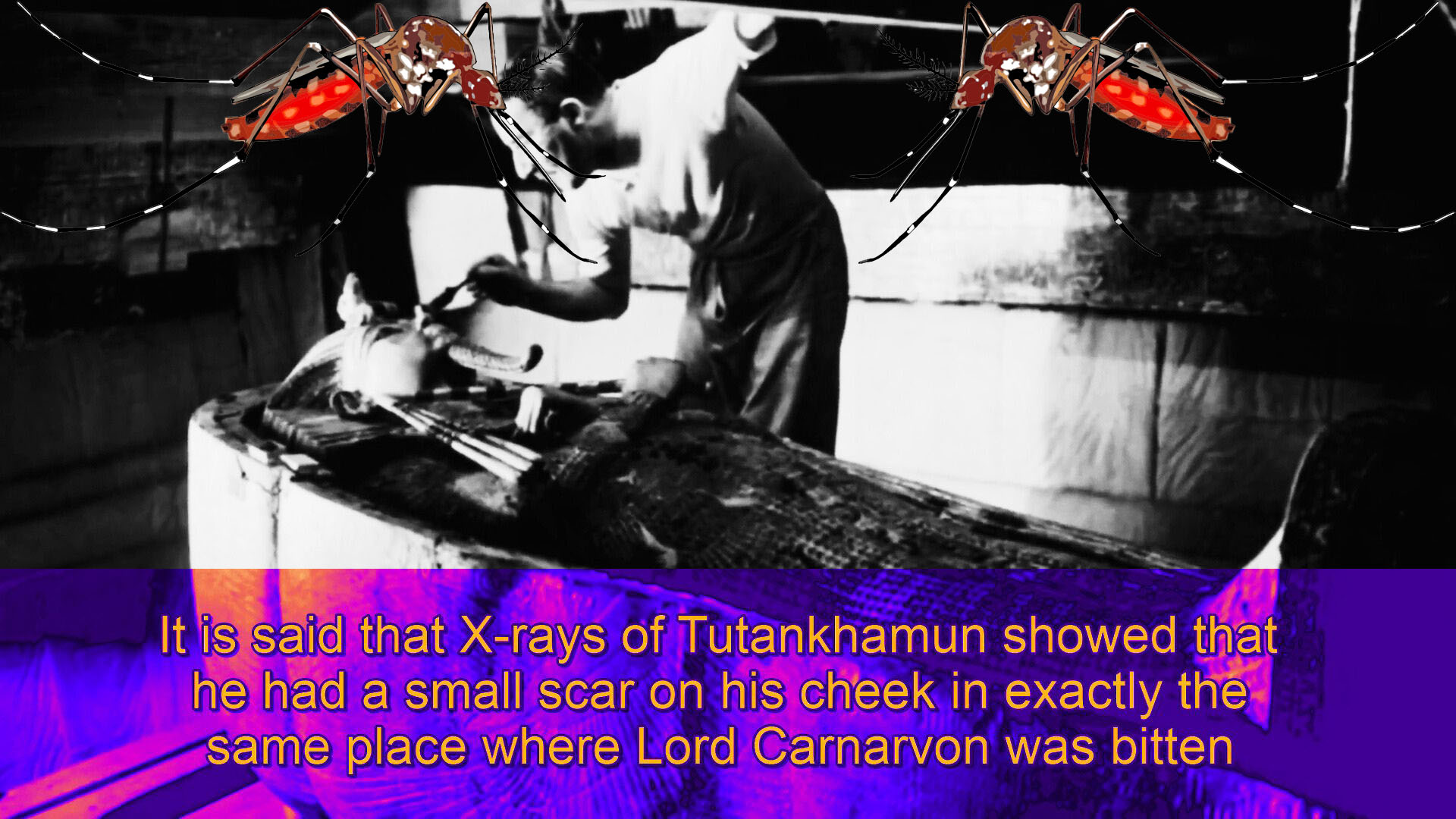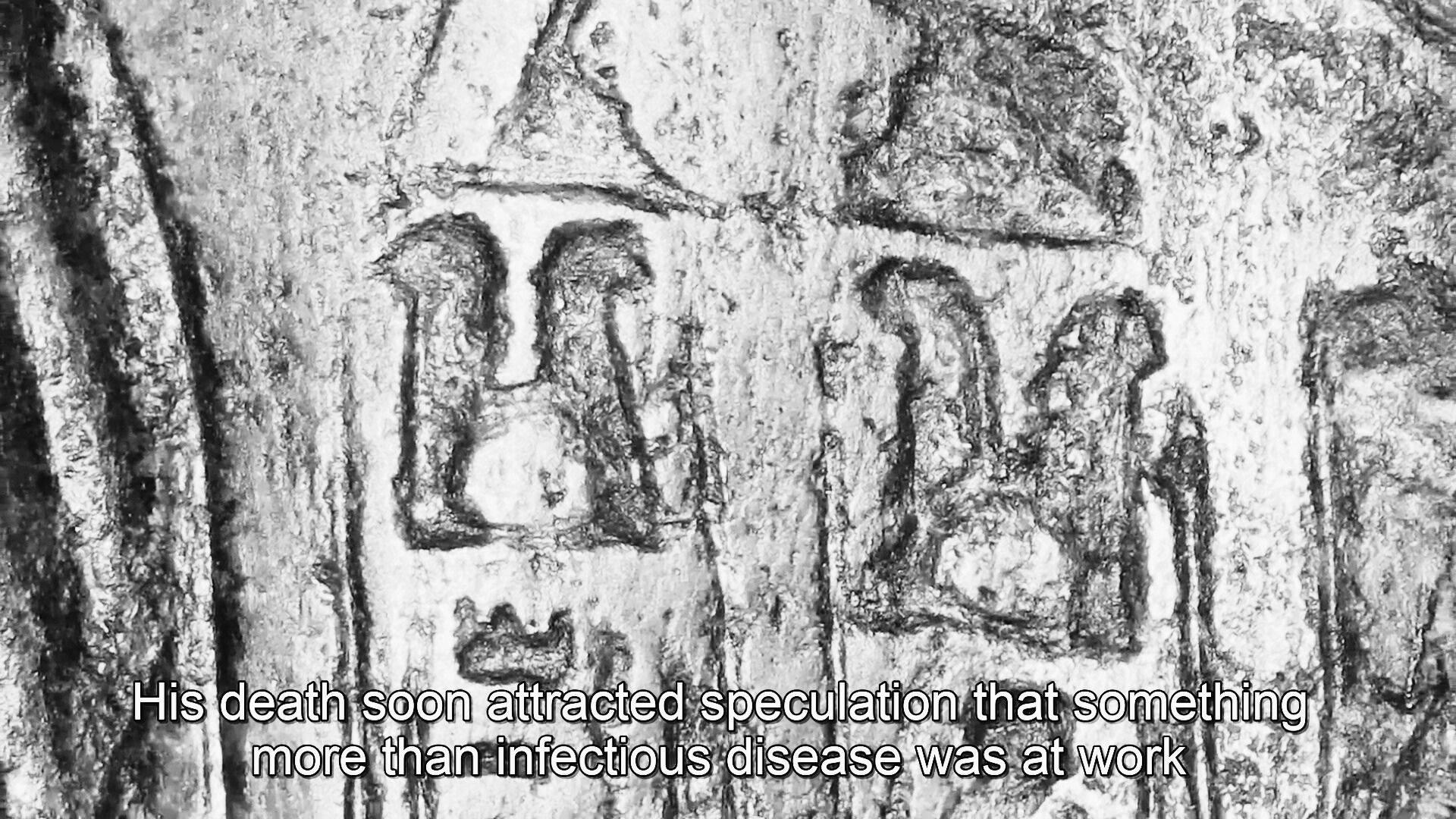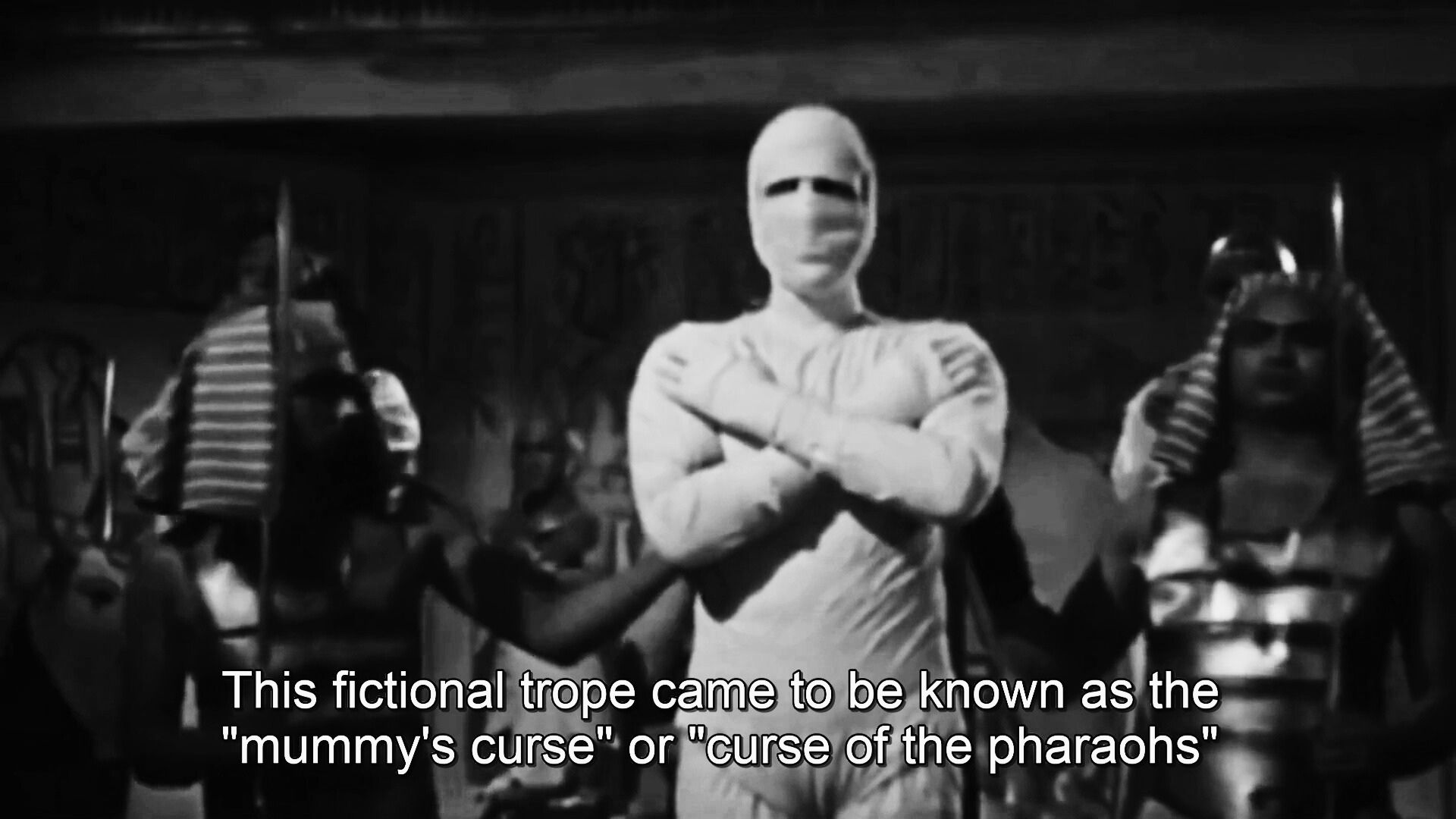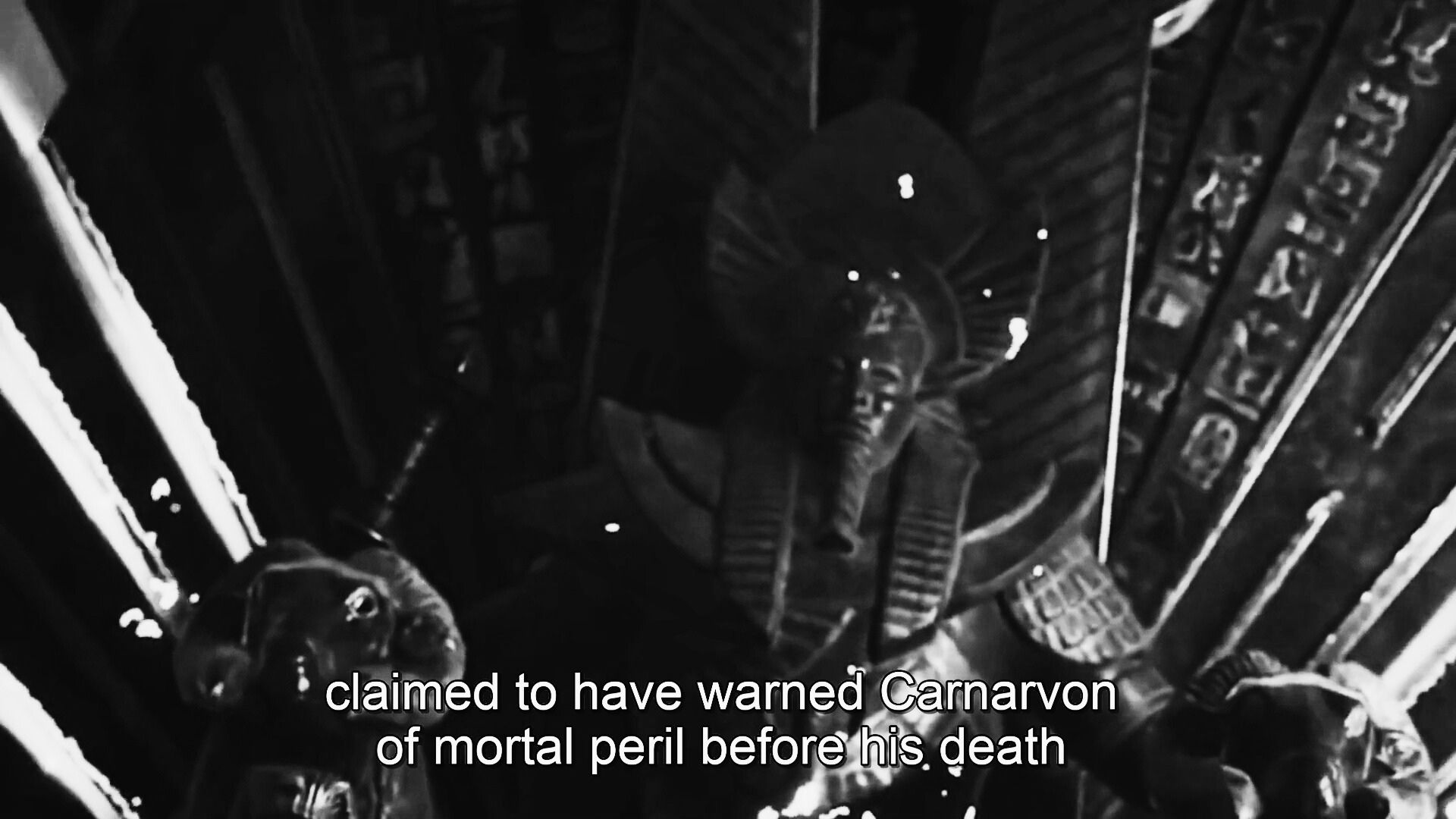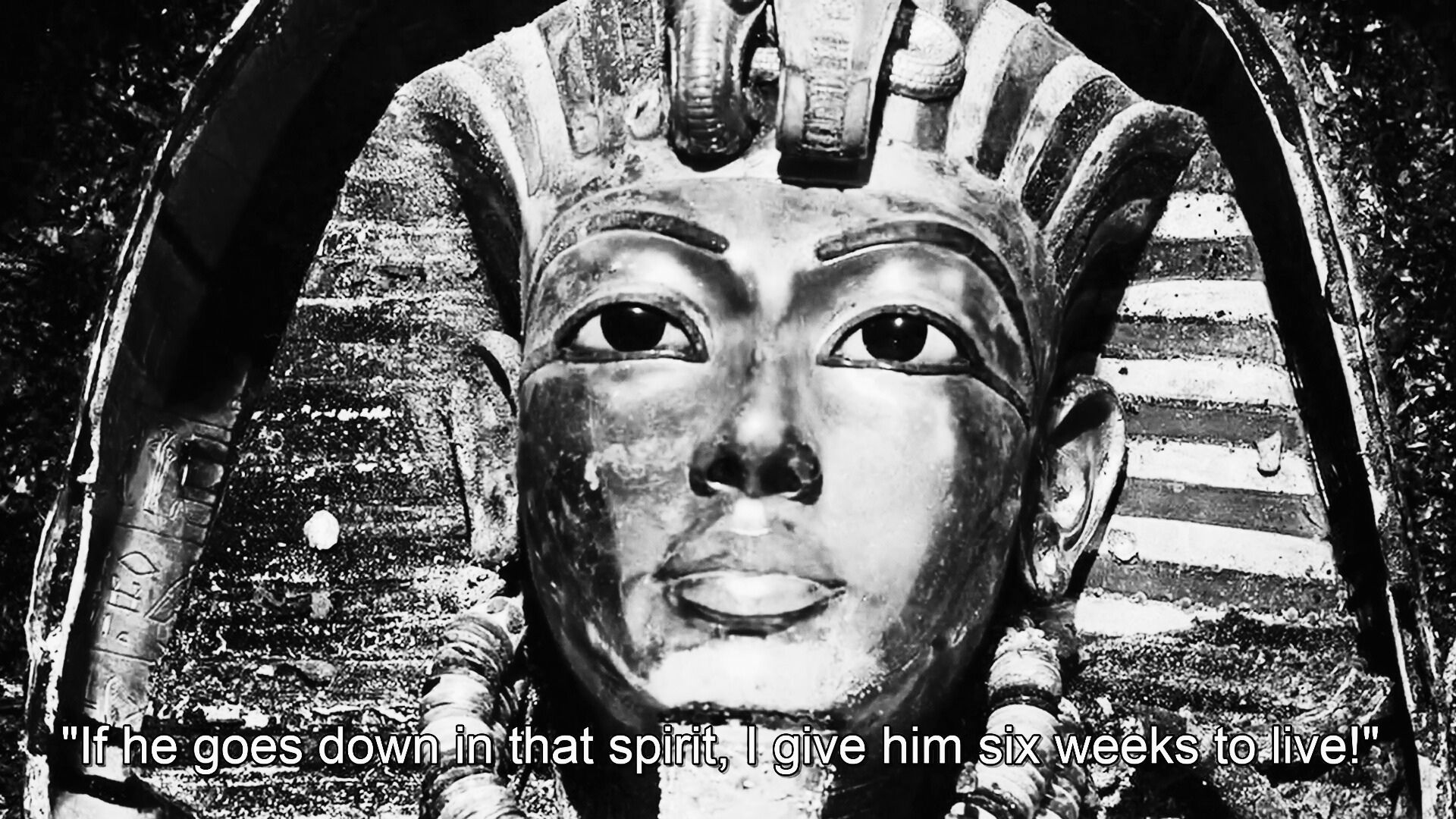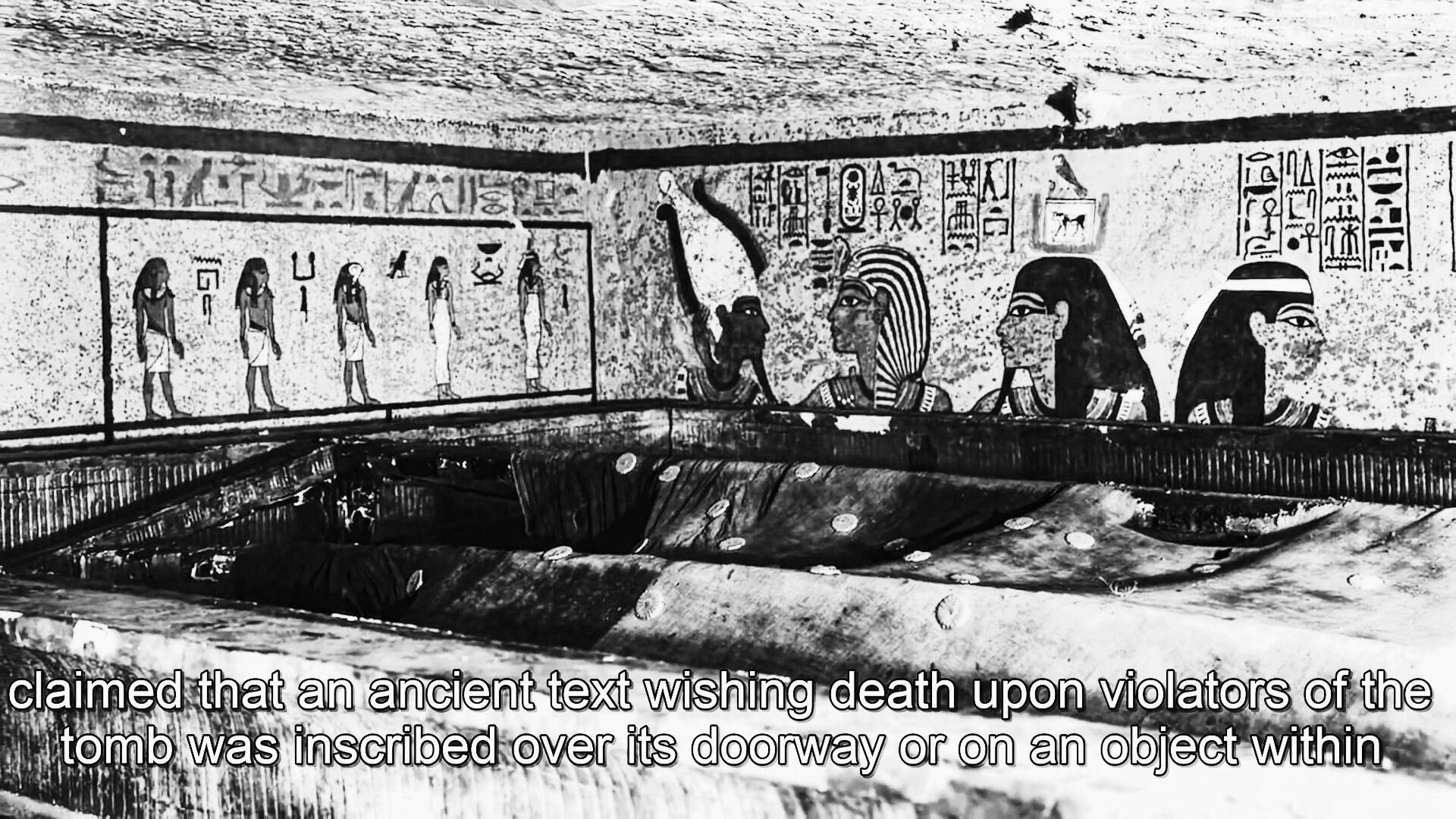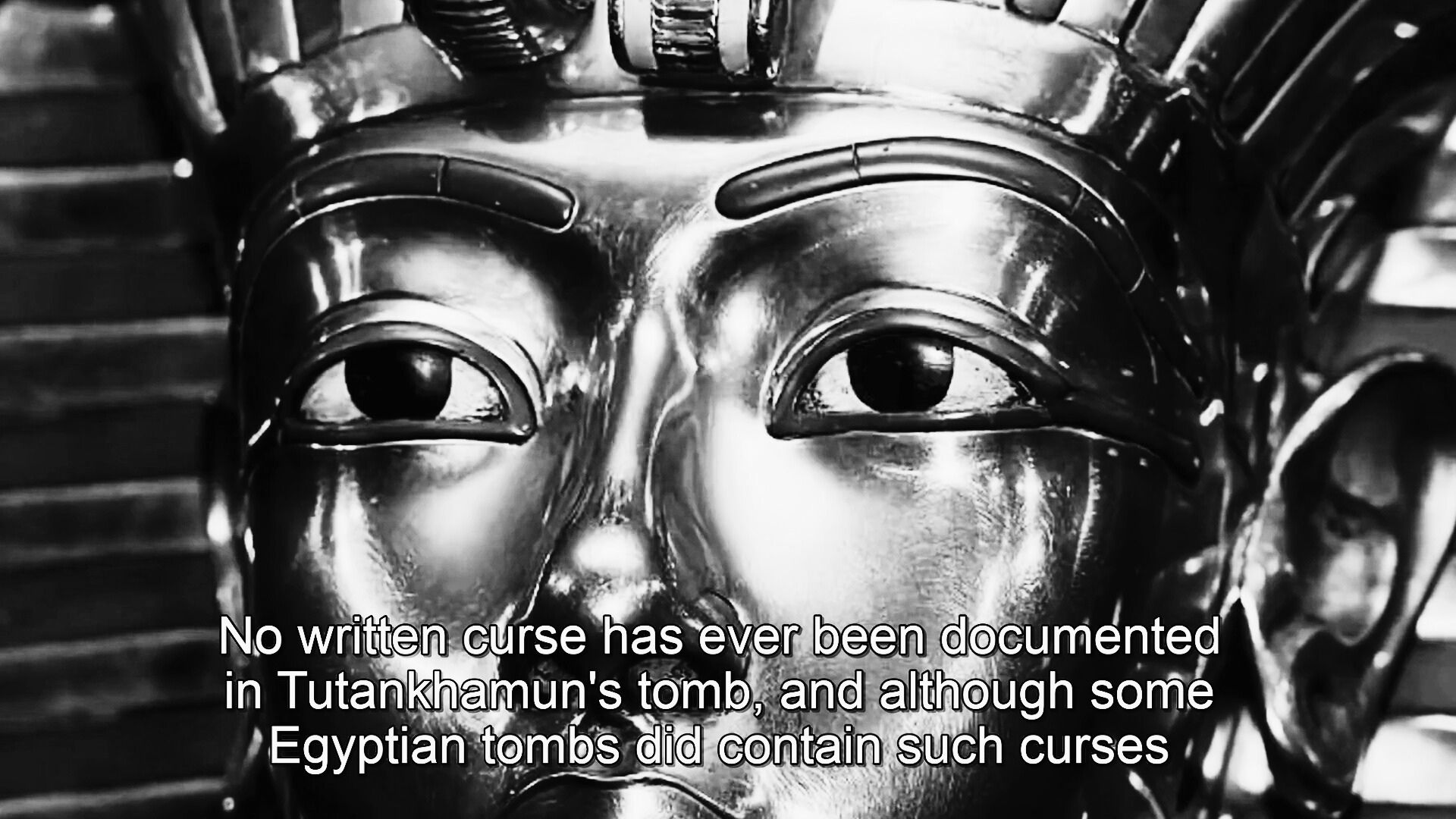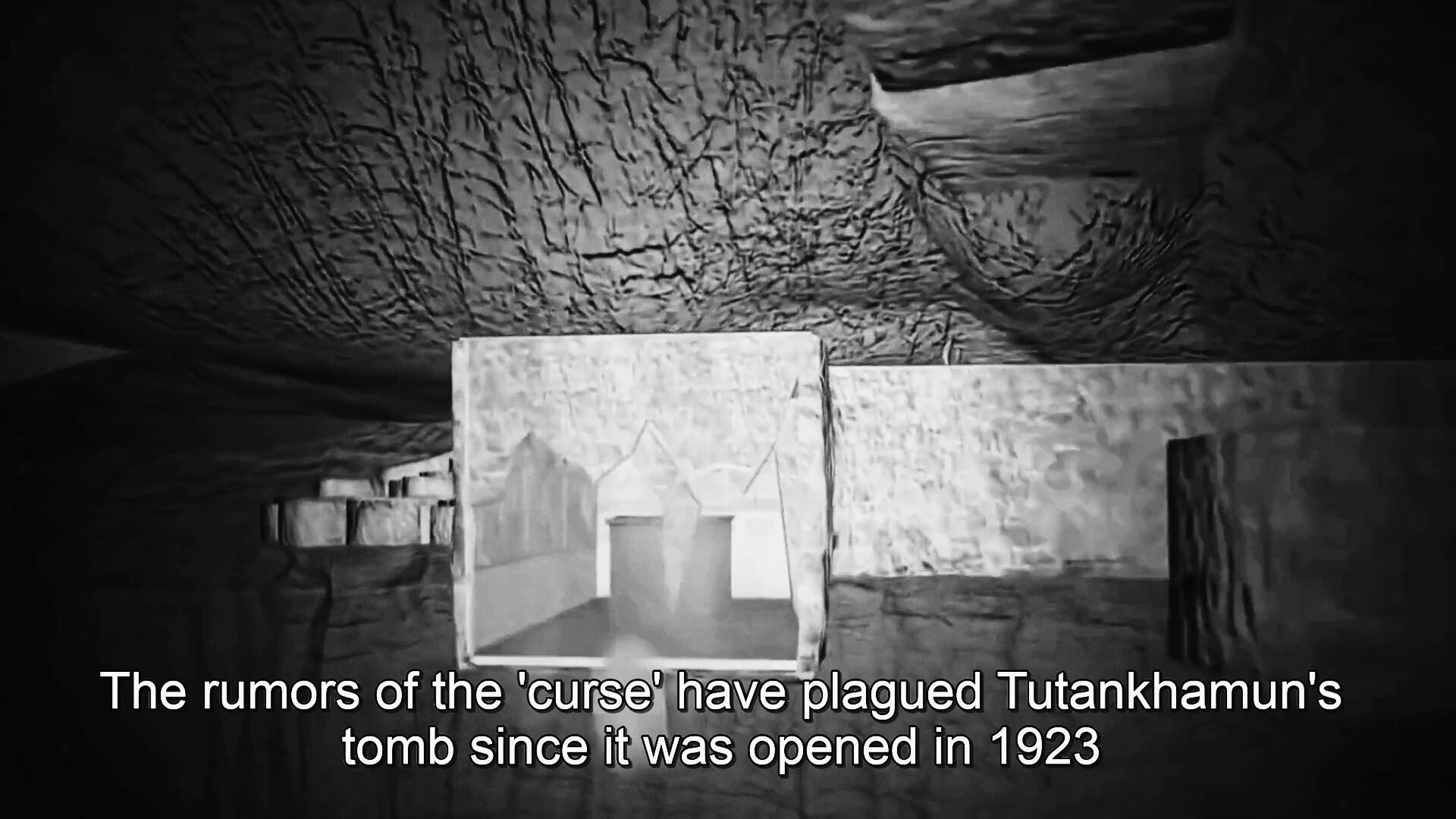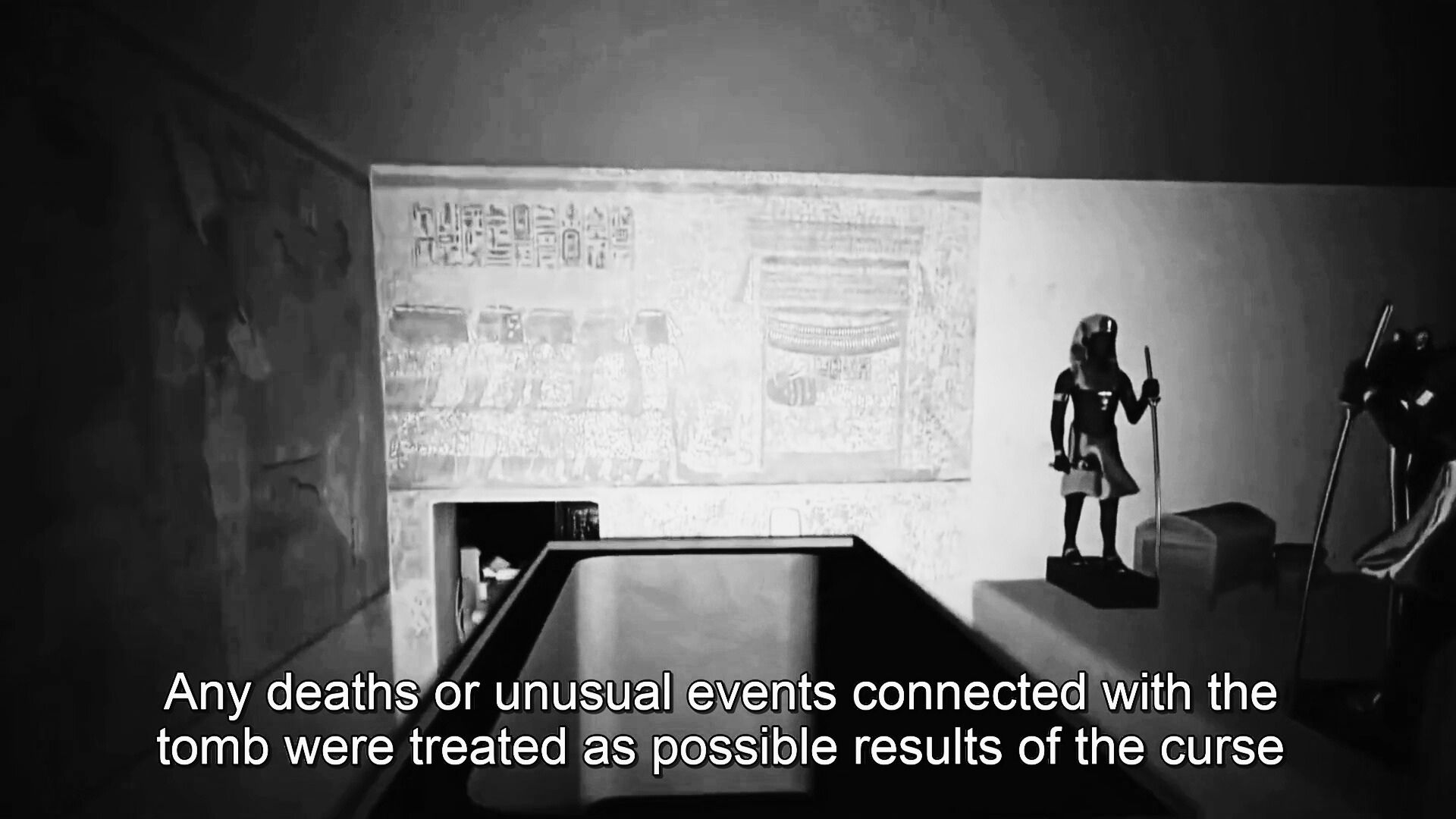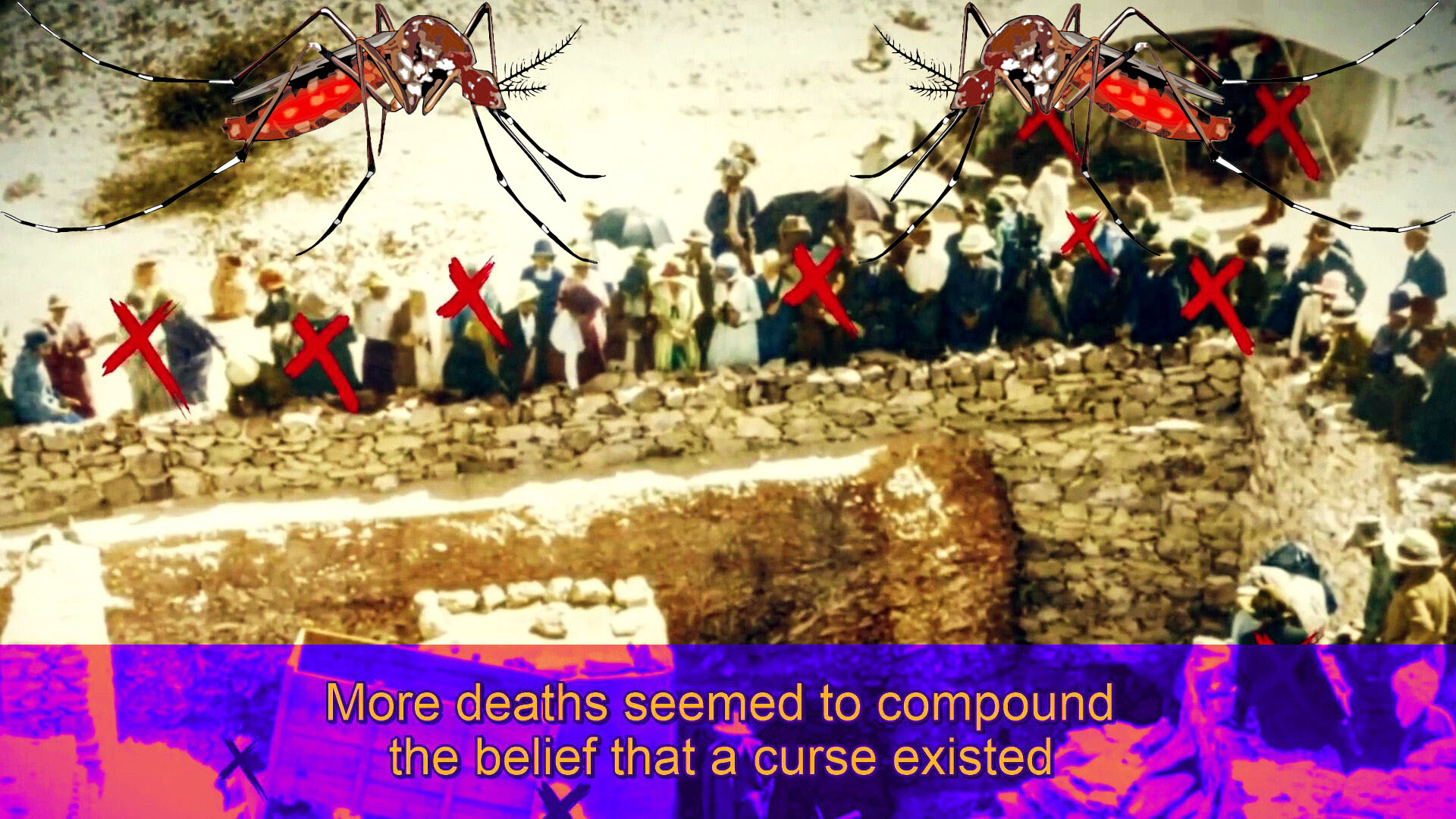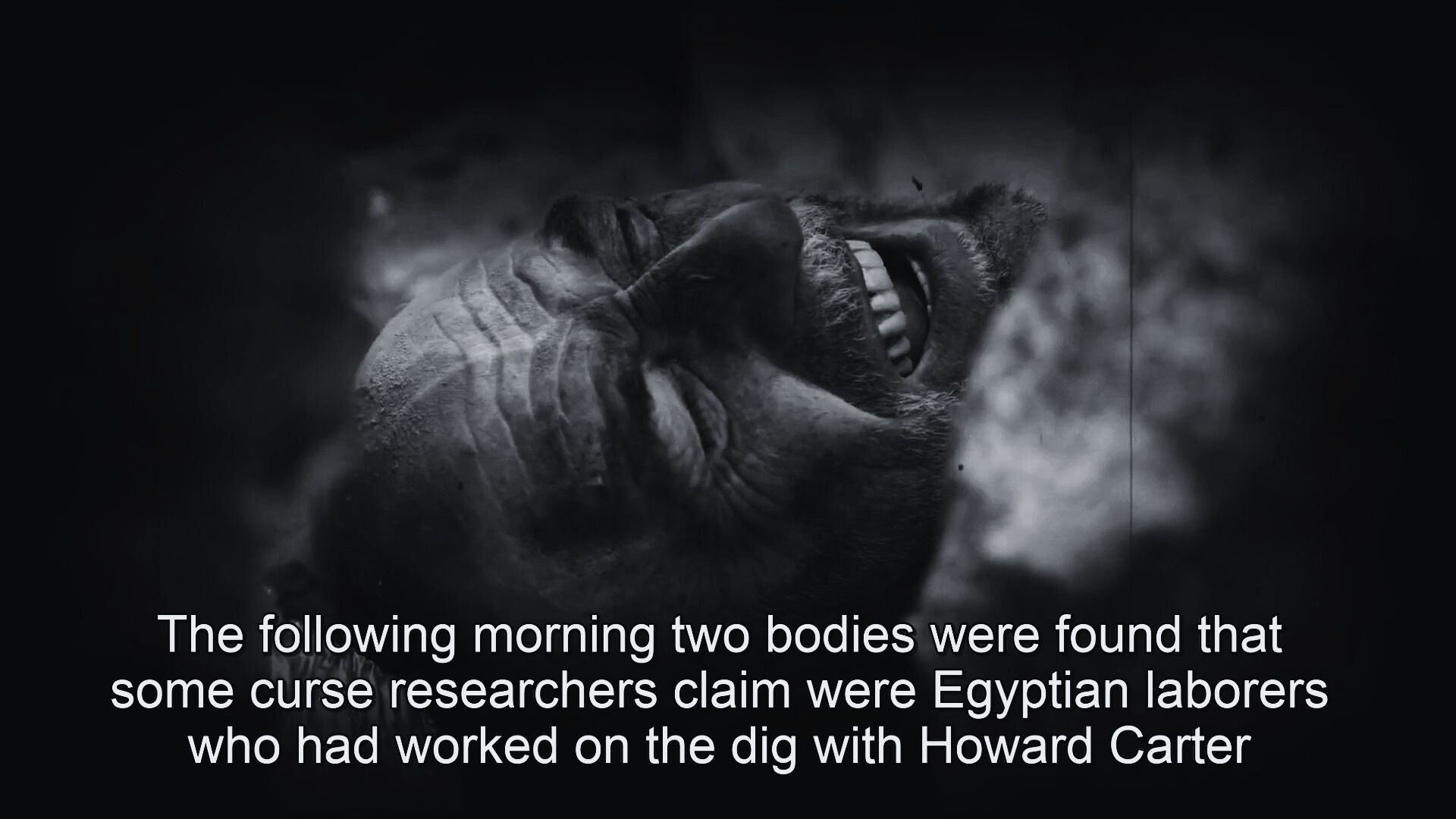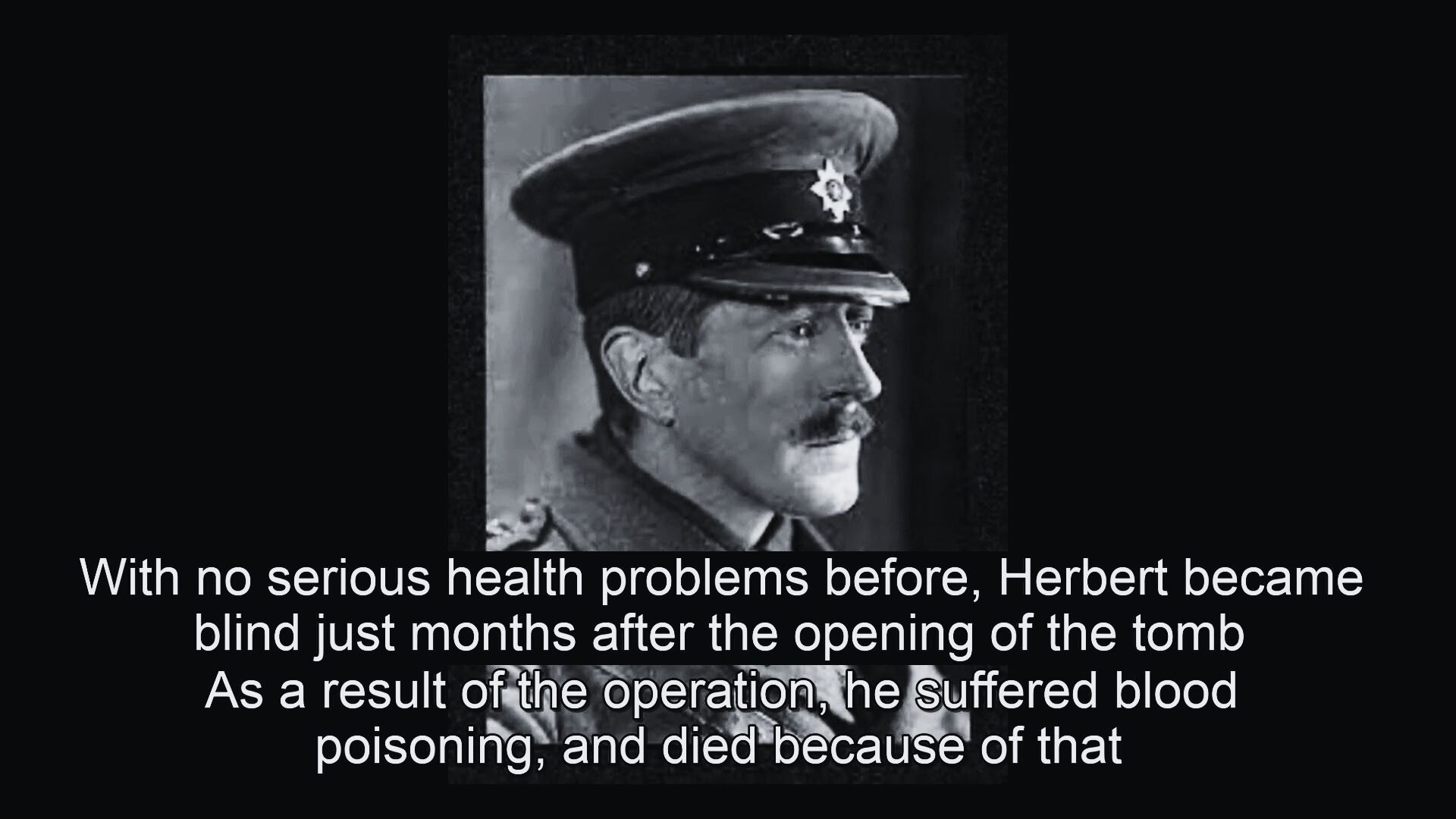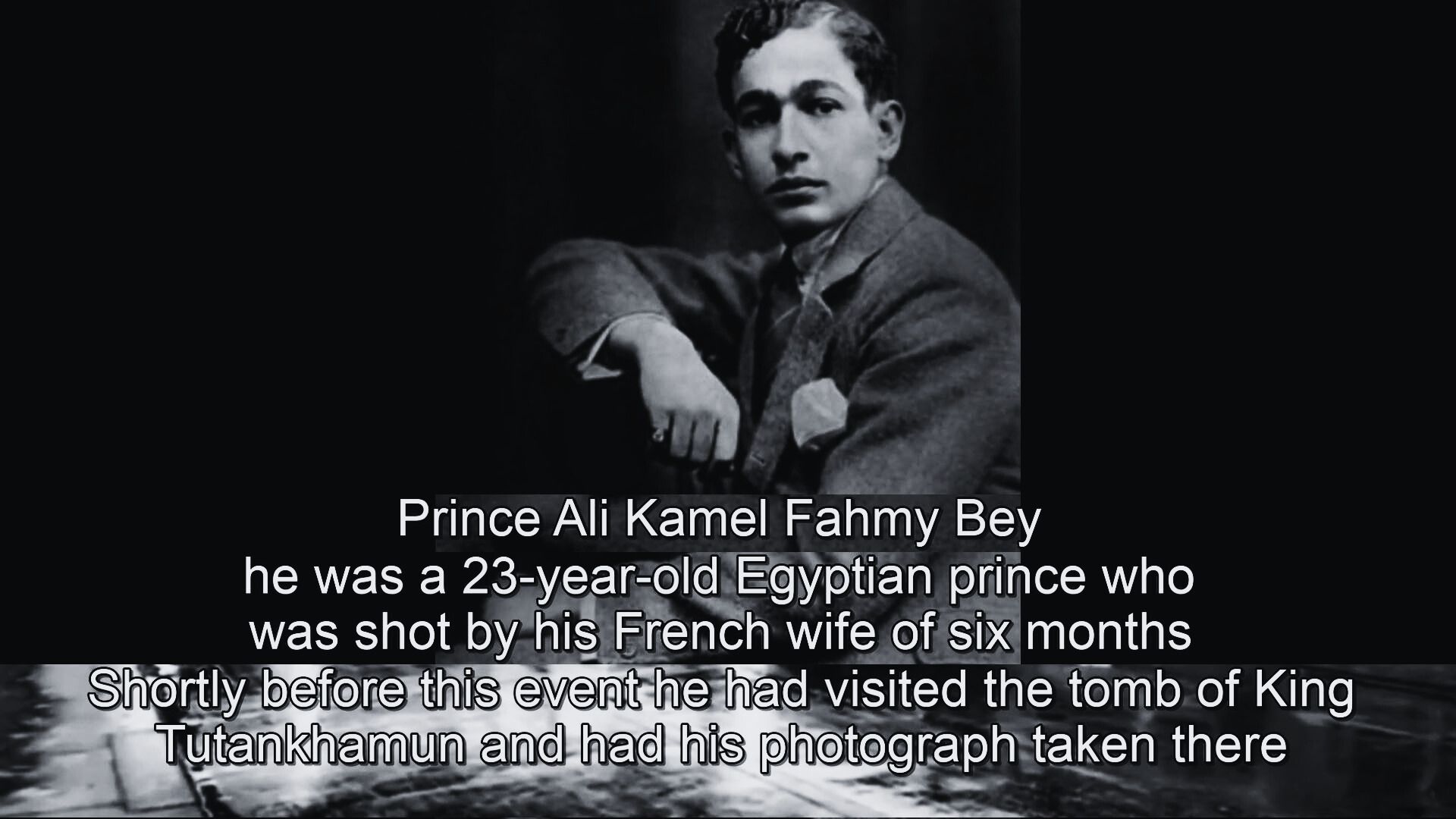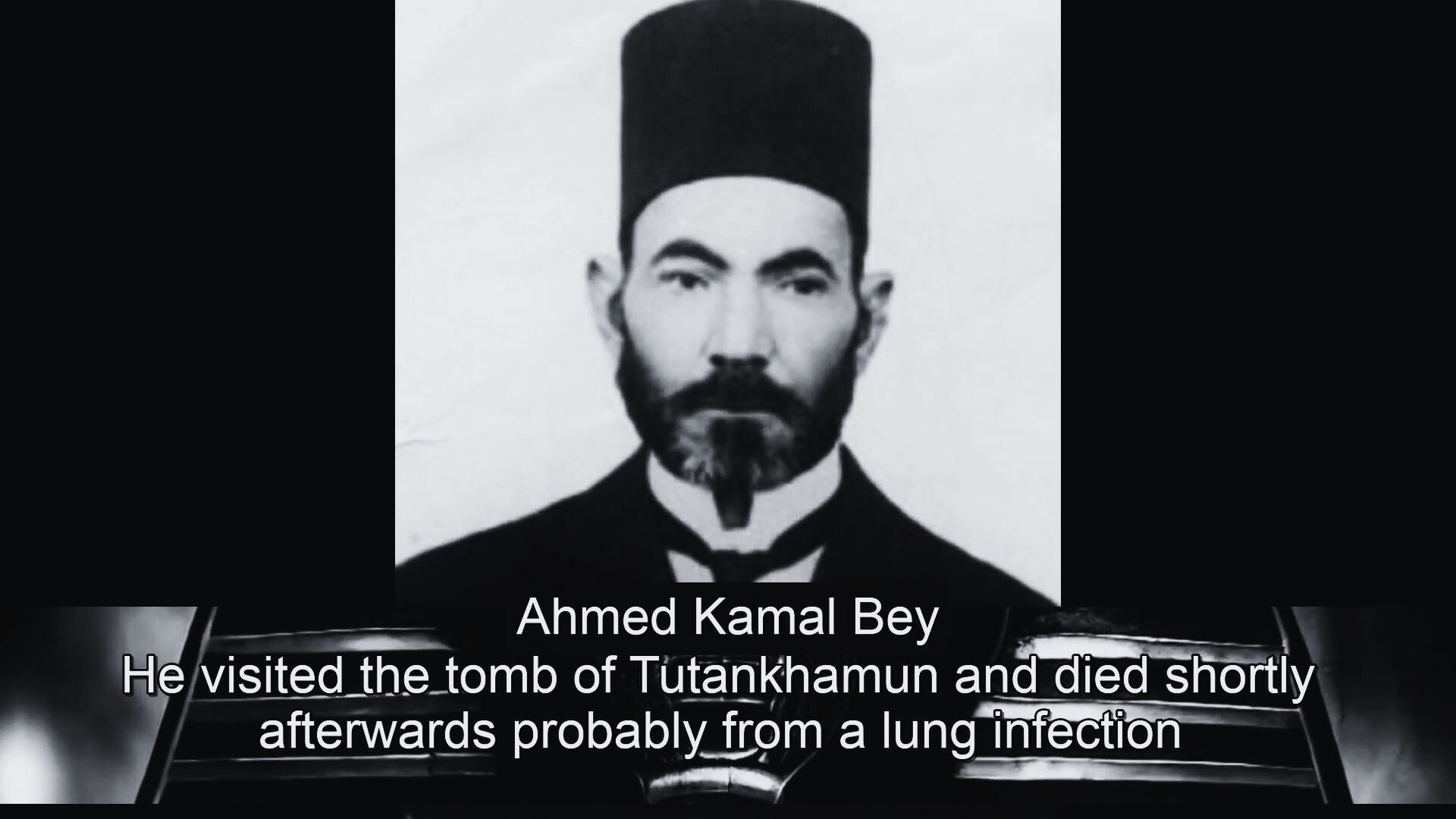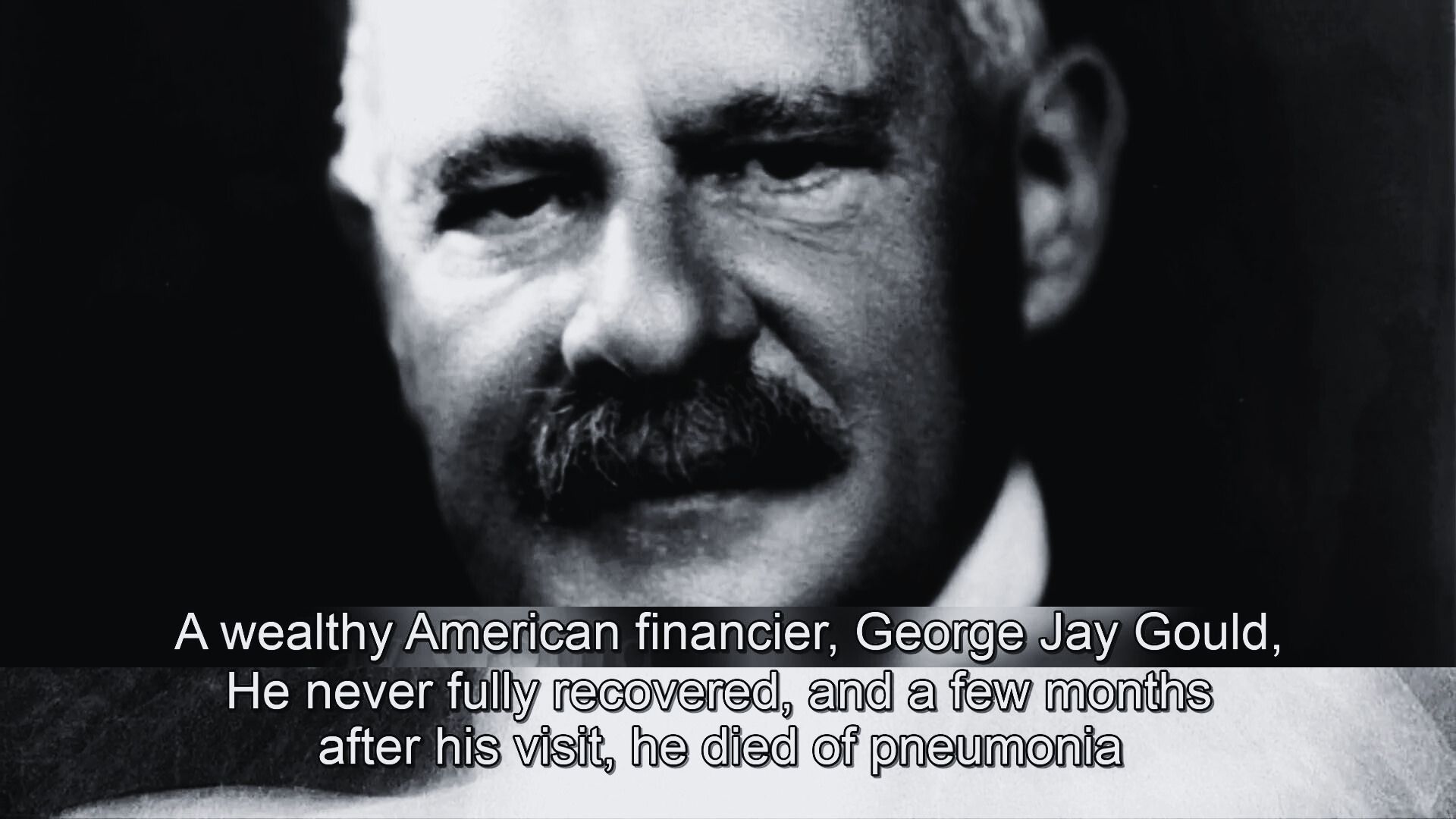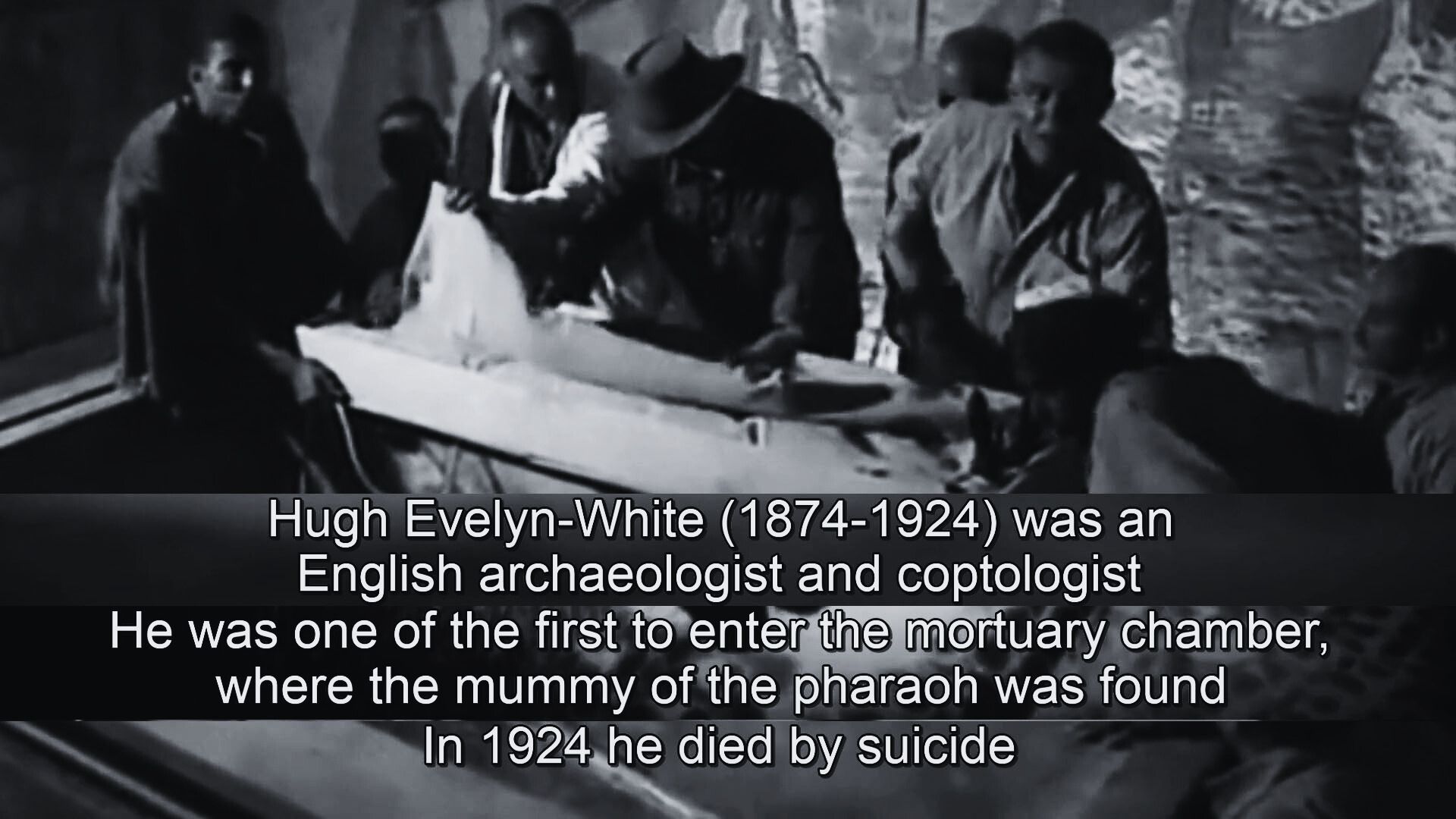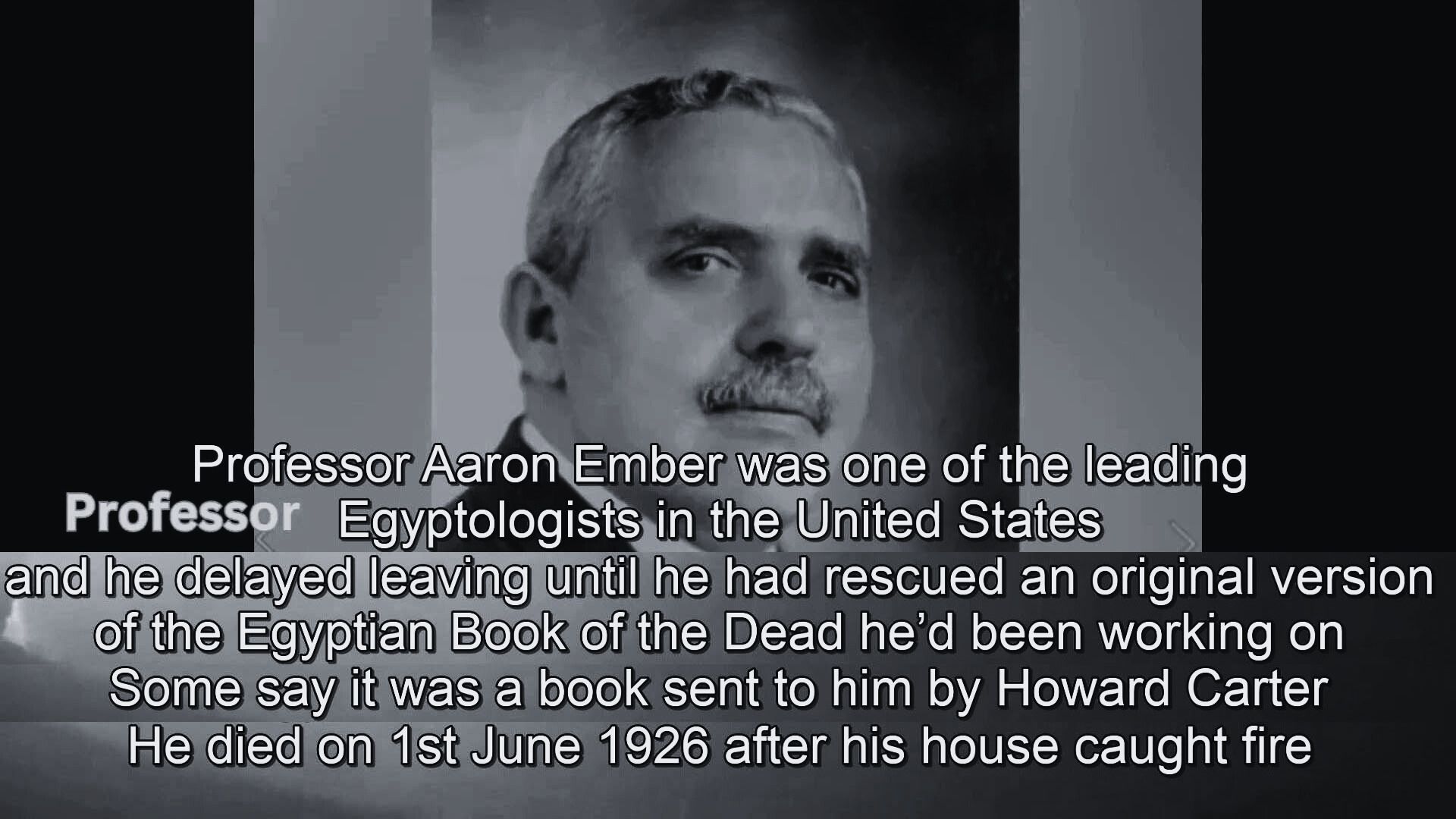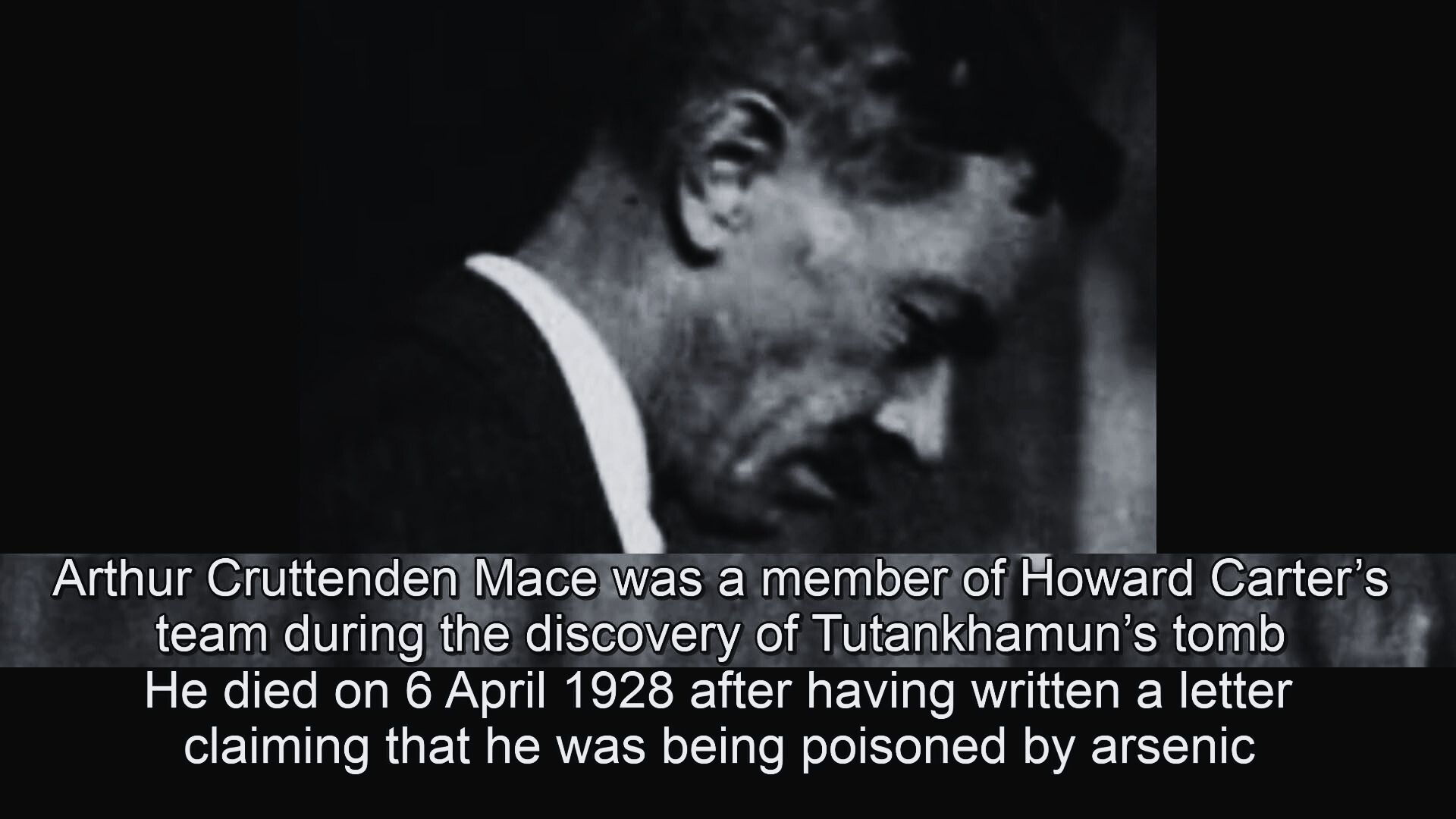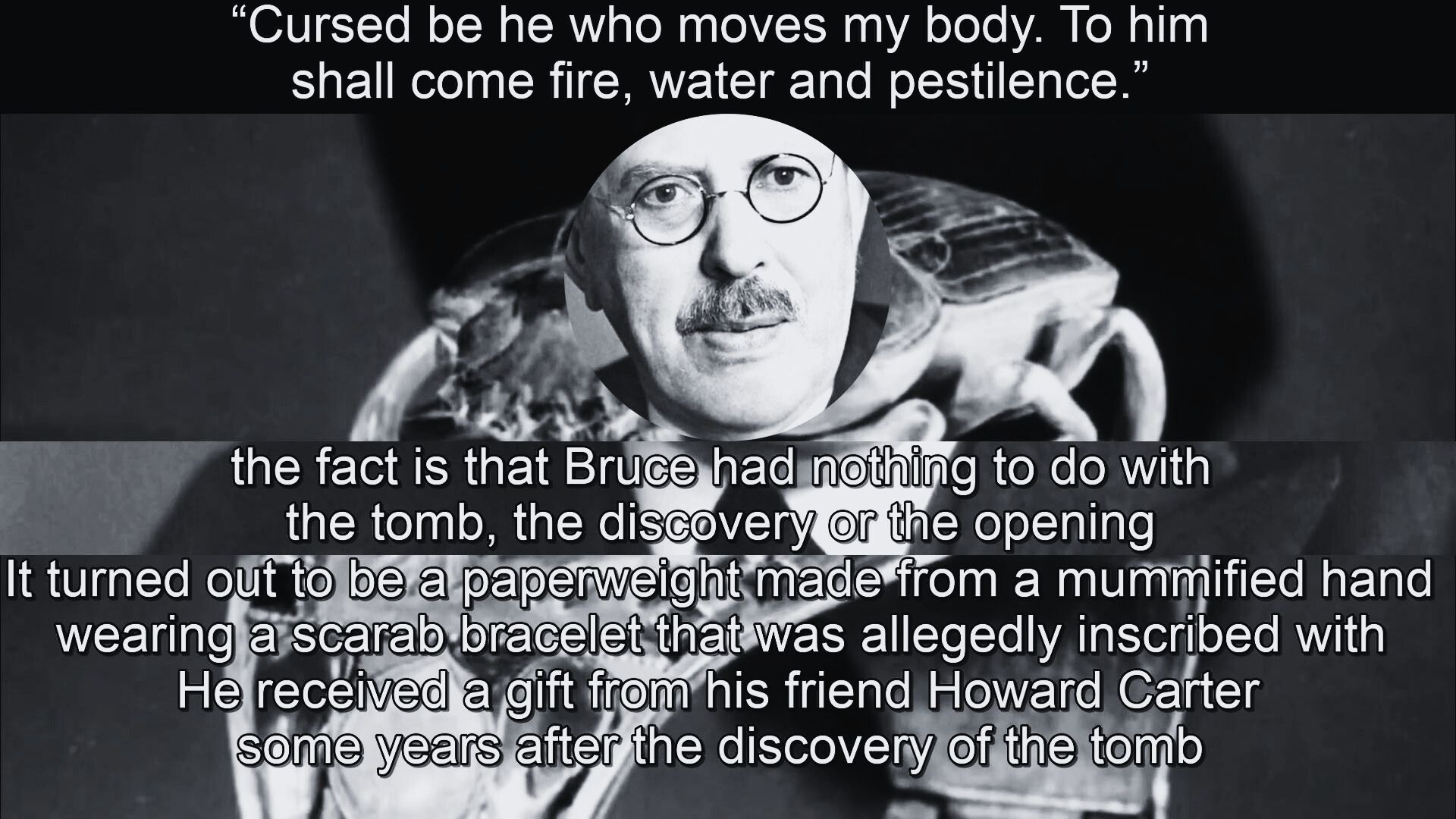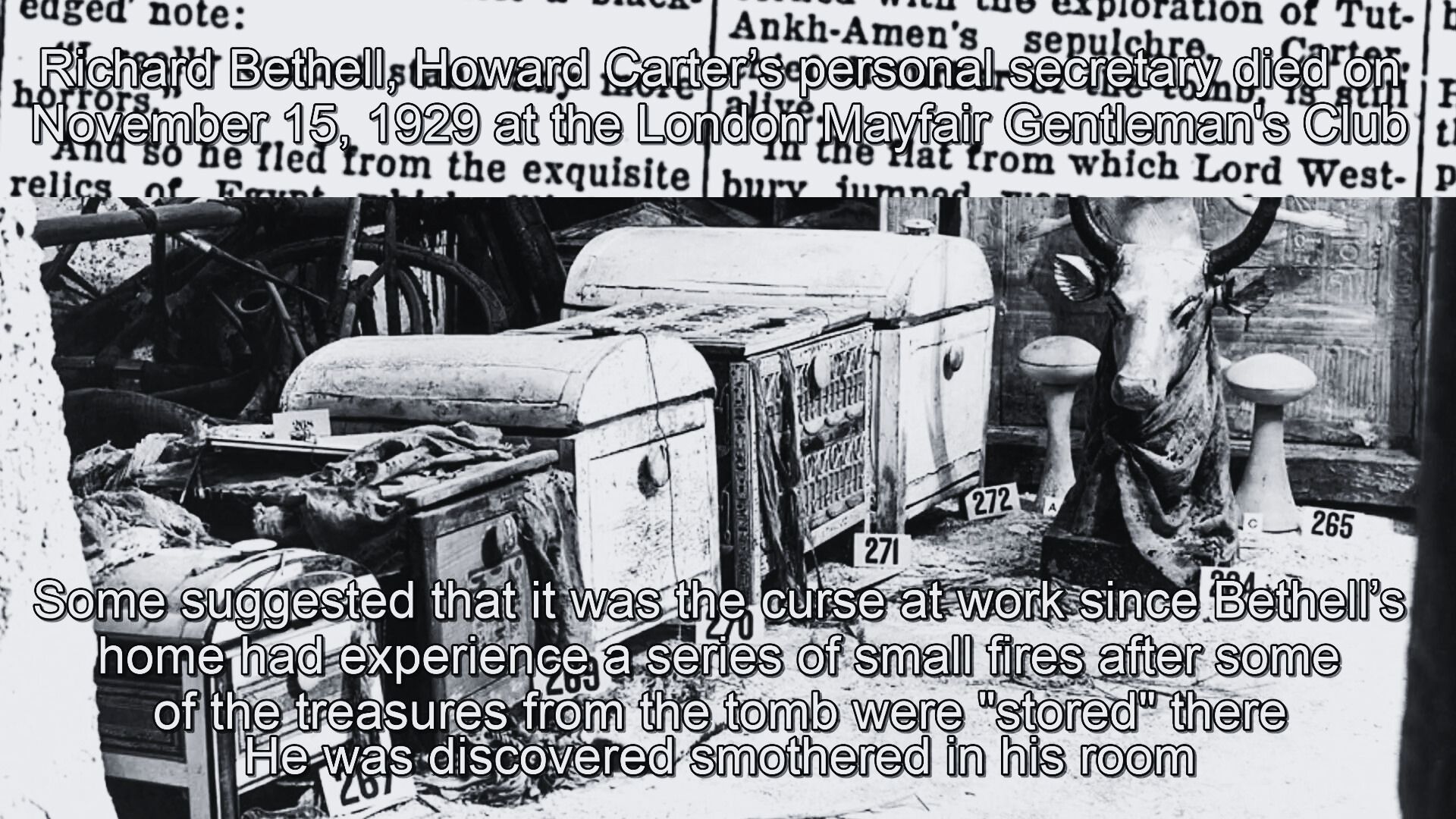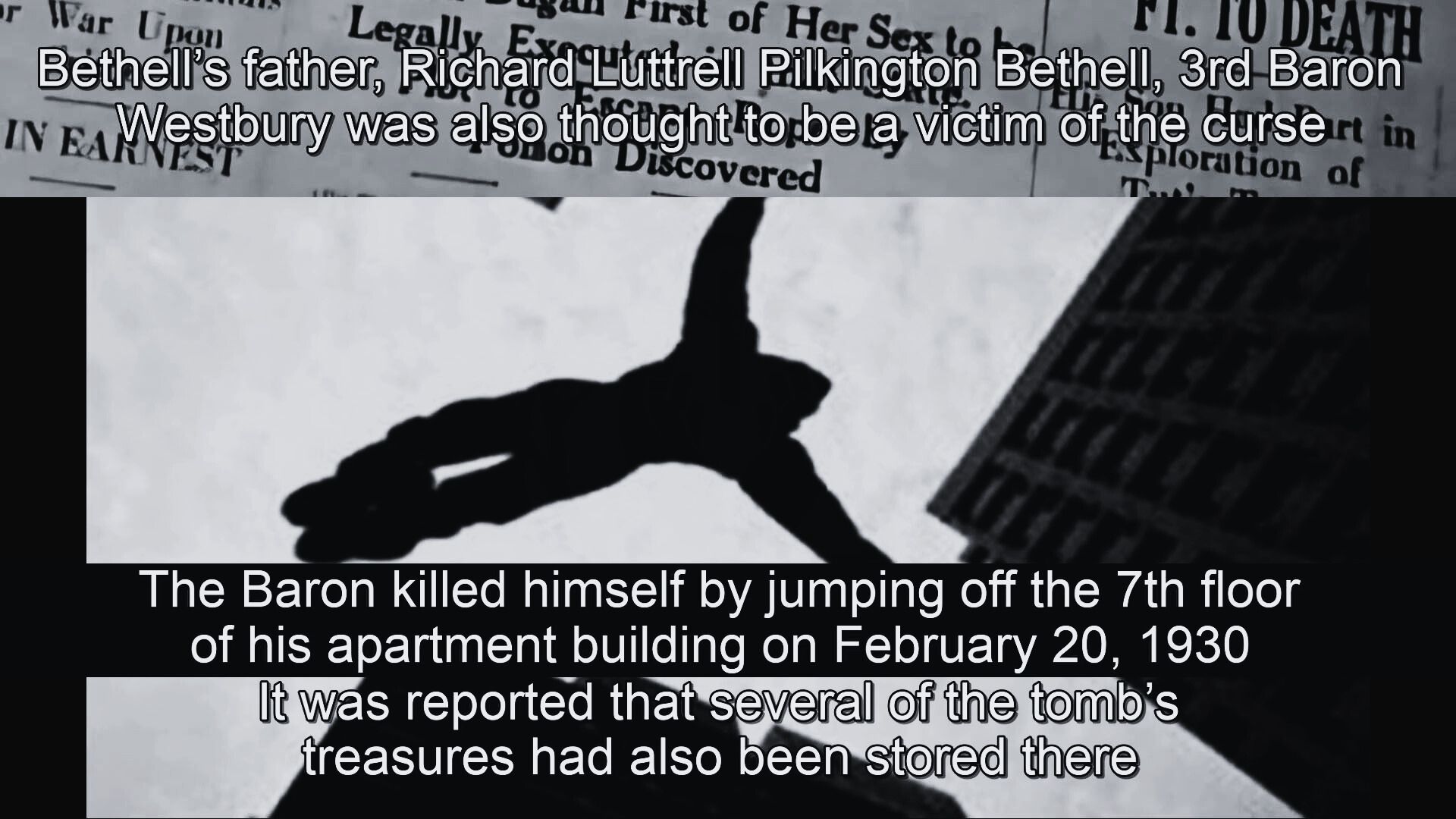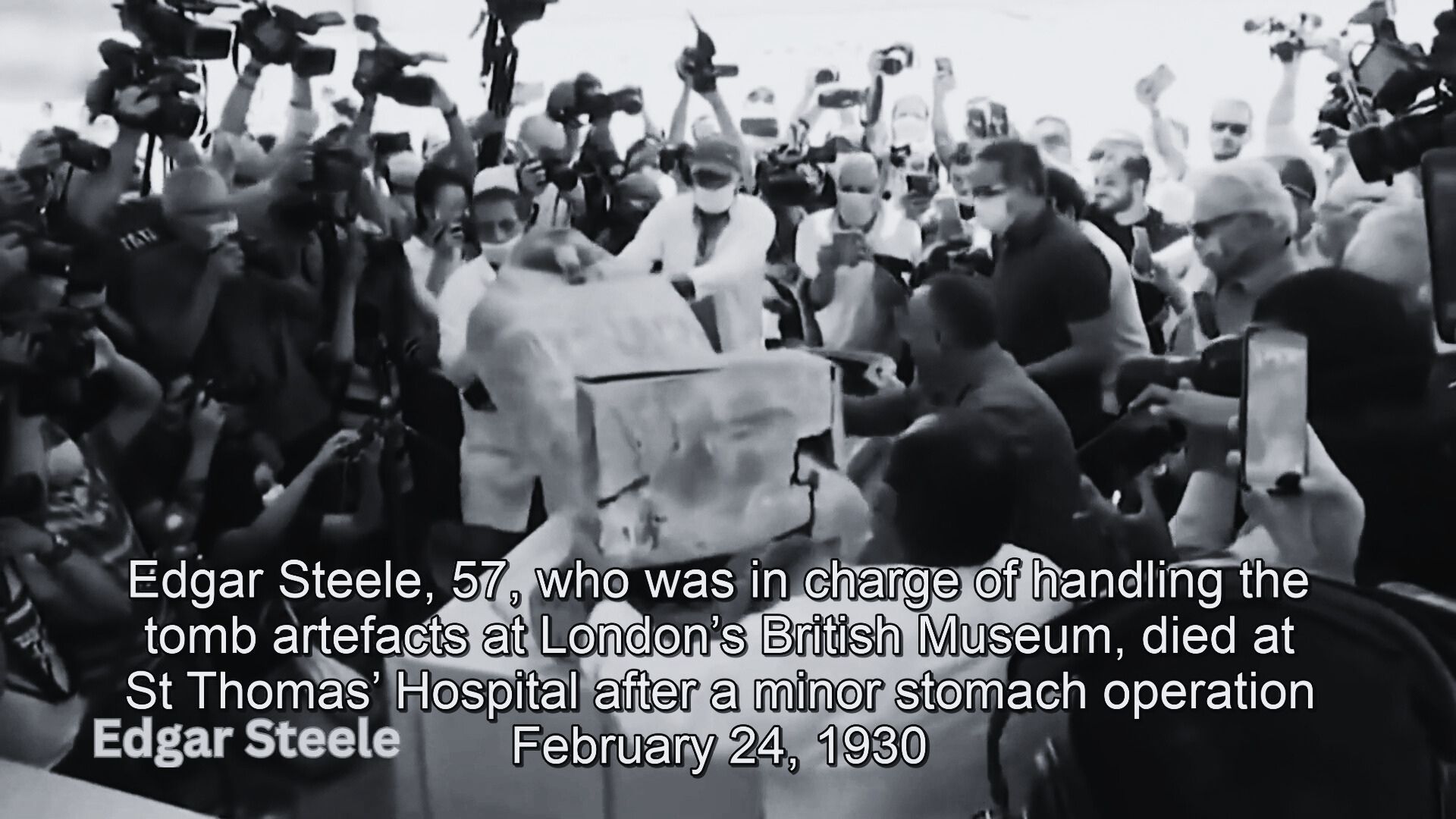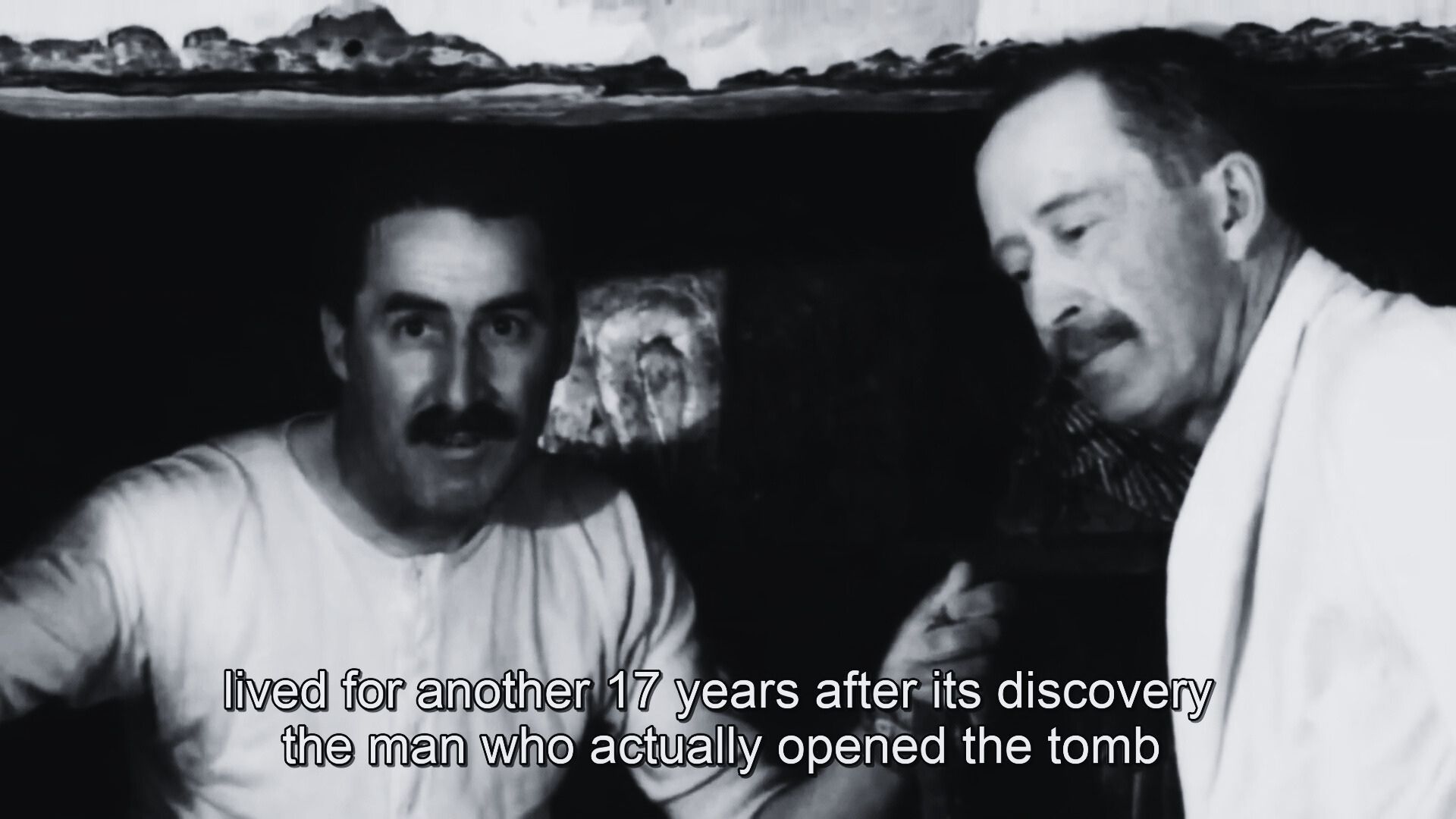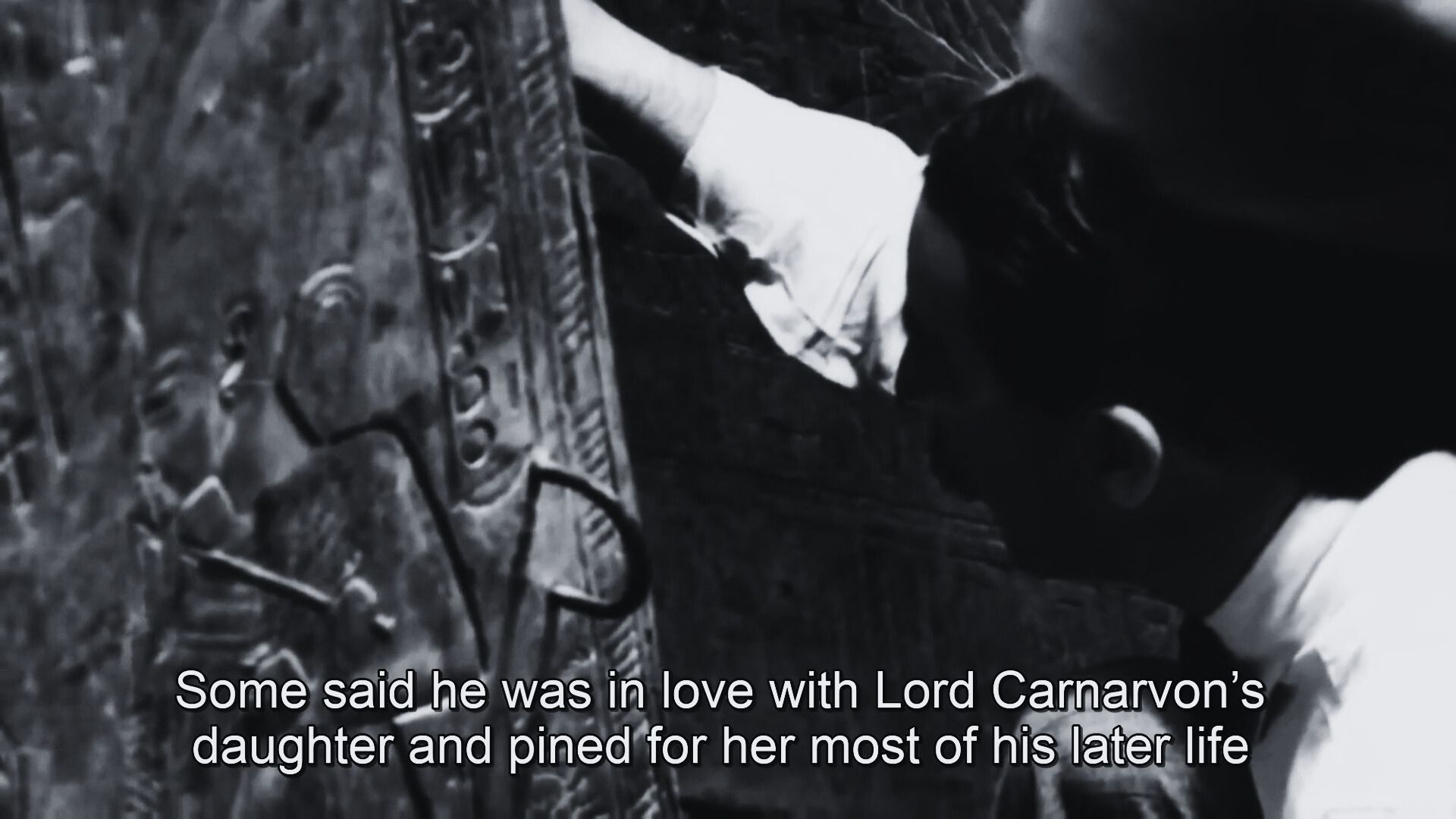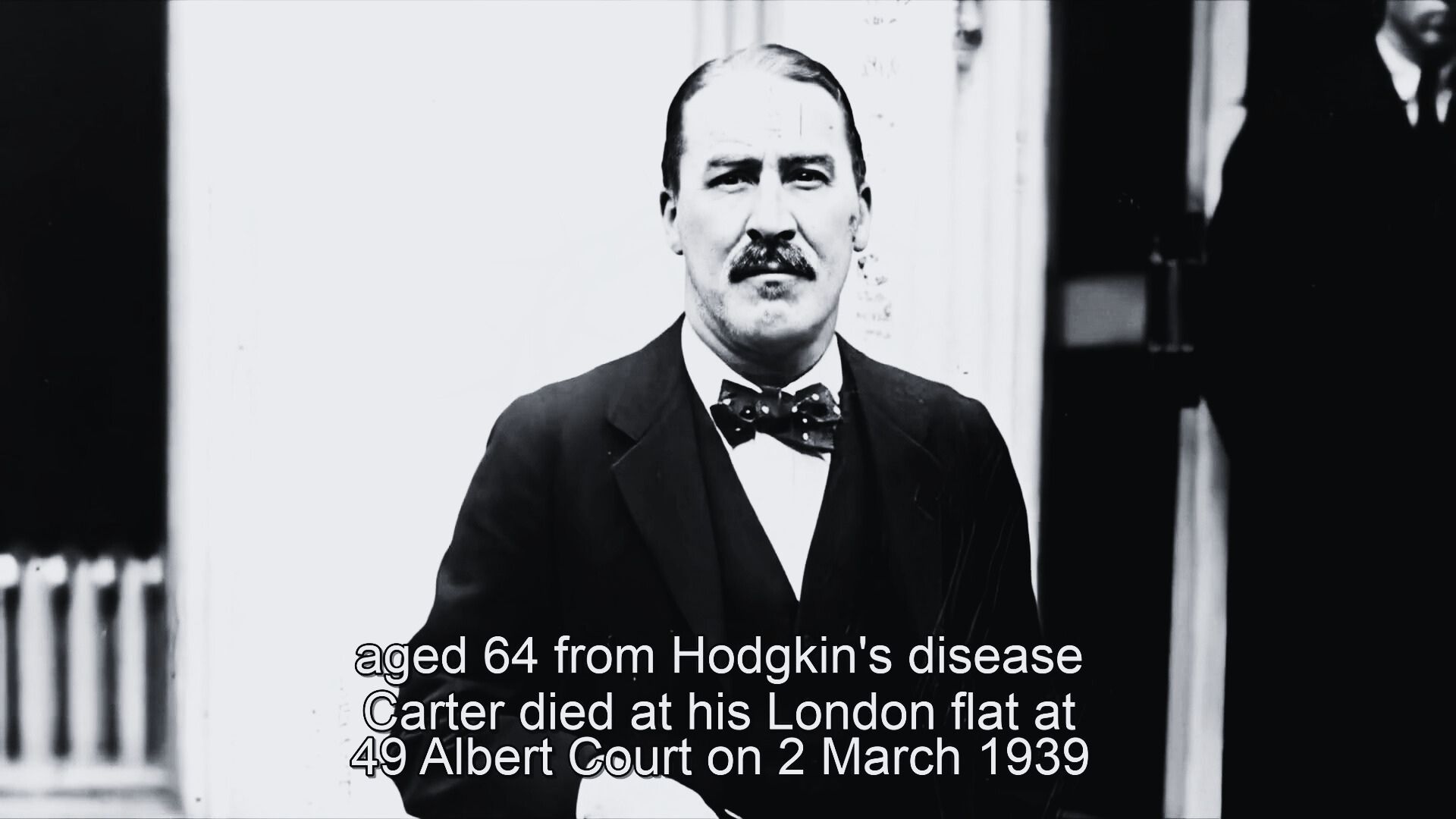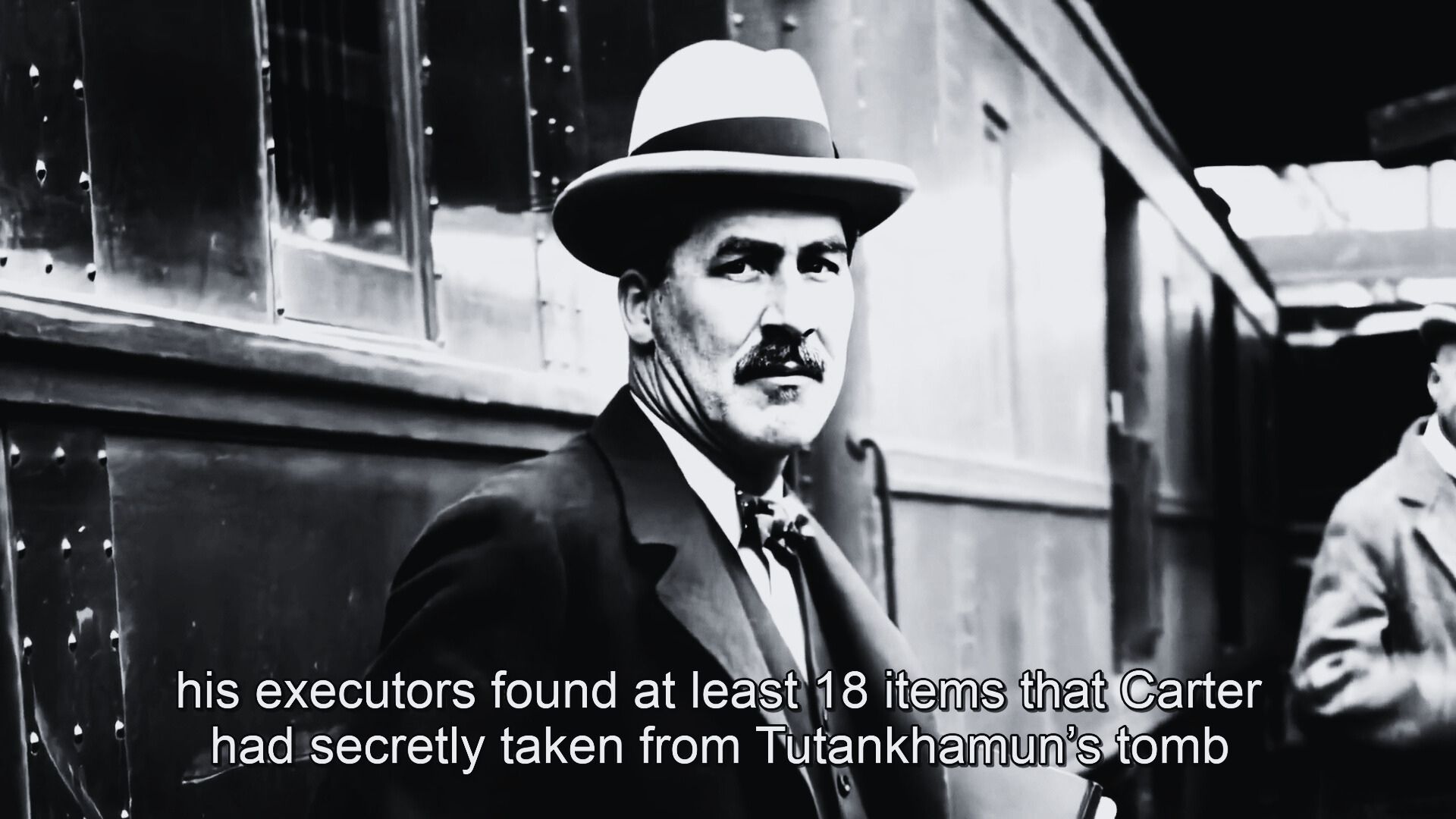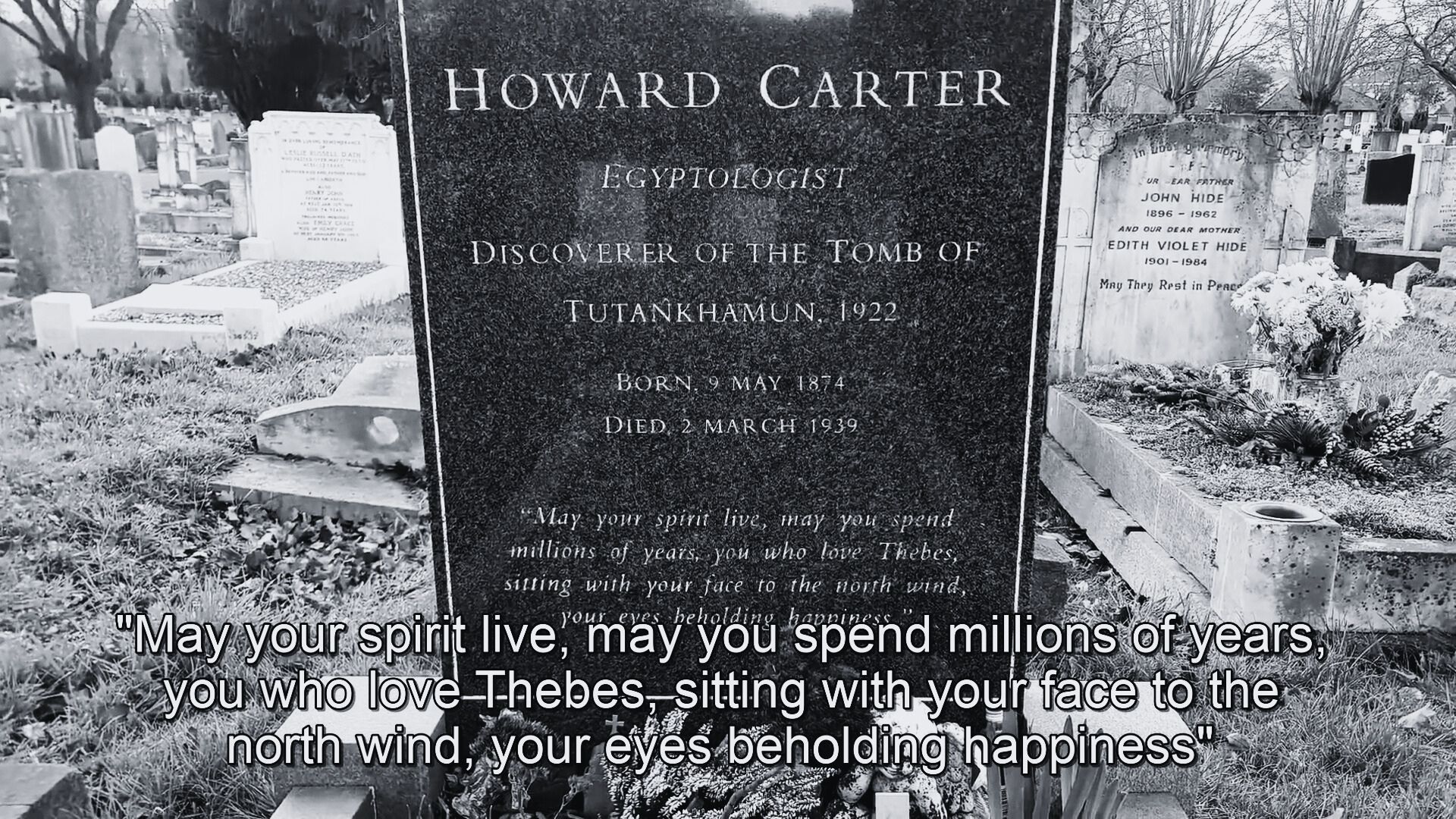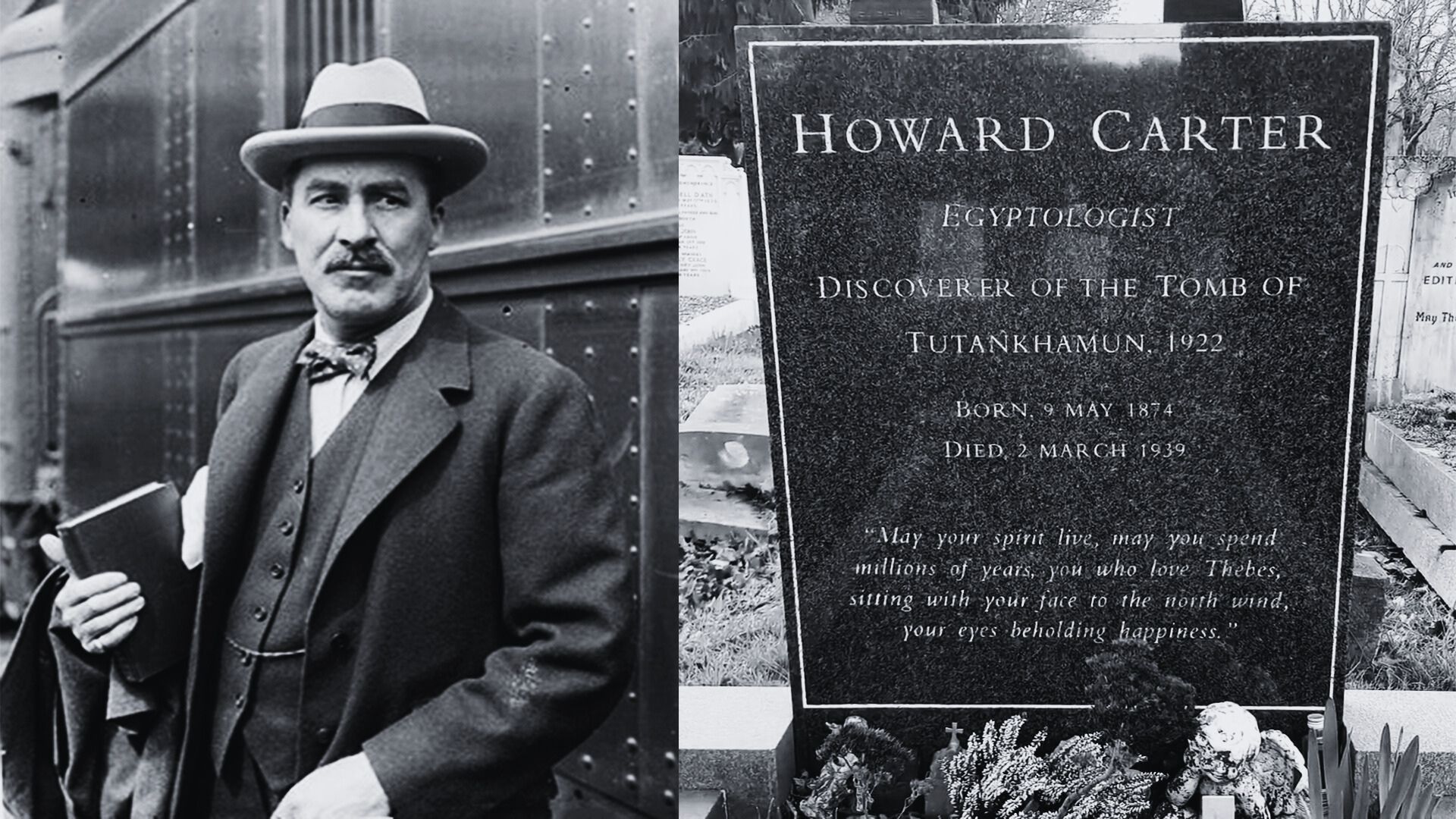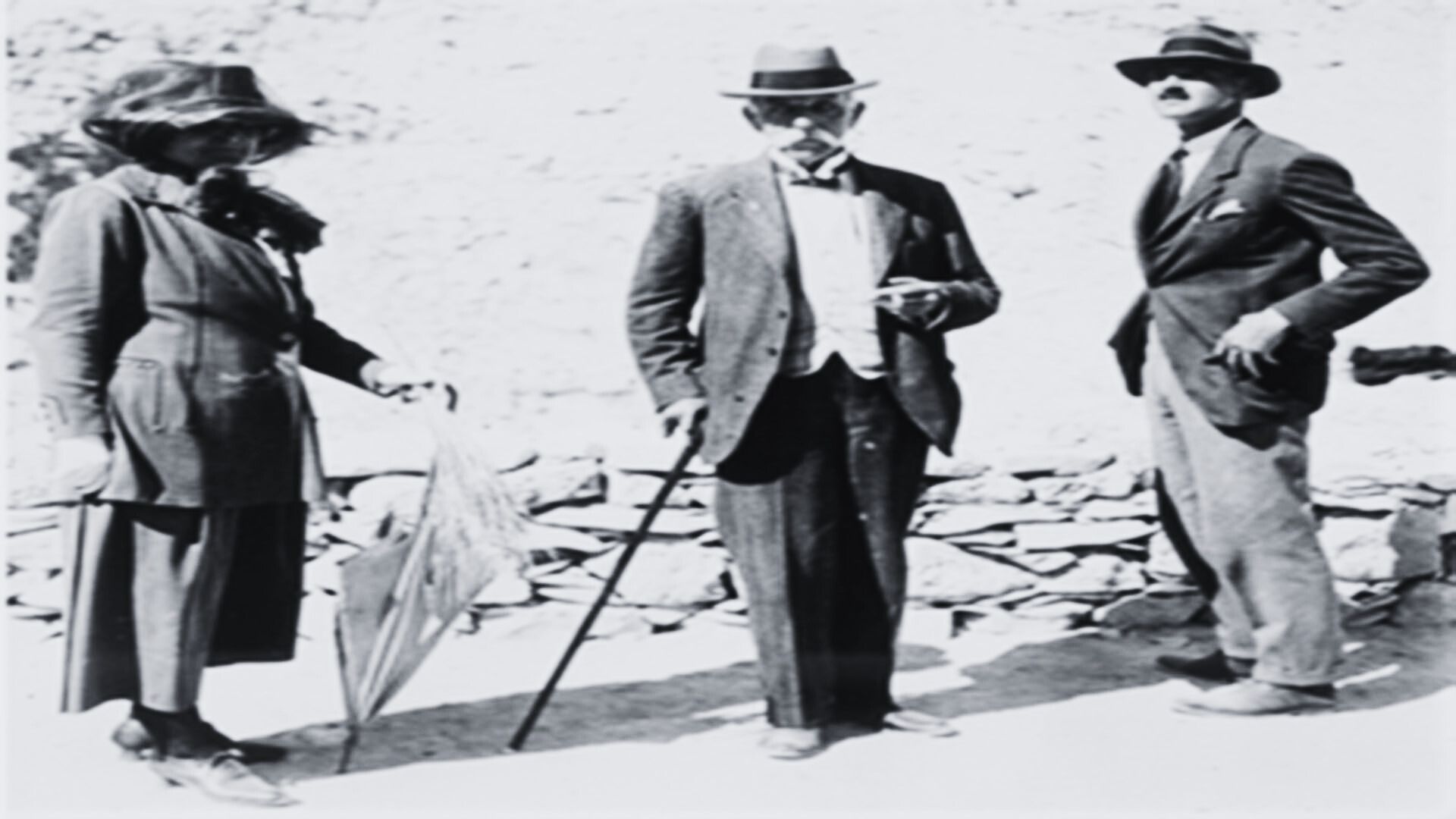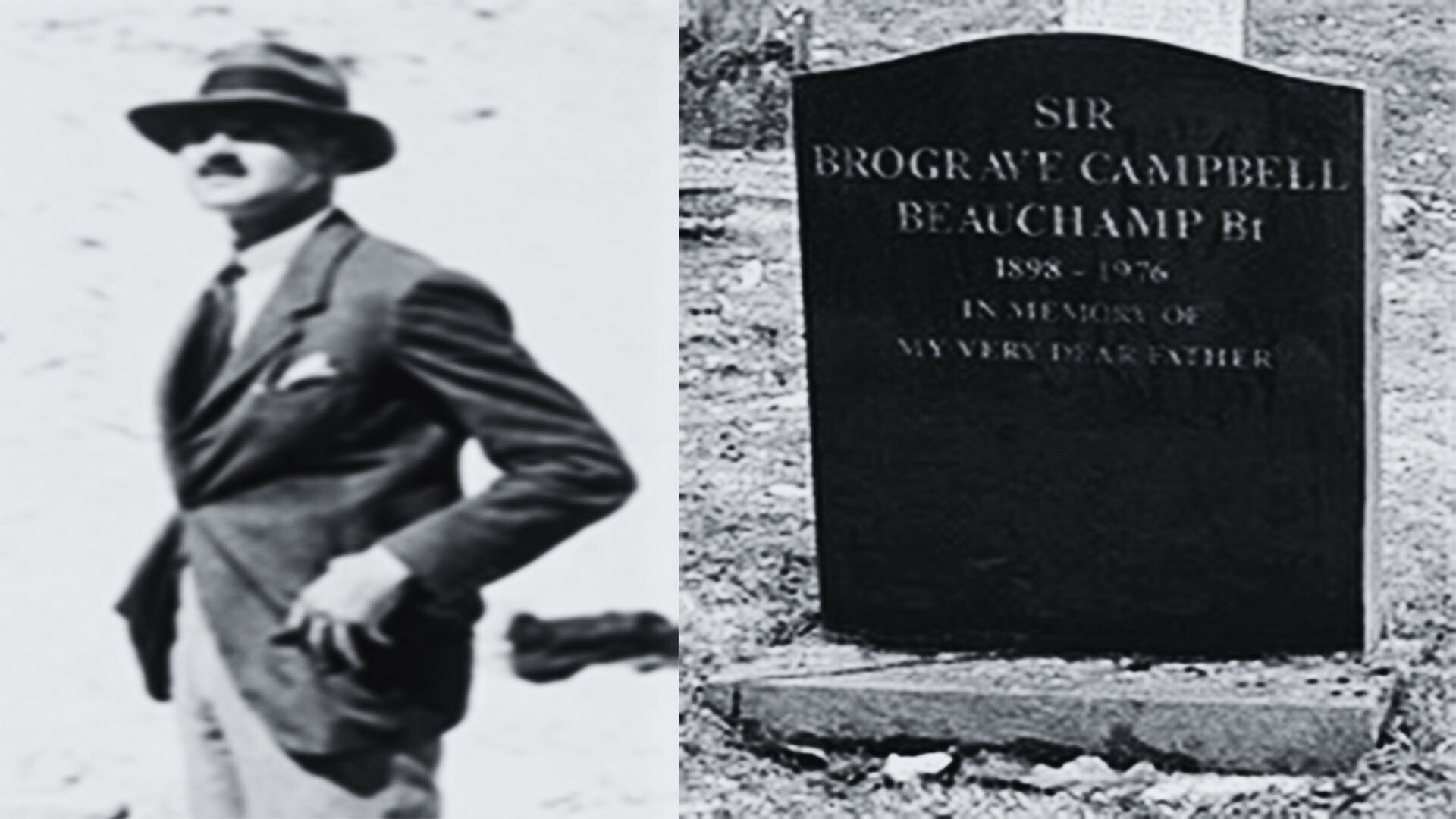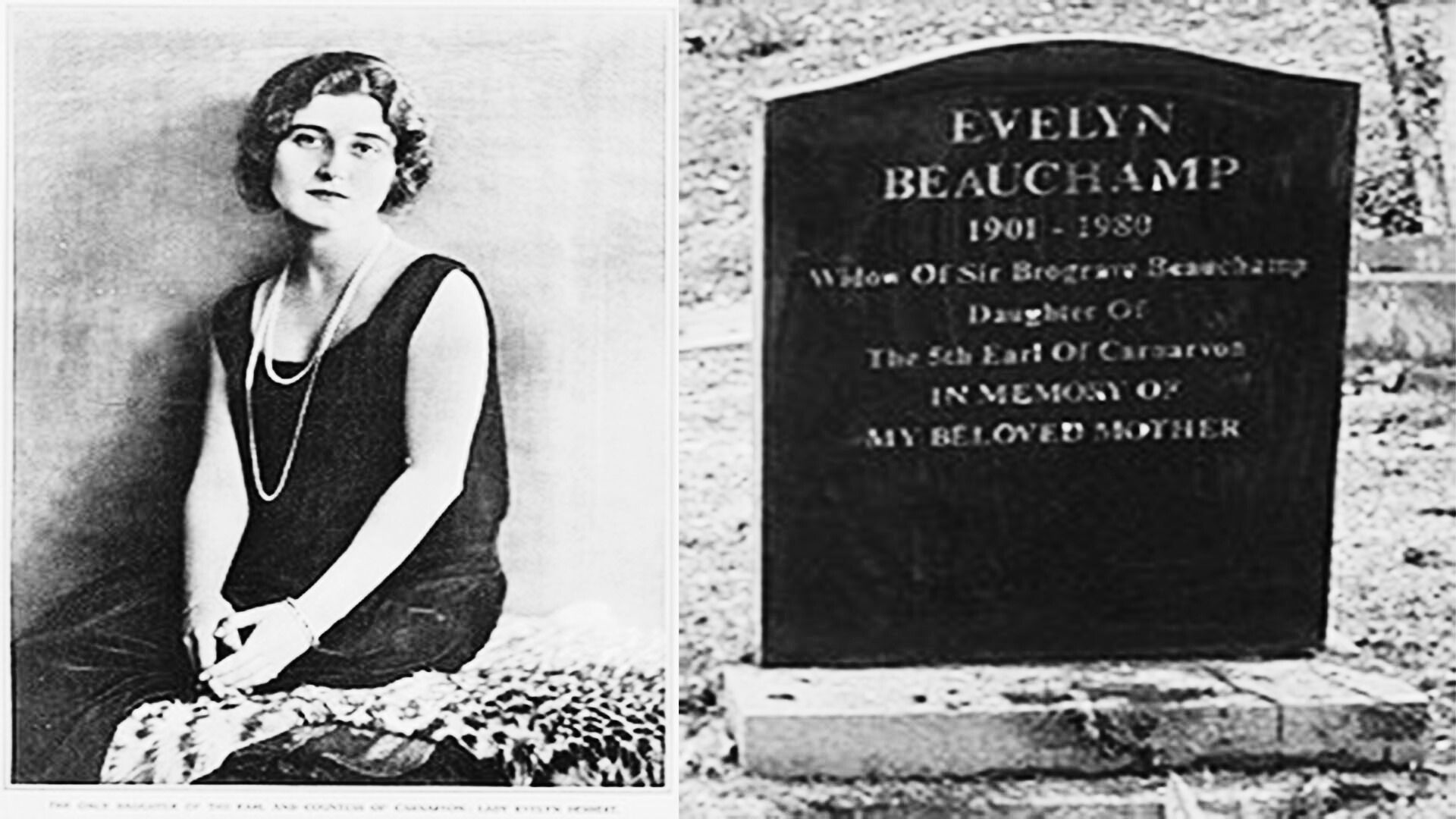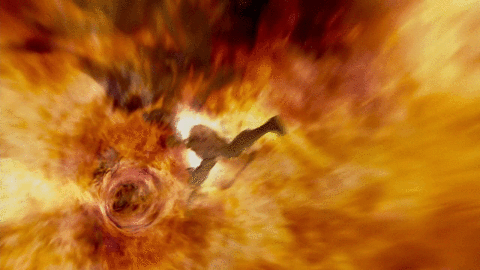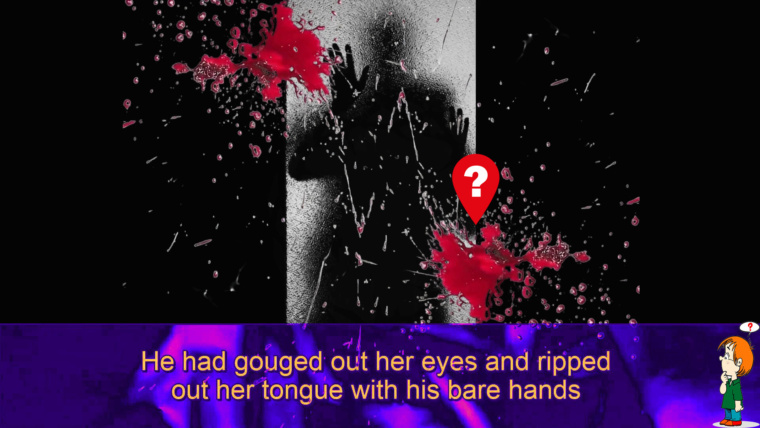GOD’S EXORCISM
YOUR SITUATION
Share To Action
George Edward Stanhope Molyneux Herbert, 5th Earl of Carnarvon was born at the family home, Highclere Castle, in Hampshire, England, on June 26, 1866.
He was educated at Eton and Trinity College, Cambridge, succeeding to the “Carnarvon” title in 1890. Lord Carnarvon married Almina Victoria Maria Alexandra Wombwell, alleged to be the illegitimate daughter of millionaire banker Alfred de Rothschild, of the Rothschild family, at St. Margaret’s Church.
Exceedingly wealthy, Lord Carnarvon was at first best-known as an owner of racehorses and as a reckless driver of early automobiles.
In 1903, he suffered a serious motoring accident near Bad Schwalbach in Germany, after which he never fully recovered his health. After a lengthy convalescence, his doctors advised that he winter out of England.
Cairo seemed perfectly suited to his delicate health, but he also found it to be rather dull. He, therefore, took up Egyptology as a hobby to help him pass away the winter days, little realizing at the time how much it would come to dominate his life, and for that matter, his future fame.
He soon moved into the Winter Palace in Luxor from where he might oversee the excavations of a small concession he had been given, based on a request of Lord Cromer, in the area of Sheikh Abd el-Qurna, an unpromising site assigned to him in an attempt to cool his amateur archaeological ambitions.
In 1907, Lord Carnarvon undertook to sponsor the excavation of nobles’ tombs in Deir el-Bahri, near Thebes.
He employed Howard Carter to undertake the work, on the recommendation of Gaston Maspero, director of the Egyptian Antiquities Department.
In 1912, Carnarvon published Five Years’ Exploration at Thebes, co-written with Carter, describing their excavations.
In 1914, Lord Carnarvon received the concession to dig in the Valley of the Kings, replacing Theodore Davis who had resigned.
Carter again led the work, undertaking a systematic search of the Valley for any tombs missed by previous expeditions, in particular that of the Pharaoh Tutankhamun.
Excavations were interrupted during the First World War, but resumed in late 1917.
By 1922, little of significance had been found and Lord Carnarvon decided this would be the final year he would fund the work.
However, on 4 November 1922, Carter was able to send a telegram to Lord Carnarvon, in England, saying: “At last we have made wonderful discovery in Valley; a magnificent tomb with seals intact; re-covered same for your arrival; congratulations”.
Lord Carnarvon, accompanied by his daughter Lady Evelyn Herbert, returned to Egypt, arriving at Luxor on 23 November 1922.
Both were present the next day when the full extent of the stairway to the tomb was cleared and a seal containing Tutankhamun’s cartouche found on the outer doorway. This door was removed and the rubble filled corridor behind cleared, revealing the door of the tomb itself.
Carnarvon was also present when, on 26 November, Carter made a tiny breach in the top left hand corner of this doorway, enabling him to peer in by the light of a candle. When Carnarvon asked, “Can you see anything?” Carter replied “Yes, wonderful things!”.
The tomb was then secured, to be entered in the presence of an official of the Egyptian Department of Antiquities the next day.
However, that night, Carter, his assistant Arthur Callender, Carnarvon and Lady Evelyn apparently made an unauthorised visit, becoming the first people in modern times to enter the tomb.
Some sources suggest that the group also entered the inner burial chamber. In this account, a small hole was found in the chamber’s sealed doorway and Carter, Carnarvon and Lady Evelyn crawled through.
The next morning, 27 November, saw an inspection of the tomb in the presence of an Egyptian official.
Callender rigged up electric lighting, illuminating a vast haul of items, including gilded couches, chests, thrones, and shrines.
They also saw evidence of two further chambers, including the sealed doorway to the inner burial chamber, guarded by two life-size statues of Tutankhamun.
In spite of evidence of break-ins in ancient times, the tomb was virtually intact, and would ultimately be found to contain over 5,000 items.
On 29 November, the tomb was officially opened in the presence of a number of invited dignitaries and Egyptian officials.
Lord Carnarvon travelled to England in December 1922, returning in January 1923 to be present at the official opening of the inner burial chamber on 16 February.
Following the official opening of the tomb’s burial chamber and all of the excitement that surrounded it, Lord Carnarvon departed for Aswan on February 28th for a few day rest.
About this time, he was bitten on the cheek by a mosquito,
which he inadvertently opened up while shaving.
Despite treating the wound, it became infected and he was soon running a temperature.
He allowed his daughter to confine him to bed rest, which seemed to help, for two days later he was up and about again.
However, he suffered a relapse almost immediately,
and arrangements were made for him to be moved to the Continental-Savoy in Cairo.
According to contemporaneous reports, by blood poisoning progressing to pneumonia which was to mean his end.
There was enough time for Lady Carnarvon, accompanied by her husband’s physician, Dr. Johnson, to arrive by air in a Puss Moth from England,
soon to also be joined by their son, Lord Porchester. But on the morning of April 5th, it was all over. Carter records in his diary that, “Poor Ld. C. died during the early hours of the morning”.
It is said that x-rays of Tutankhamun showed that he had a small scar on his cheek in exactly the same place where Lord Carnarvon was bitten.
His death soon attracted speculation that something more than infectious disease was at work.
Works of fiction in which Egyptian spirits or reanimated mummies exact revenge upon those who disturb their tombs first appeared in the late nineteenth century. This fictional trope came to be known as the “mummy’s curse” or “curse of the pharaohs”
Several people, such as the author Marie Corelli and a psychic known as Cheiro, claimed to have warned Carnarvon of mortal peril before his death.
Arthur Weigall, a former Egyptologist who was now the Daily Mail correspondent on the tomb, said he had observed Carnarvon joking as he entered the tomb and remarked “If he goes down in that spirit, I give him six weeks to live!”
Later accounts, such as the recollections of the anthropologist Henry Field, claimed that an ancient text wishing death upon violators of the tomb was inscribed over its doorway or on an object within.
No written curse has ever been documented in Tutankhamun’s tomb, and although some Egyptian tombs did contain such curses, most are from non-royal tombs that predate Tutankhamun by centuries.
The rumors of the ‘curse’ have plagued Tutankhamun’s tomb since it was opened in 1923.
Any deaths or unusual events connected with the tomb were treated as possible results of the curse.
If the Carnarvon family thought the ‘curse’ had died along with the man who had funded the evacuation, they were very wrong. More deaths seemed to compound the belief that a curse existed.
Susie: according to family members of Lord Carnarvon his dog Susie let out a howl of anguish at precisely the same time Carnarvon died and then died herself. What makes this so spooky is that Susie was back at home in England some 3,500 miles away.
Cairo Blackout Deaths: the story goes that on the night that Lord Carnarvon died there was an unexplained blackout in Cairo. The following morning two bodies were found that some curse researchers claim were Egyptian laborers who had worked on the dig with Howard Carter.
The brother of the main financier, Audrey Herbert, died from a mysterious death. With no serious health problems before, Herbert became blind just months after the opening of the tomb. The doctors believed that his rotten, infected teeth were interfering with his vision, causing him to go totally blind. In an effort to save him, they pulled every single tooth from his mouth. However, since the diagnose was wrong, it didn’t work. As a result of the operation, he suffered blood poisoning, and died because of that. Herbert died just five months after Lord Carnarvon, his brother.
Prince Ali Kamel Fahmy Bey: he was a 23-year-old Egyptian prince who was shot by his French wife of six months – Marie Marguerite – on the 10th of July 1923 at the Savoy Hotel. Shortly before this event he had visited the tomb of King Tutankhamun and had his photograph taken there.
Ahmed Kamal Bey (Pasha) was Egypt’s first Egyptologist and a scientific pioneer in his own country. He visited the tomb of Tutankhamun and died shortly afterwards probably from a lung infection.
A wealthy American financier, George Jay Gould, was also a railroad executive, leading the Western Pacific Railroad, Denver and Rio Grande Western Railroad, and the Manhattan Railway. He visited King Tut’s tomb in 1923, contracted a fever during his visit, and got worse immediately afterward. He never fully recovered, and a few months after his visit, he died of pneumonia.
Archibald Douglas Reid: proving that you didn’t have to be one of the excavators or expedition backers to fall victim to Tutankhamun’s curse, Sir Archibald Douglas Reid, a radiologist, merely X-rayed the mummy before it was removed to the Museum of Cairo. According to many sources, he fell ill the morning after the X-rays had been completed. By the 15th of January 1924 – within just three weeks – he was dead of an unidentified illness.
Hugh Evelyn-White (1874-1924) was an English archaeologist and coptologist. He was educated at King’s School, Ely. In 1909 he joined the Metropolitan Museum of New York’s expedition to Egypt, remaining with them until 1922, except for a period when he served in World War I. He was one of the first to enter the mortuary chamber, where the mummy of the pharaoh was found. He returned to Leeds in England and worked as a lecturer at the University. In 1924 he died by suicide, he wrote a letter allegedly in his own blood: “I have succumbed to a curse which forces me to disappear.”
Sir Lee Stack, Governor-General of the Anglo-Egyptian Sudan, was one of the first people to visit the tomb of Tutankhamun. Six months later while he was being driven from the Egyptian War Office in Cairo to his official residence, he was shot multiple times by a group of students. He died of his wounds three days later on the 19th of November 1924.
Professor Aaron Ember was one of the leading Egyptologists in the United States and was recognized in Europe as an expert on ancient Egypt. He was head of the department of Egyptology at the Johns Hopkins University. He died on 1st June 1926 after his house caught fire and he delayed leaving until he had rescued an original version of the Egyptian Book of the Dead he’d been working on. Some say it was a book sent to him by Howard Carter.
Arthur Cruttenden Mace was a member of Howard Carter’s team during the discovery of Tutankhamun’s tomb (KV62) in 1922, and provided an invaluable help to Carter during both the excavations and the drafting of the first volume of The Tomb of Tutankhamun. In 1924 his health started to mysteriously deteriorate, and he left Egypt never to return. He died on 6 April 1928 after having written a letter claiming that he was being poisoned by arsenic.
Bruce Ingham: the fact is that Bruce had nothing to do with the tomb, the discovery or the opening. He was merely “infected” by the curse just by being a friend with Howard Carter. He received a gift from his friend Howard Carter some years after the discovery of the tomb. It turned out to be a paperweight made from a mummified hand wearing a scarab bracelet that was allegedly inscribed with “Cursed be he who moves my body. To him shall come fire, water and pestilence.” Within a short time, Sir Bruce’s house burned down. When he set about having it rebuilt a flood washed away the new foundations. The new house was finally built and mysteriously burned down again.
Richard Bethell, Howard Carter’s personal secretary died on November 15, 1929 at the London Mayfair Gentleman’s Club. He was discovered smothered in his room. Some suggested that it was the curse at work since Bethell’s home had experience a series of small fires after some of the treasures from the tomb were “stored” there.
Bethell’s father, Richard Luttrell Pilkington Bethell, 3rd Baron Westbury was also thought to be a victim of the curse. The Baron killed himself by jumping off the 7th floor of his apartment building on February 20, 1930. It was reported that several of the tomb’s treasures had also been stored there. Bethell’s suicide note read, in part, “I really cannot stand any more horrors and hardly see what good I am going to do here, so I am making my exit.” His death was ruled “suicide while of unsound mind”. Were the horrors related to the tomb?
Edgar Steele, only four days later (24 February 1930), Edgar Steele, 57, who was in charge of handling the tomb artefacts at London’s British Museum, died at St Thomas’ Hospital after a minor stomach operation.
There is one last twist to the story. It’s often been said that the curse of Tutankhamun was untrue because Howard Carter, the man who actually opened the tomb, lived for another 17 years after its discovery.
However, according to those that knew him, he was often depressed after his discovery and unhappy for most of this time. He never married or had children. Some said he was in love with Lord Carnarvon’s daughter and pined for her most of his later life.
He later contracted Hodgkin’s disease. Carter died at his London flat at 49 Albert Court on 2 March 1939, aged 64 from Hodgkin’s disease.
After his death, his executors found at least 18 items that Carter had secretly taken from Tutankhamun’s tomb.
Most of these were eventually returned to Egypt and the curse seemed to stop claiming victims.
His love for Egypt remained strong, the epitaph on his gravestone reads: “May your spirit live, may you spend millions of years, you who love Thebes, sitting with your face to the north wind, your eyes beholding happiness”, a quotation taken from the Wishing Cup of Tutankhamun, and “O night, spread thy wings over me as the imperishable stars”.
Lady Evelyn had known Howard Carter since she was a child, with Carter often visiting the Carnarvon’s homes in London and Hampshire. From 1920, Evelyn began to accompany her father on his annual winter trips to Egypt, where she and Carter were on friendly terms. While there were later suggestions of a discreet romantic relationship between the two, there is no evidence of any rumour or gossip among those present at the time. Lady Evelyn denied the idea, later telling her daughter Patricia that “at first I was in awe of him, later I was rather frightened of him”, she resenting Carter’s “determination” to come between her and her father. More recently, the 8th Earl of Carnarvon dismissed the story, describing Carter as a “stoical loner”.
Carter died from Hodgkin’s disease aged 64 at his London flat at 49 Albert Court, next to the Royal Albert Hall, on 2 March 1939. He was buried in Putney Vale Cemetery in London on 6 March, nine people attending his funeral.
On 8 October 1923, Lady Evelyn Herbert married Brograve Beauchamp at St Margaret’s, Westminster. They had one child, Patricia Evelyn Beauchamp (11 July 1925 – 7 October 2014). It was a difficult birth, after which Evelyn was told she would not be able to have more children. In 1949 Patricia married Major Michael William Thomas Leatham, and had two sons, Simon Anthony Michael Leatham (born 1951) and Edward Arthur Martyn Leatham (born 1953).
Brograve became a baronet on the death of his father in February 1925. He served as Conservative Member of Parliament for Walthamstow East from 1931 to 1945, and died 25 August 1976 at the age of 79.
In July 1935 she was injured in a serious car accident on her way to Newmarket, Suffolk, and recuperated in the London nursing home established by her mother during the First World War. She later suffered from a number of strokes. Lady Evelyn died in London on 31 January 1980 aged 78, three years after Sir Brograve. She is buried beside her husband in Putney Vale Cemetery in South West London. Howard Carter is also buried at Putney Vale.
Watch Situation Lord Carnarvon: “Something more than infectious disease was at work” now!
Call To Action
From Child Immersed In Hell
To Child Intruded By Entity
1. In 1914, Lord Carnarvon received the concession to dig in the Valley of the Kings, replacing Theodore Davis who had resigned. It is said that x-rays of Tutankhamun showed that he had a small scar on his cheek in exactly the same place where Lord Carnarvon was bitten. His death soon attracted speculation that something more than infectious disease was at work:
From Lord Carnarvon Immersed In Cruelty Hell
To Lord Carnarvon Intruded By Sky Ghost
2. His dog Susie let out a howl of anguish at precisely the same time Carnarvon died and then died herself. What makes this so spooky is that Susie was back at home in England some 3,500 miles away:
From Susie Dog Immersed In Cruelty Hell
To Susie Dog Intruded By Sky Ghost
3. On the night that Lord Carnarvon died there was an unexplained blackout in Cairo. The following morning two bodies were found that some curse researchers claim were Egyptian laborers who had worked on the dig with Howard Carter:
From Egyptian Laborers Immersed In Cruelty Hell
To Egyptian Laborers Intruded By Sky Ghost
4. The brother of the main financier, Audrey Herbert, died from a mysterious death. With no serious health problems before, Herbert became blind just months after the opening of the tomb:
From Audrey Herbert Immersed In Cruelty Hell
To Audrey Herbert Intruded By Sky Ghost
5. Prince Ali Kamel Fahmy Bey was shot by his French wife of six months – Marie Marguerite. Shortly before this event he had visited the tomb of King Tutankhamun and had his photograph taken there:
From Ali Kamel Fahmy Bey Immersed In Cruelty Hell
To Ali Kamel Fahmy Bey Intruded By Sky Ghost
6. Ahmed Kamal Bey (Pasha) was Egypt’s first Egyptologist and a scientific pioneer in his own country. He visited the tomb of Tutankhamun and died shortly afterwards probably from a lung infection:
From Ahmed Kamal Bey Immersed In Cruelty Hell
To Ahmed Kamal Bey Intruded By Sky Ghost
7. A wealthy American financier, George Jay Gould visited King Tut’s tomb, contracted a fever during his visit, and got worse immediately afterward. He never fully recovered, and a few months after his visit, he died of pneumonia:
From George Jay Gould Immersed In Cruelty Hell
To George Jay Gould Intruded By Sky Ghost
8. Sir Archibald Douglas Reid, a radiologist, merely X-rayed the mummy before it was removed to the Museum of Cairo. He fell ill the morning after the X-rays had been completed. He was dead of an unidentified illness:
From Archibald Douglas Reid Immersed In Cruelty Hell
To Archibald Douglas Reid Intruded By Sky Ghost
9. Hugh Evelyn White, English archaeologist and coptologist, was one of the first to enter the mortuary chamber. He died by suicide, wrote a letter allegedly in his own blood: “I have succumbed to a curse which forces me to disappear”:
From Hugh Evelyn White Immersed In Cruelty Hell
To Hugh Evelyn White Intruded By Sky Ghost
10. Sir Lee Stack, Governor-General of the Anglo-Egyptian Sudan, was one of the first people to visit the tomb of Tutankhamun. He was shot multiple times by a group of students. He died of his wounds three days later:
From Lee Stack Immersed In Cruelty Hell
To Lee Stack Intruded By Sky Ghost
11. Professor Aaron Ember, one of the leading Egyptologists in the United States, died after his house caught fire and he delayed leaving until he had rescued an original version of the Egyptian Book of the Dead sent by Howard Carter:
From Aaron Ember Immersed In Cruelty Hell
To Aaron Ember Intruded By Sky Ghost
12. Arthur Cruttenden Mace was a member of Howard Carter’s team during the discovery of Tutankhamun’s tomb. He died after having written a letter claiming that he was being poisoned by arsenic:
From Arthur Cruttenden Mace Immersed In Cruelty Hell
To Arthur Cruttenden Mace Intruded By Sky Ghost
13. Bruce Ingham received a gift from Howard Carter, a paperweight made from a scarab bracelet inscribed with “Cursed be he who moves my body. To him shall come fire, water and pestilence”. His house burned & flooded:
From Bruce Ingham Immersed In Cruelty Hell
To Bruce Ingham Intruded By Sky Ghost
14. Richard Bethell, Howard Carter’s personal secretary, was discovered smothered in his room. Bethell’s home had experience a series of small fires after some of the treasures from the tomb were "stored" there:
From Richard Bethell Immersed In Cruelty Hell
To Richard Bethell Intruded By Sky Ghost
15. Bethell’s father, Richard Luttrell Pilkington Bethell, 3rd Baron Westbury killed himself by jumping off the 7th floor of his apartment building. It was reported that several of the tomb’s treasures had also been stored there:
From Richard Luttrell Pilkington Bethell Immersed In Cruelty Hell
To Richard Luttrell Pilkington Bethell Intruded By Sky Ghost
16. Edgar Steele, only four days later, Edgar Steele, 57, who was in charge of handling the tomb artefacts at London’s British Museum, died at St Thomas’ Hospital after a minor stomach operation:
From Edgar Steele Immersed In Cruelty Hell
To Edgar Steele Intruded By Sky Ghost
17. Lady Evelyn Herbert had known Howard Carter since she was a child, with Carter often visiting the Carnarvon’s homes in London and Hampshire. From 1920, she began to accompany her father on his annual winter trips to Egypt, where Lady Evelyn Herbert and Howard Carter were on friendly terms:
From Lady Evelyn Herbert Immersed In Lust Ground
To Howard Carter Possessed By Naked Human Soul
18. Lady Evelyn Herbert denied the idea, later telling her daughter Patricia that "at first I was in awe of him, later I was rather frightened of him", she resenting Carter's "determination" to come between her and her father. On 8 October 1923, Lady Evelyn Herbert married Brograve Beauchamp at St Margaret's, Westminster:
From Lady Evelyn Herbert Immersed In Lust Ground
To Brograve Beauchamp Possessed By Naked Human Soul
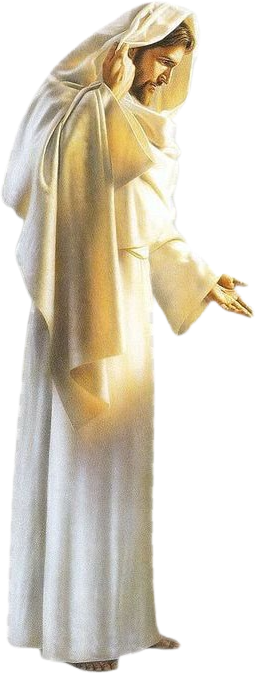
Hold God's Hand
1. In 1914, Lord Carnarvon received the concession to dig in the Valley of the Kings, replacing Theodore Davis who had resigned. It is said that x-rays of Tutankhamun showed that he had a small scar on his cheek in exactly the same place where Lord Carnarvon was bitten. His death soon attracted speculation that something more than infectious disease was at work:
From Awaking "Lord Carnarvon Intruded By Sky Ghost"
And Healing & Saving "Lord Carnarvon Intruded By Sky Ghost"
To Purifying "Lord Carnarvon Immersed In Cruelty Hell"
And Upgrading "Lord Carnarvon Immersed In Cruelty Hell"
2. His dog Susie let out a howl of anguish at precisely the same time Carnarvon died and then died herself. What makes this so spooky is that Susie was back at home in England some 3,500 miles away:
From Awaking "Susie Dog Intruded By Sky Ghost"
And Healing & Saving "Susie Dog Intruded By Sky Ghost"
To Purifying "Susie Dog Immersed In Cruelty Hell"
And Upgrading "Susie Dog Immersed In Cruelty Hell"
3. On the night that Lord Carnarvon died there was an unexplained blackout in Cairo. The following morning two bodies were found that some curse researchers claim were Egyptian laborers who had worked on the dig with Howard Carter:
From Awaking "Egyptian Laborers Intruded By Sky Ghost"
And Healing & Saving "Egyptian Laborers Intruded By Sky Ghost"
To Purifying "Egyptian Laborers Immersed In Cruelty Hell"
And Upgrading "Egyptian Laborers Immersed In Cruelty Hell"
4. The brother of the main financier, Audrey Herbert, died from a mysterious death. With no serious health problems before, Herbert became blind just months after the opening of the tomb:
From Awaking "Audrey Herbert Intruded By Sky Ghost"
And Healing & Saving "Audrey Herbert Intruded By Sky Ghost"
To Purifying "Audrey Herbert Immersed In Cruelty Hell"
And Upgrading "Audrey Herbert Immersed In Cruelty Hell"
5. Prince Ali Kamel Fahmy Bey was shot by his French wife of six months – Marie Marguerite. Shortly before this event he had visited the tomb of King Tutankhamun and had his photograph taken there:
From Awaking "Ali Kamel Fahmy Bey Intruded By Sky Ghost"
And Healing & Saving "Ali Kamel Fahmy Bey Intruded By Sky Ghost"
To Purifying "Ali Kamel Fahmy Bey Immersed In Cruelty Hell"
And Upgrading "Ali Kamel Fahmy Bey Immersed In Cruelty Hell"
6. Ahmed Kamal Bey (Pasha) was Egypt’s first Egyptologist and a scientific pioneer in his own country. He visited the tomb of Tutankhamun and died shortly afterwards probably from a lung infection:
From Awaking "Ahmed Kamal Bey Intruded By Sky Ghost"
And Healing & Saving "Ahmed Kamal Bey Intruded By Sky Ghost"
To Purifying "Ahmed Kamal Bey Immersed In Cruelty Hell"
And Upgrading "Ahmed Kamal Bey Immersed In Cruelty Hell"
7. A wealthy American financier, George Jay Gould visited King Tut’s tomb, contracted a fever during his visit, and got worse immediately afterward. He never fully recovered, and a few months after his visit, he died of pneumonia:
From Awaking "George Jay Gould Intruded By Sky Ghost"
And Healing & Saving "George Jay Gould Intruded By Sky Ghost"
To Purifying "George Jay Gould Immersed In Cruelty Hell"
And Upgrading "George Jay Gould Immersed In Cruelty Hell"
8. Sir Archibald Douglas Reid, a radiologist, merely X-rayed the mummy before it was removed to the Museum of Cairo. He fell ill the morning after the X-rays had been completed. He was dead of an unidentified illness:
From Awaking "Archibald Douglas Reid Intruded By Sky Ghost"
And Healing & Saving "Archibald Douglas Reid Intruded By Sky Ghost"
To Purifying "Archibald Douglas Reid Immersed In Cruelty Hell"
And Upgrading "Archibald Douglas Reid Immersed In Cruelty Hell"
9. Hugh Evelyn White, English archaeologist and coptologist, was one of the first to enter the mortuary chamber. He died by suicide, wrote a letter allegedly in his own blood: “I have succumbed to a curse which forces me to disappear”:
From Awaking "Hugh Evelyn White Intruded By Sky Ghost"
And Healing & Saving "Hugh Evelyn White Intruded By Sky Ghost"
To Purifying "Hugh Evelyn White Immersed In Cruelty Hell"
And Upgrading "Hugh Evelyn White Immersed In Cruelty Hell"
10. Sir Lee Stack, Governor-General of the Anglo-Egyptian Sudan, was one of the first people to visit the tomb of Tutankhamun. He was shot multiple times by a group of students. He died of his wounds three days later:
From Awaking "Lee Stack Intruded By Sky Ghost"
And Healing & Saving "Lee Stack Intruded By Sky Ghost"
To Purifying "Lee Stack Immersed In Cruelty Hell"
And Upgrading "Lee Stack Immersed In Cruelty Hell"
11. Professor Aaron Ember, one of the leading Egyptologists in the United States, died after his house caught fire and he delayed leaving until he had rescued an original version of the Egyptian Book of the Dead sent by Howard Carter:
From Awaking "Aaron Ember Intruded By Sky Ghost"
And Healing & Saving "Aaron Ember Intruded By Sky Ghost"
To Purifying "Aaron Ember Immersed In Cruelty Hell"
And Upgrading "Aaron Ember Immersed In Cruelty Hell"
12. Arthur Cruttenden Mace was a member of Howard Carter’s team during the discovery of Tutankhamun’s tomb. He died after having written a letter claiming that he was being poisoned by arsenic:
From Awaking "Arthur Cruttenden Mace Intruded By Sky Ghost"
And Healing & Saving "Arthur Cruttenden Mace Intruded By Sky Ghost"
To Purifying "Arthur Cruttenden Mace Immersed In Cruelty Hell"
And Upgrading "Arthur Cruttenden Mace Immersed In Cruelty Hell"
13. Bruce Ingham received a gift from Howard Carter, a paperweight made from a scarab bracelet inscribed with “Cursed be he who moves my body. To him shall come fire, water and pestilence”. His house burned & flooded:
From Awaking "Bruce Ingham Intruded By Sky Ghost"
And Healing & Saving "Bruce Ingham Intruded By Sky Ghost"
To Purifying "Bruce Ingham Immersed In Cruelty Hell"
And Upgrading "Bruce Ingham Immersed In Cruelty Hell"
14. Richard Bethell, Howard Carter’s personal secretary, was discovered smothered in his room. Bethell’s home had experience a series of small fires after some of the treasures from the tomb were "stored" there:
From Awaking "Richard Bethell Intruded By Sky Ghost"
And Healing & Saving "Richard Bethell Intruded By Sky Ghost"
To Purifying "Richard Bethell Immersed In Cruelty Hell"
And Upgrading "Richard Bethell Immersed In Cruelty Hell"
15. Bethell’s father, Richard Luttrell Pilkington Bethell, 3rd Baron Westbury killed himself by jumping off the 7th floor of his apartment building. It was reported that several of the tomb’s treasures had also been stored there:
From Awaking "Richard Luttrell Pilkington Bethell Intruded By Sky Ghost"
And Healing & Saving "Richard Luttrell Pilkington Bethell Intruded By Sky Ghost"
To Purifying "Richard Luttrell Pilkington Bethell Immersed In Cruelty Hell"
And Upgrading "Richard Luttrell Pilkington Bethell Immersed In Cruelty Hell"
16. Edgar Steele, only four days later, Edgar Steele, 57, who was in charge of handling the tomb artefacts at London’s British Museum, died at St Thomas’ Hospital after a minor stomach operation:
From Awaking "Edgar Steele Intruded By Sky Ghost"
And Healing & Saving "Edgar Steele Intruded By Sky Ghost"
To Purifying "Edgar Steele Immersed In Cruelty Hell"
And Upgrading "Edgar Steele Immersed In Cruelty Hell"
17. Lady Evelyn Herbert had known Howard Carter since she was a child, with Carter often visiting the Carnarvon’s homes in London and Hampshire. From 1920, she began to accompany her father on his annual winter trips to Egypt, where she and Howard Carter were on friendly terms:
From Awaking "Howard Carter Possessed By Naked Human Soul"
And Healing & Saving "Howard Carter Possessed By Naked Human Soul"
To Purifying "Lady Evelyn Herbert Immersed In Lust Ground"
And Upgrading "Lady Evelyn Herbert Immersed In Lust Ground"
18. Lady Evelyn Herbert denied the idea, later telling her daughter Patricia that "at first I was in awe of him, later I was rather frightened of him", she resenting Carter's "determination" to come between her and her father. On 8 October 1923, Lady Evelyn Herbert married Brograve Beauchamp at St Margaret's, Westminster:
From Awaking "Brograve Beauchamp Possessed By Naked Human Soul"
And Healing & Saving "Brograve Beauchamp Possessed By Naked Human Soul"
To Purifying "Lady Evelyn Herbert Immersed In Lust Ground"
And Upgrading "Lady Evelyn Herbert Immersed In Lust Ground"
